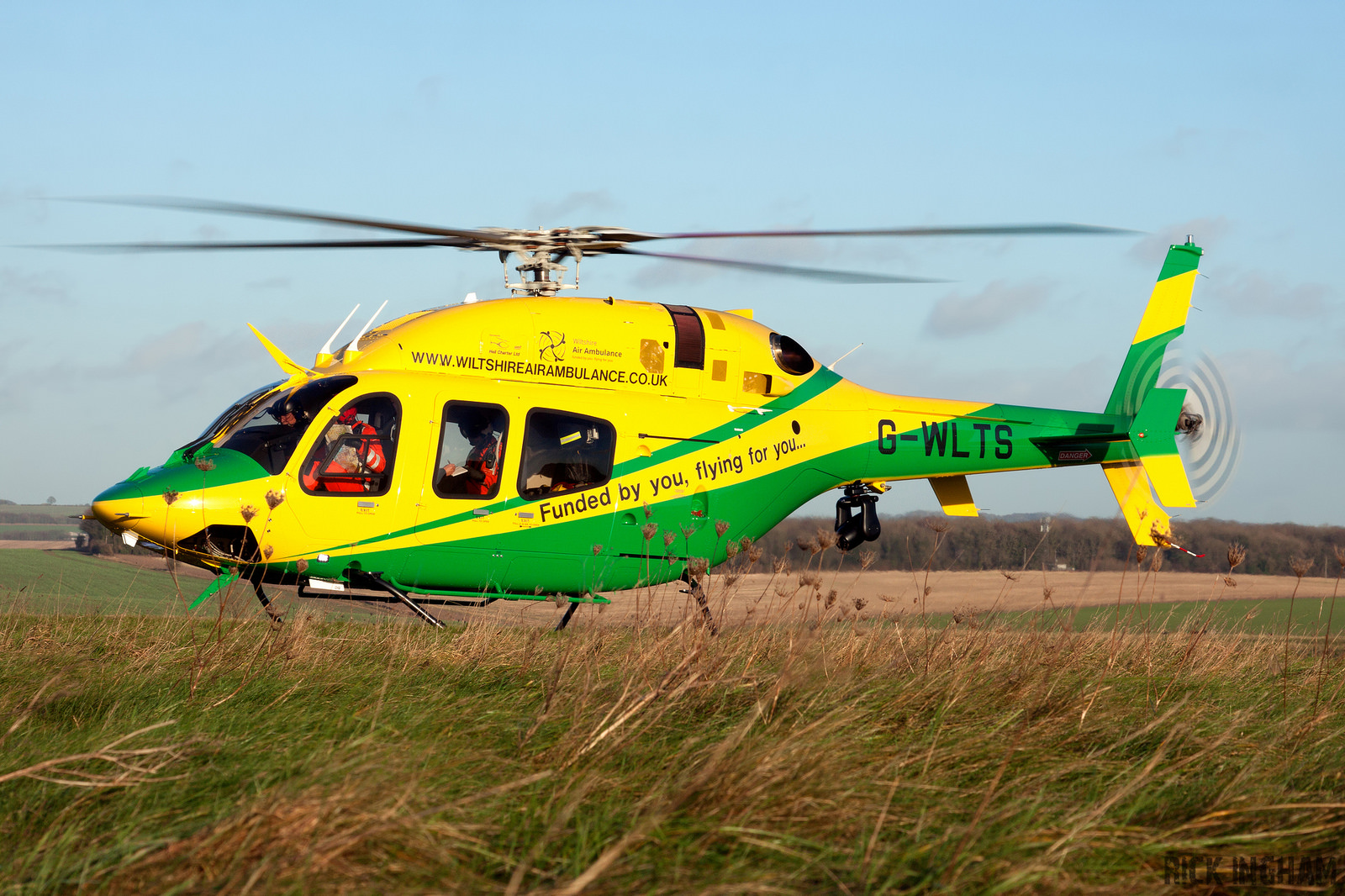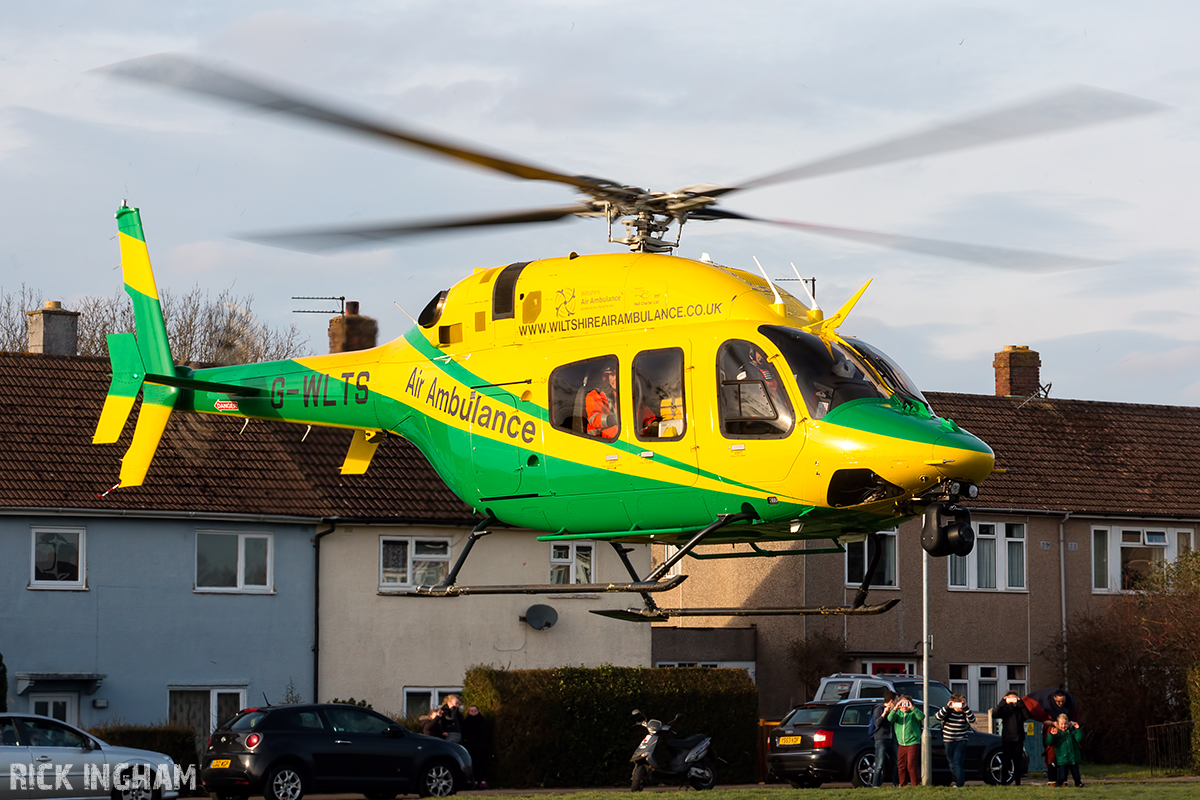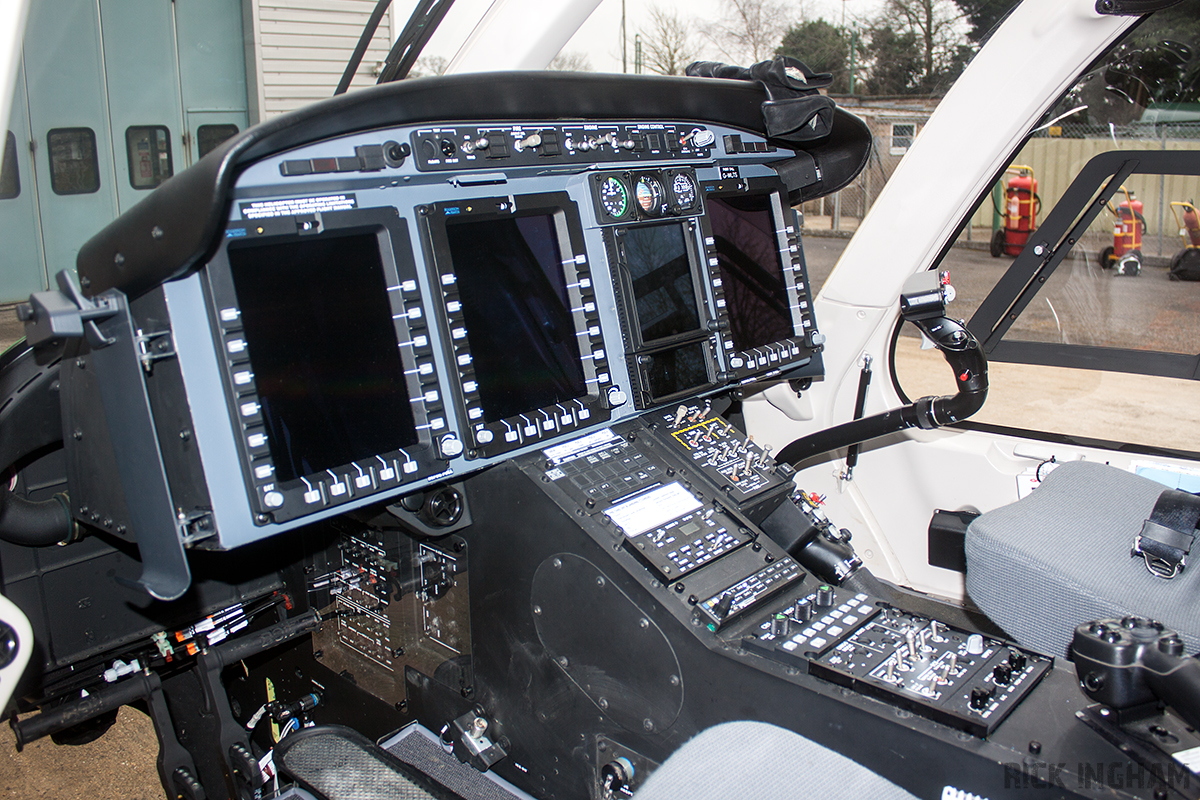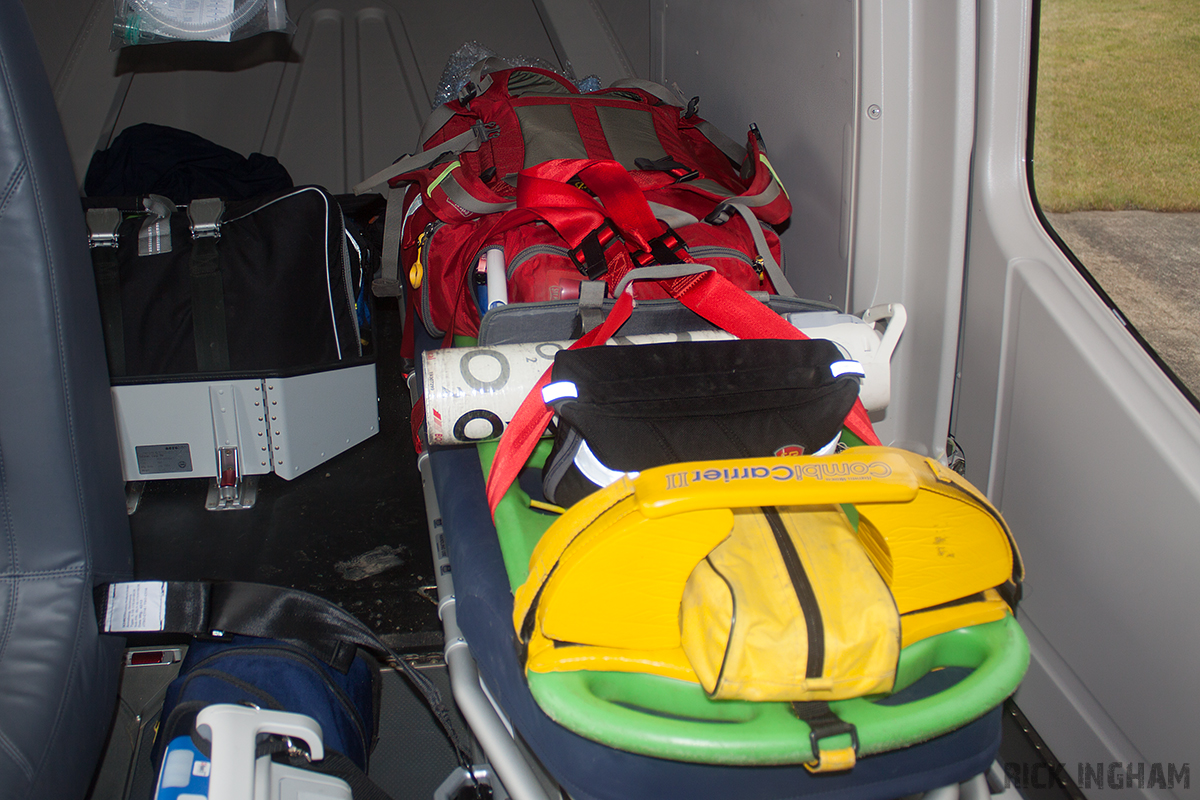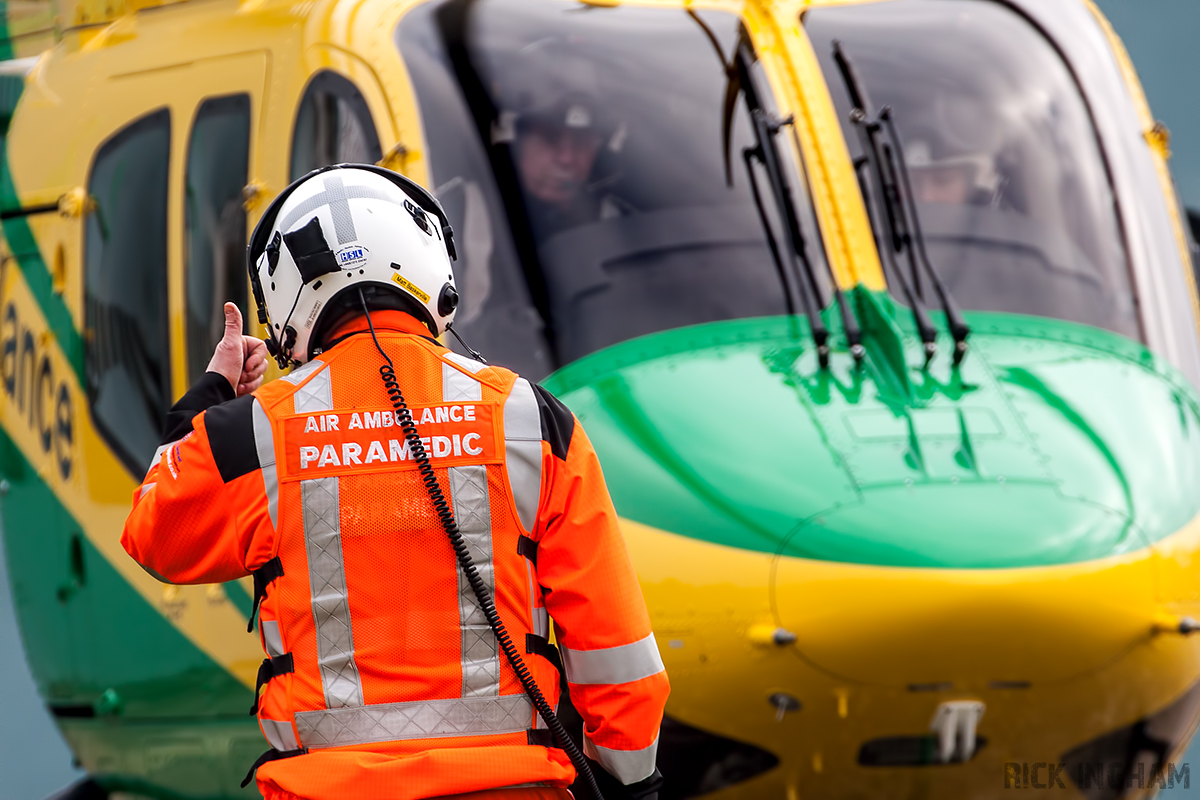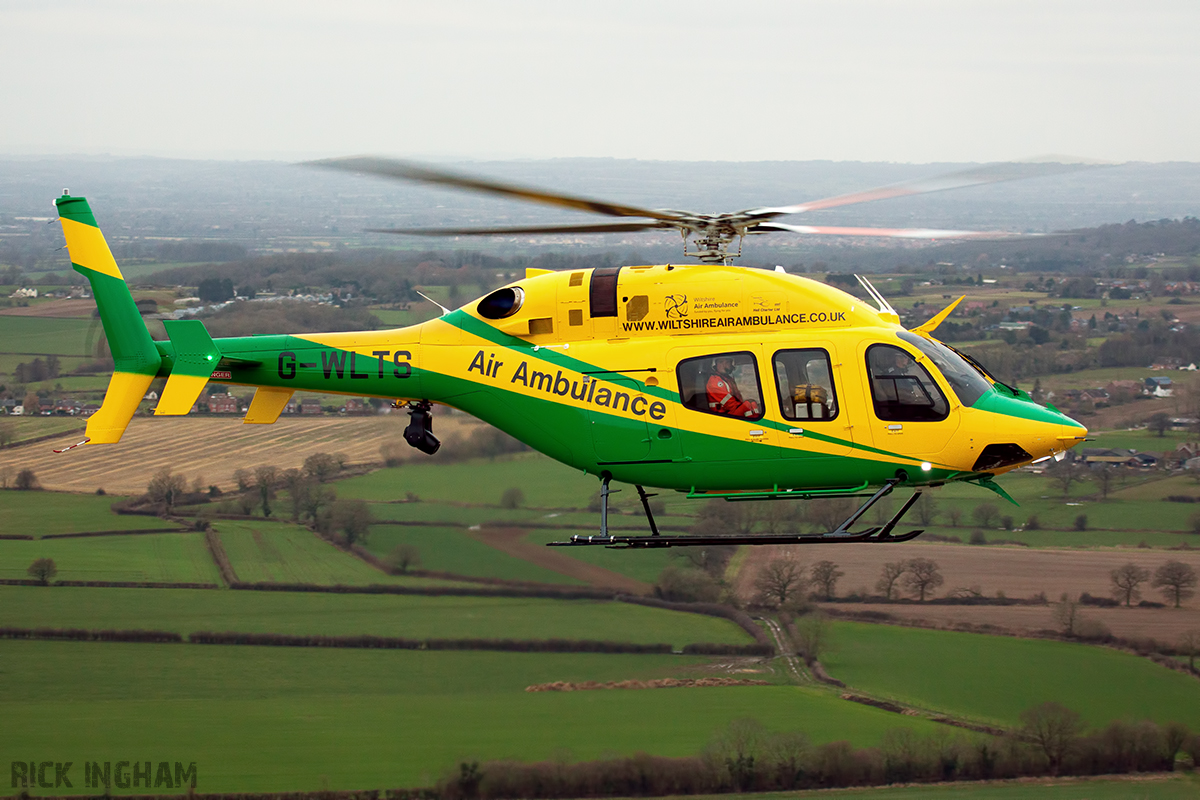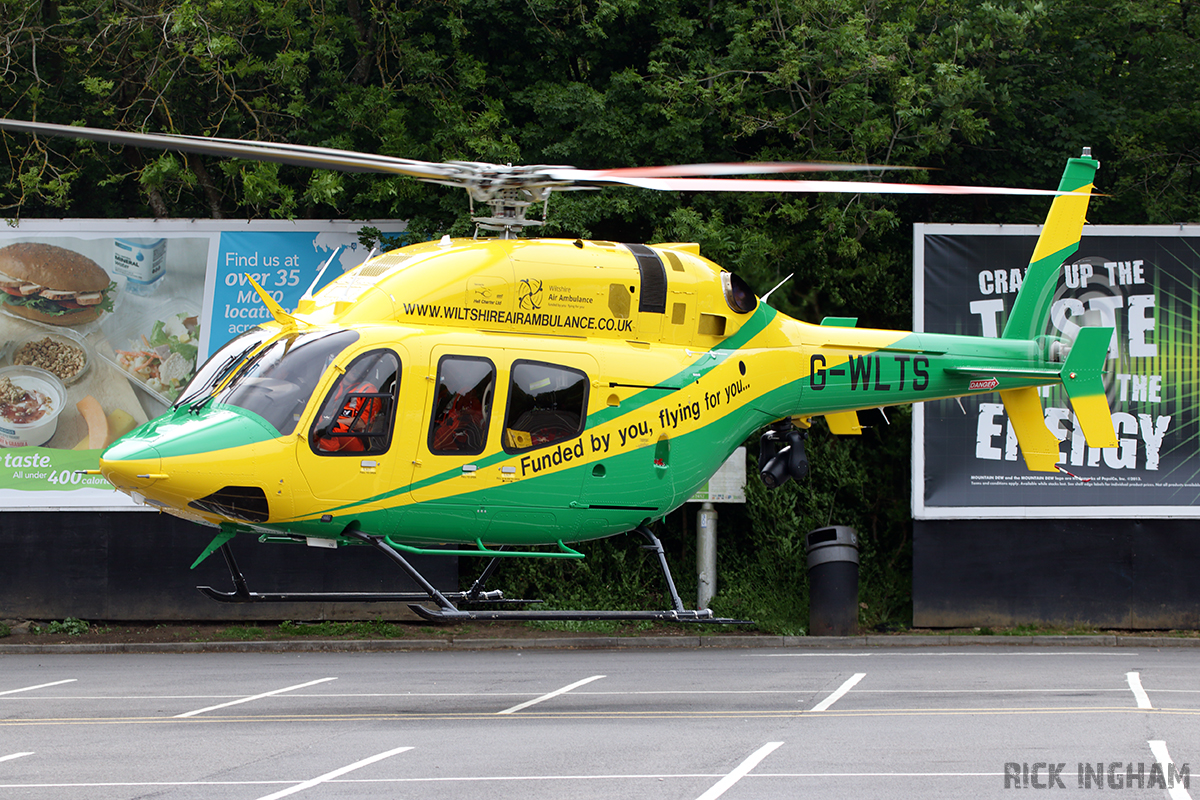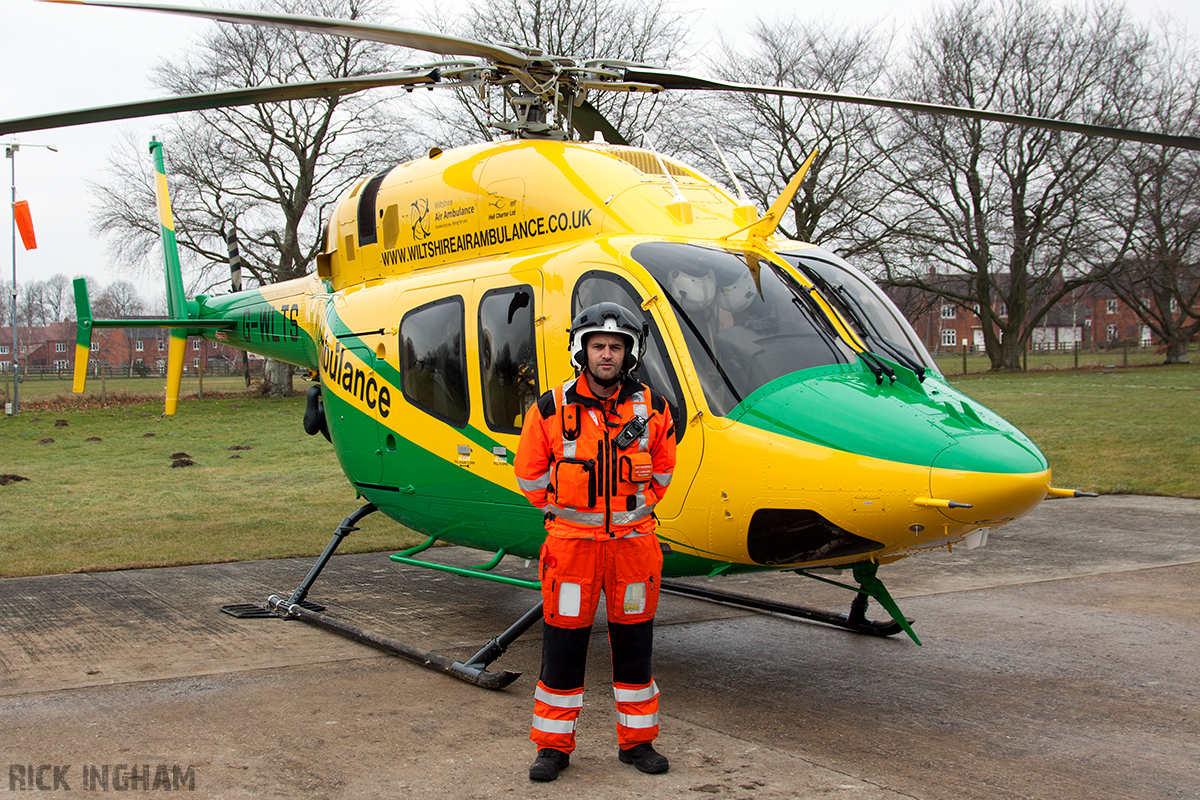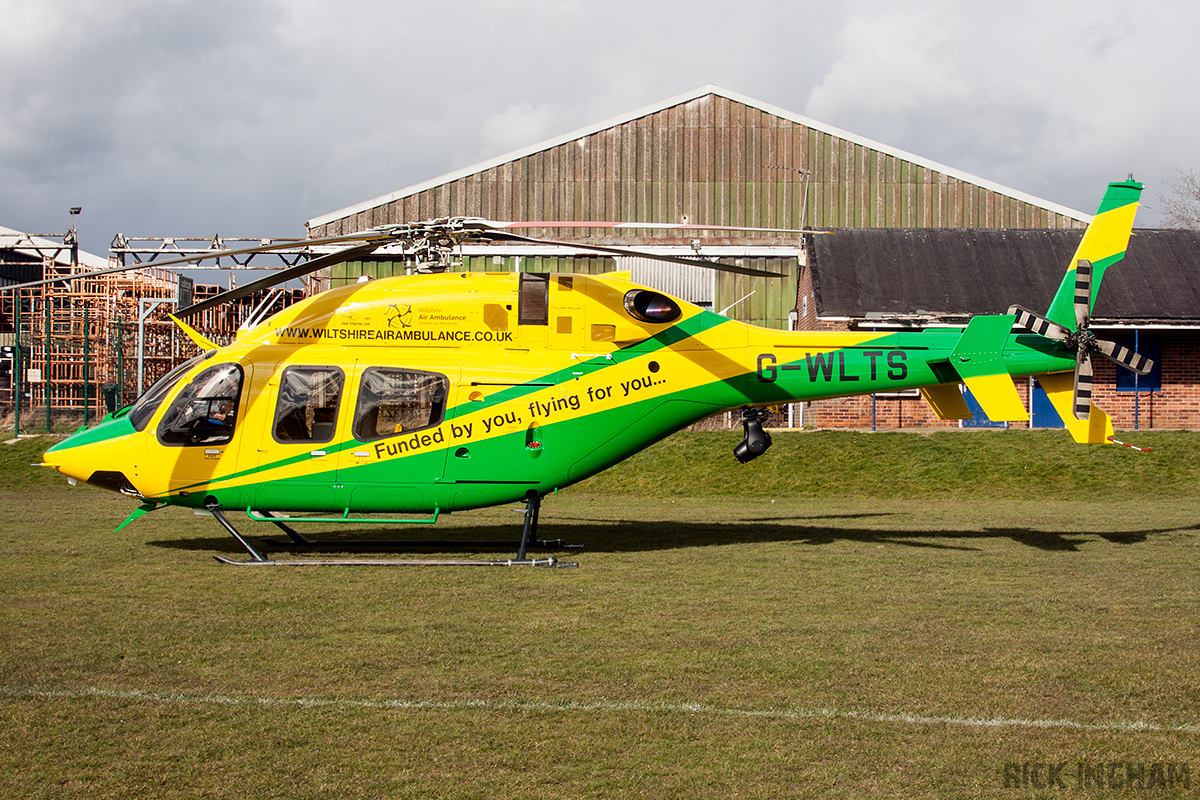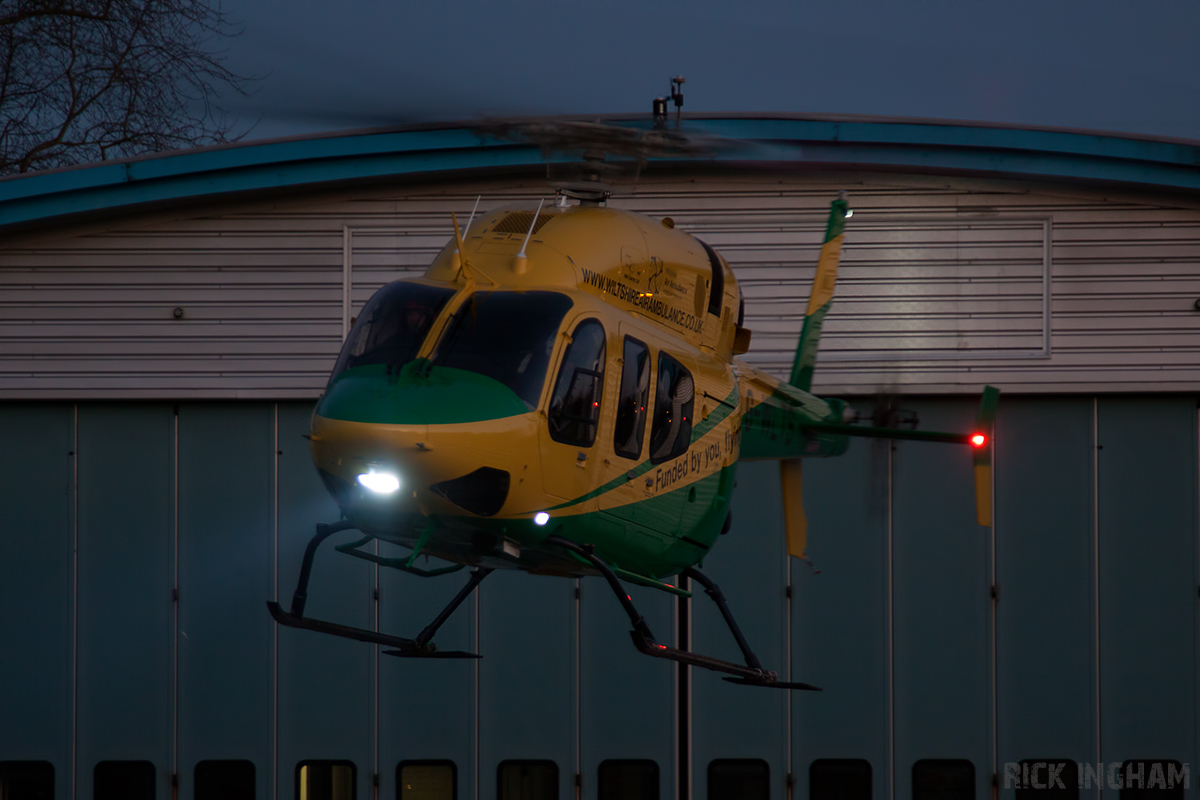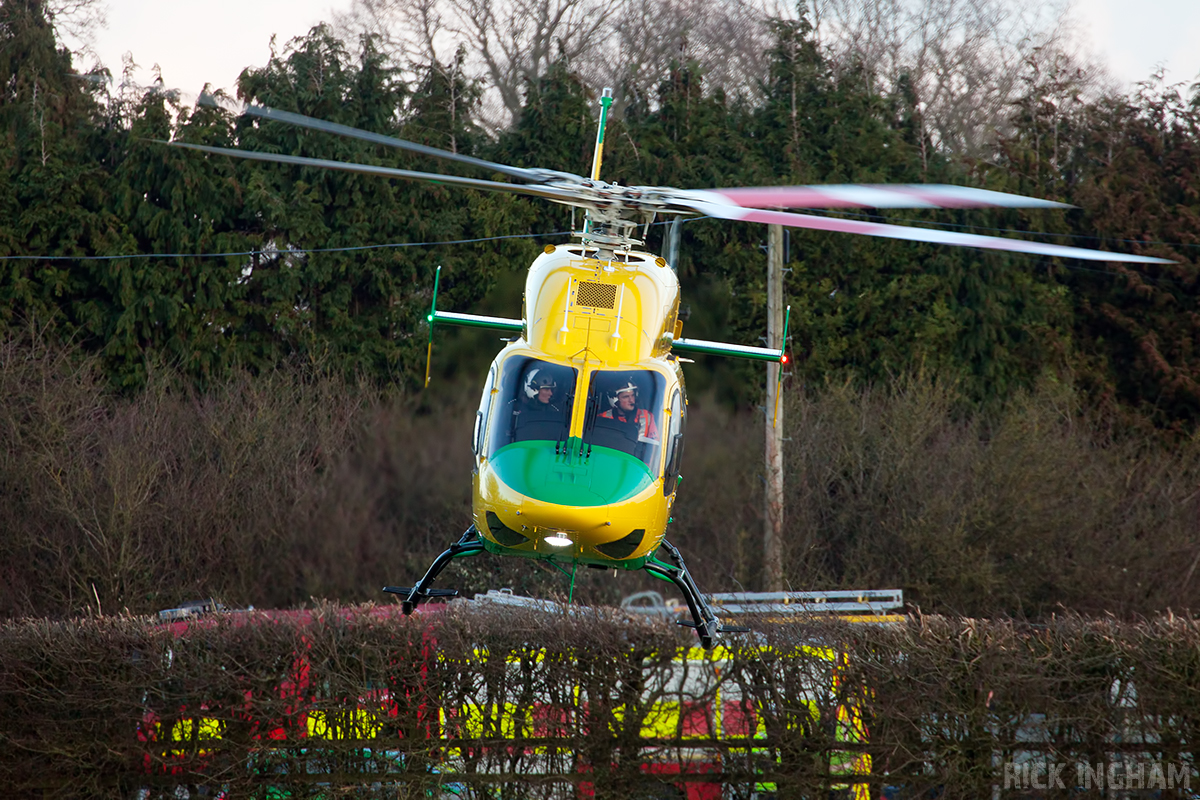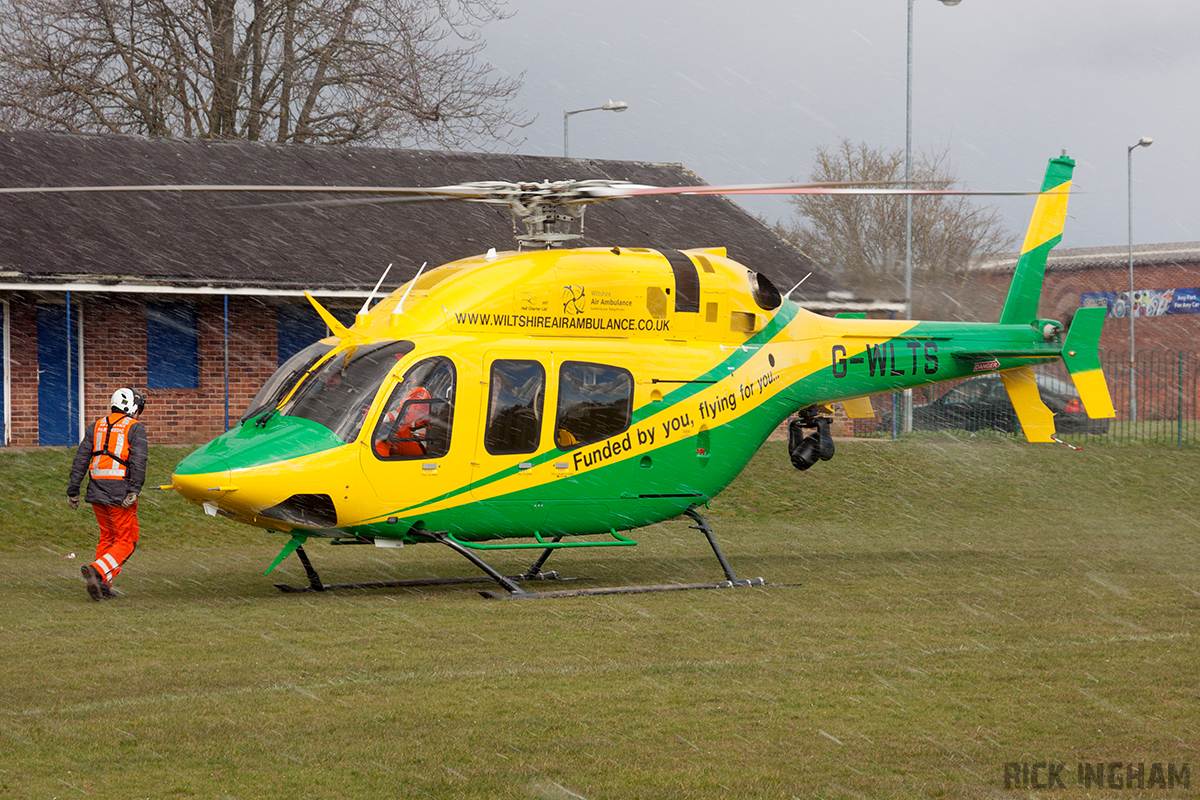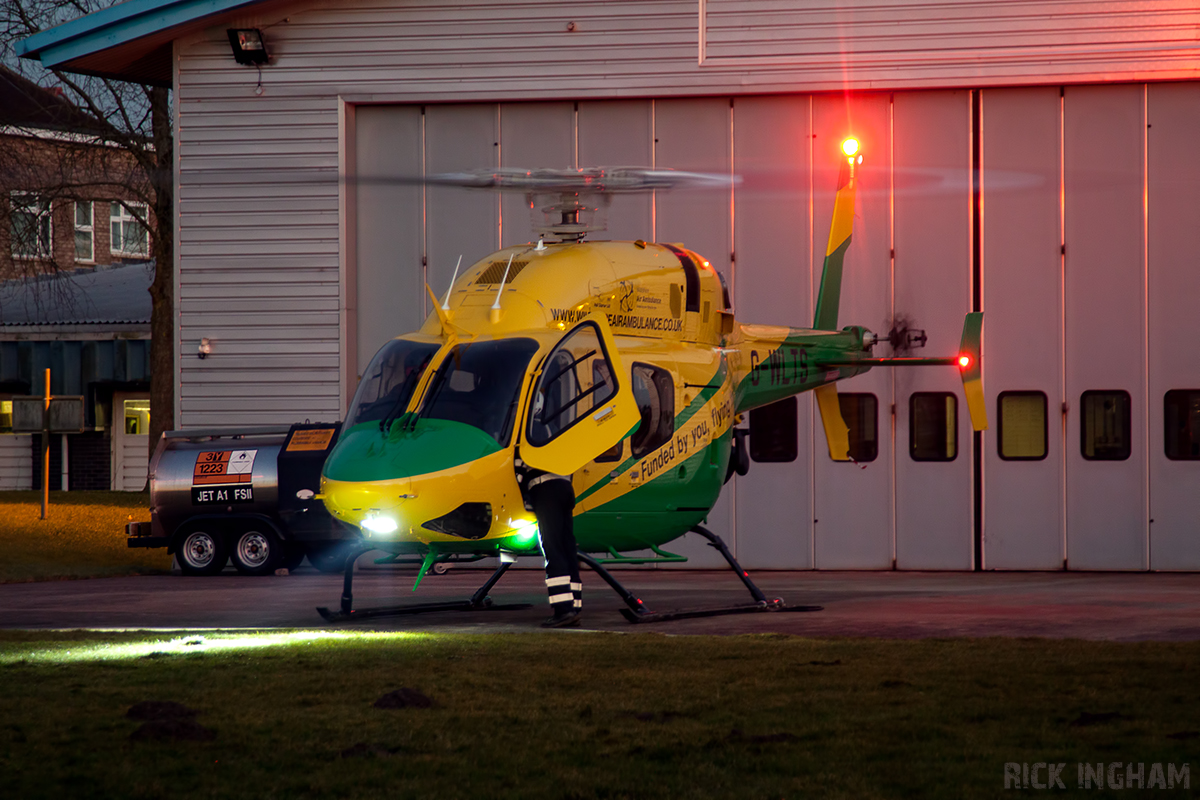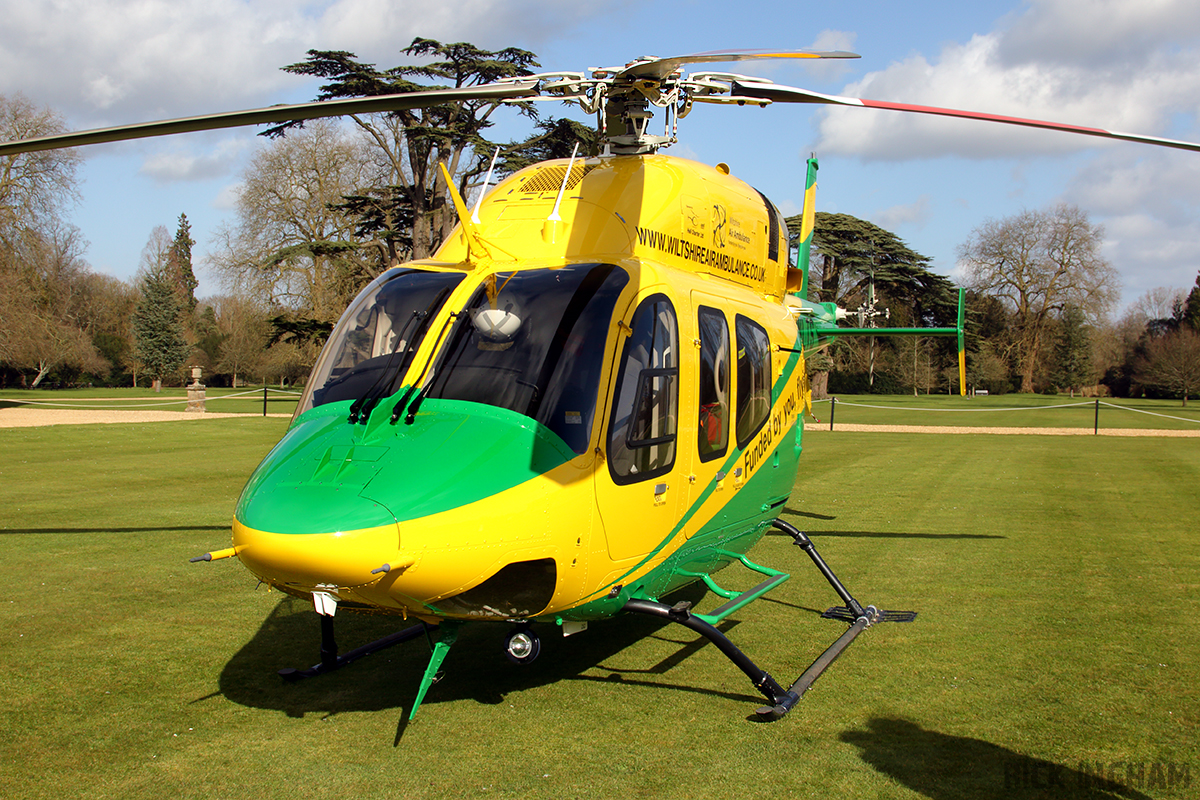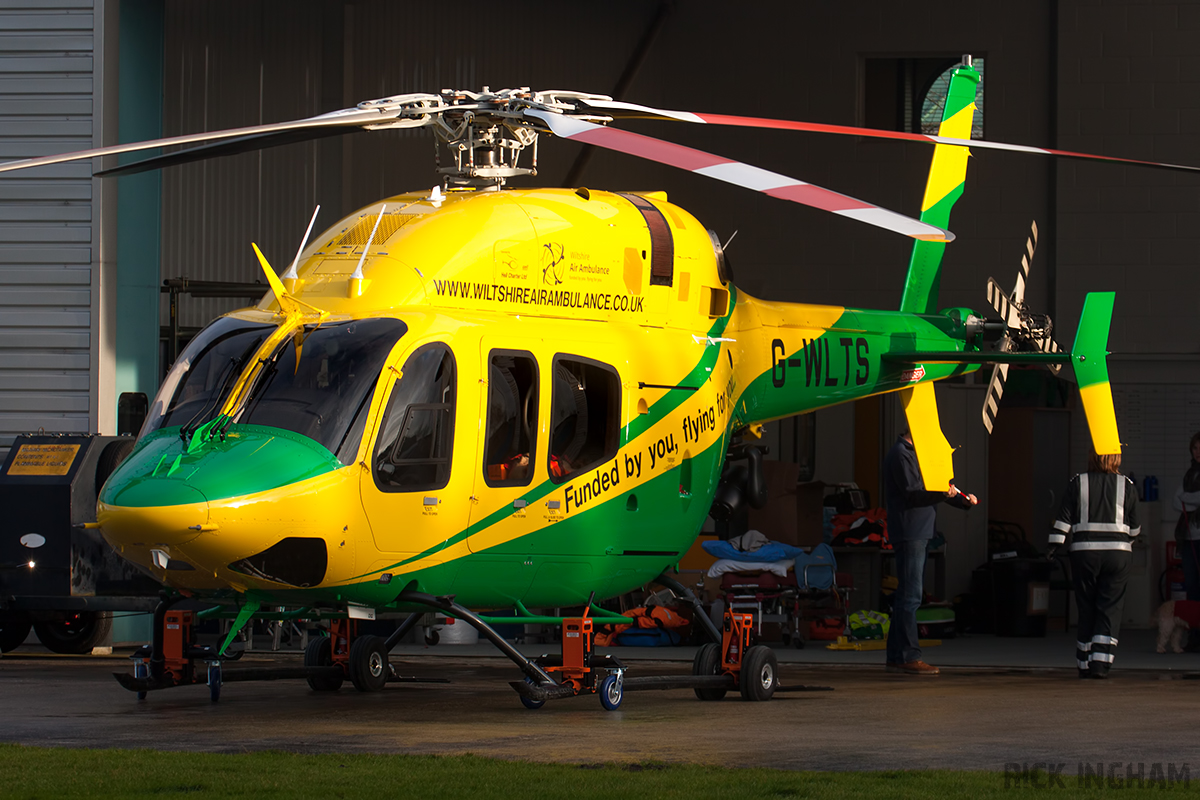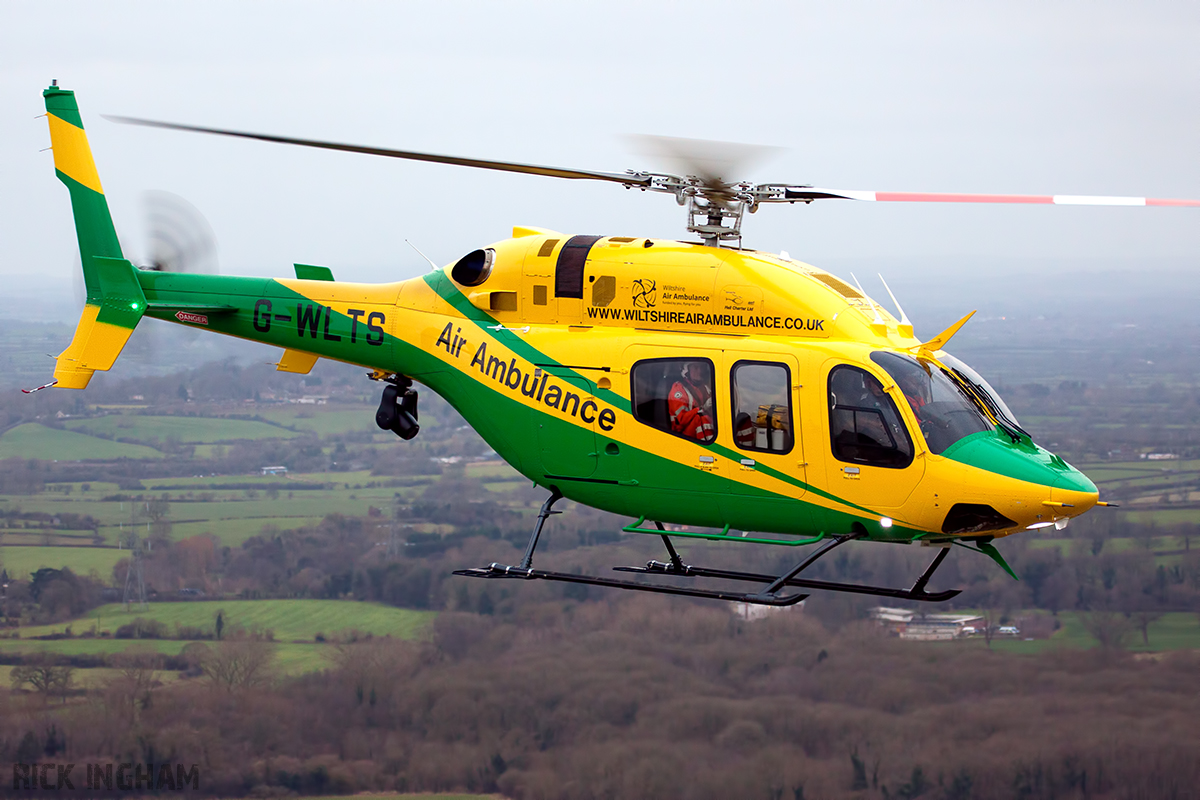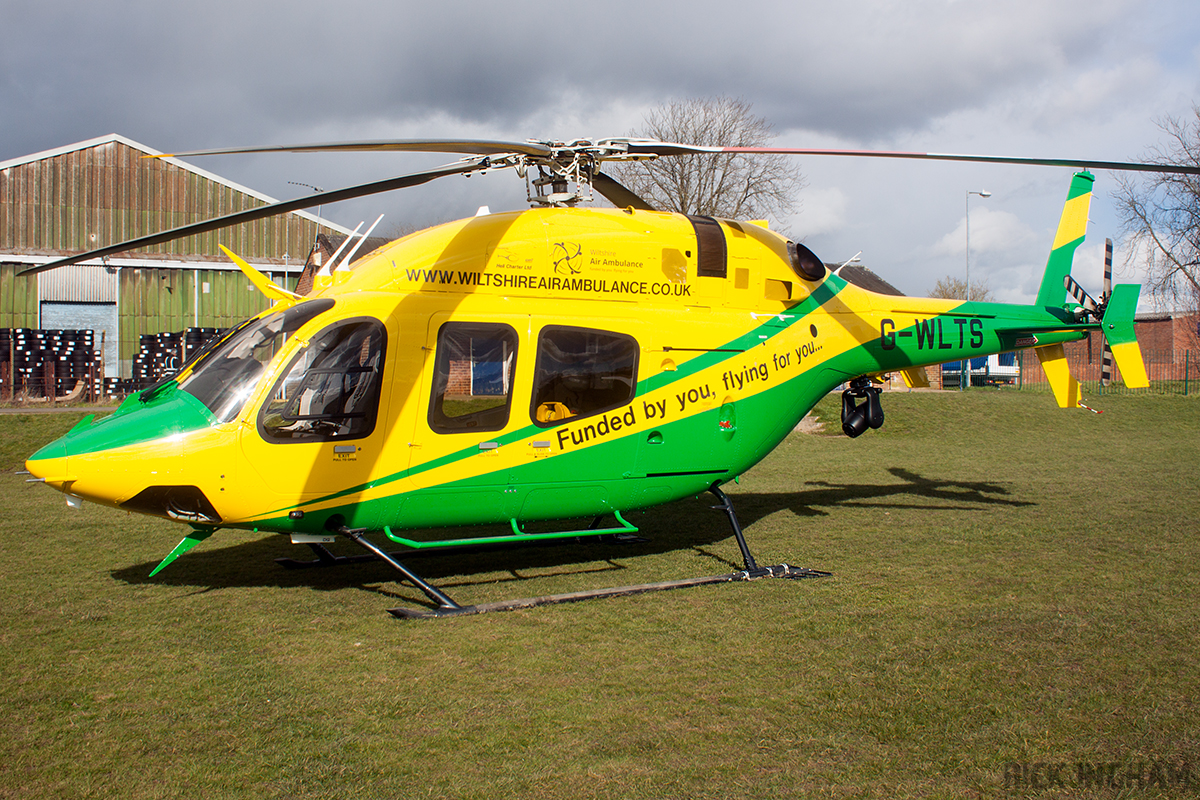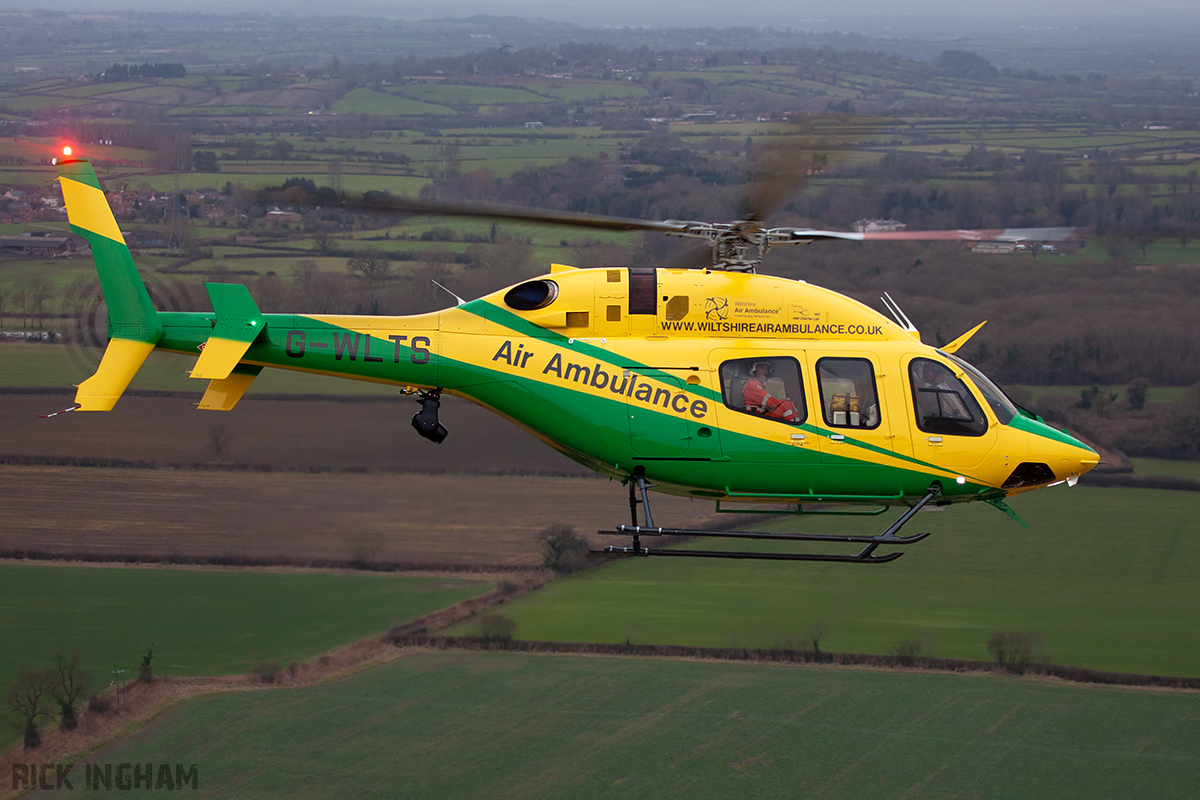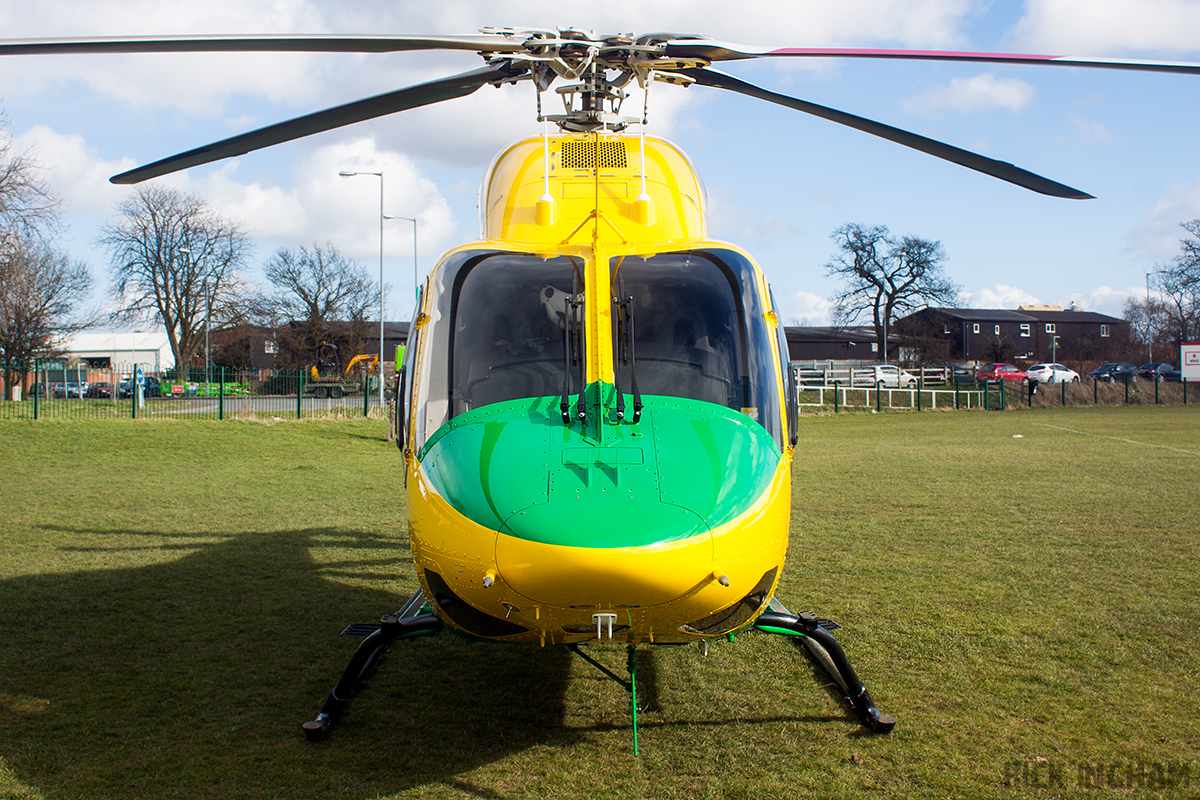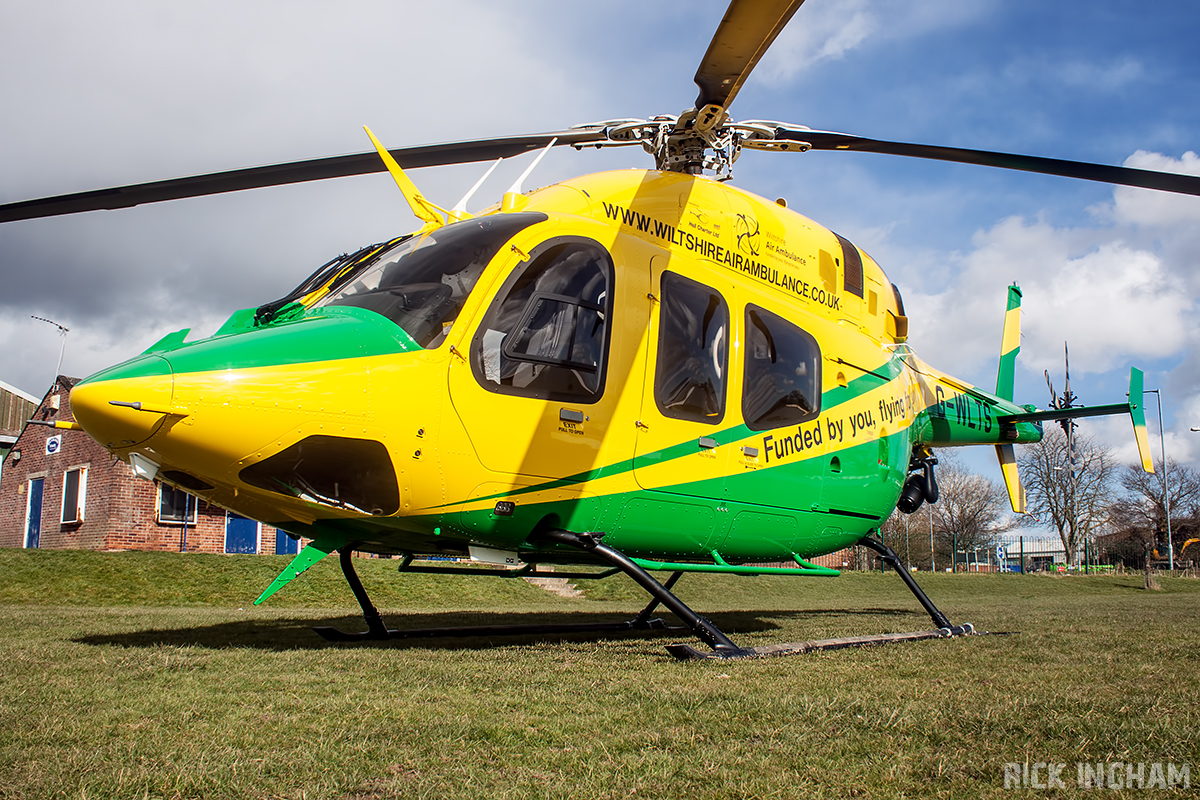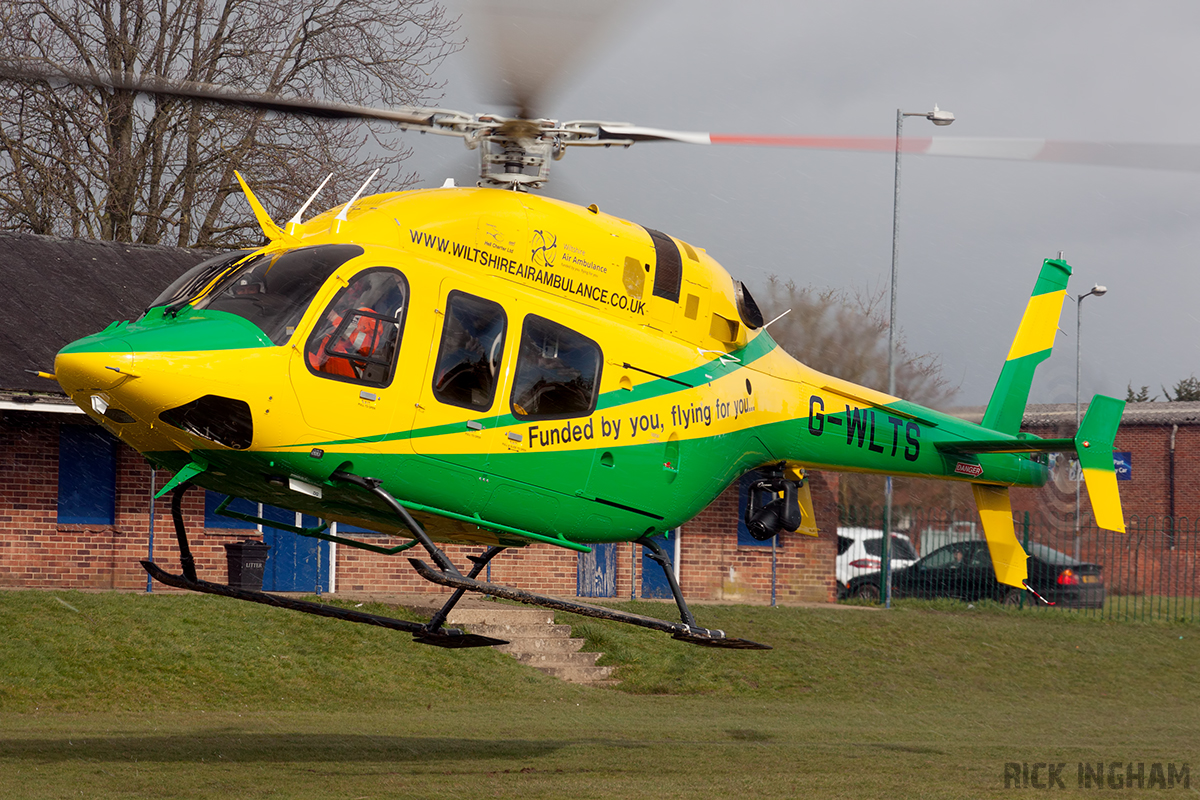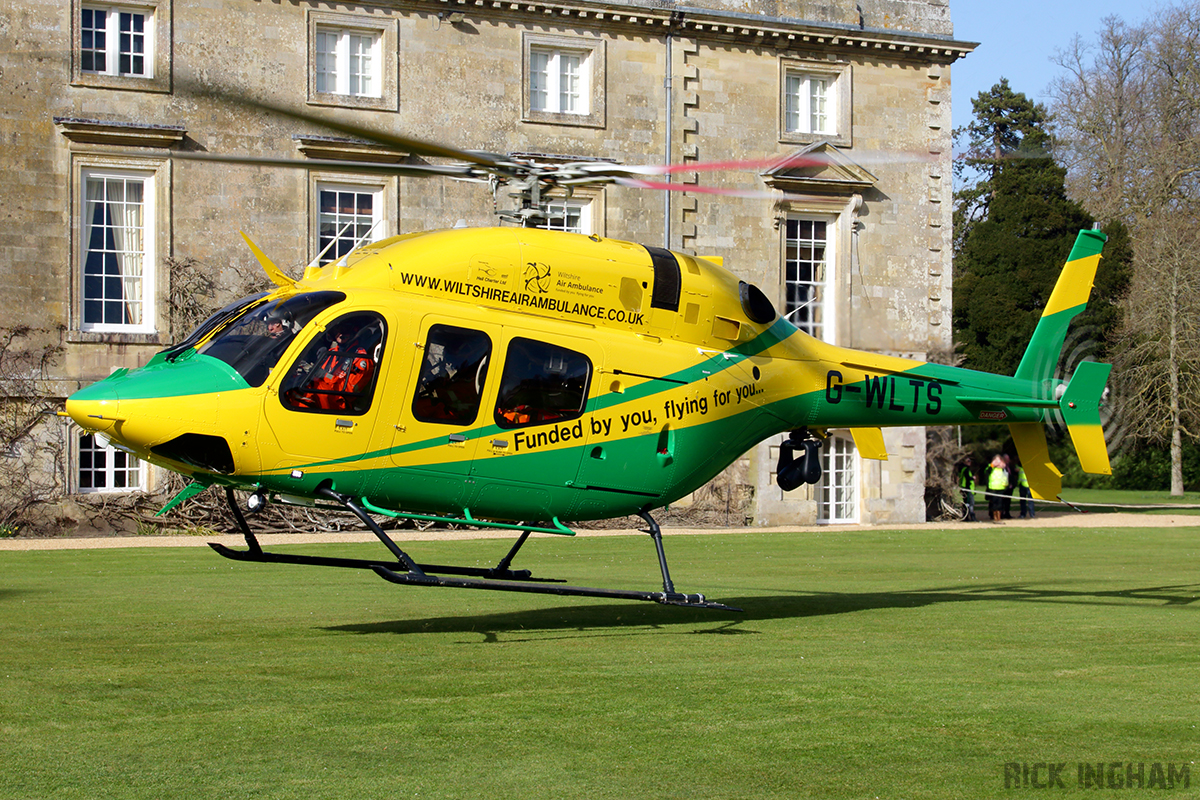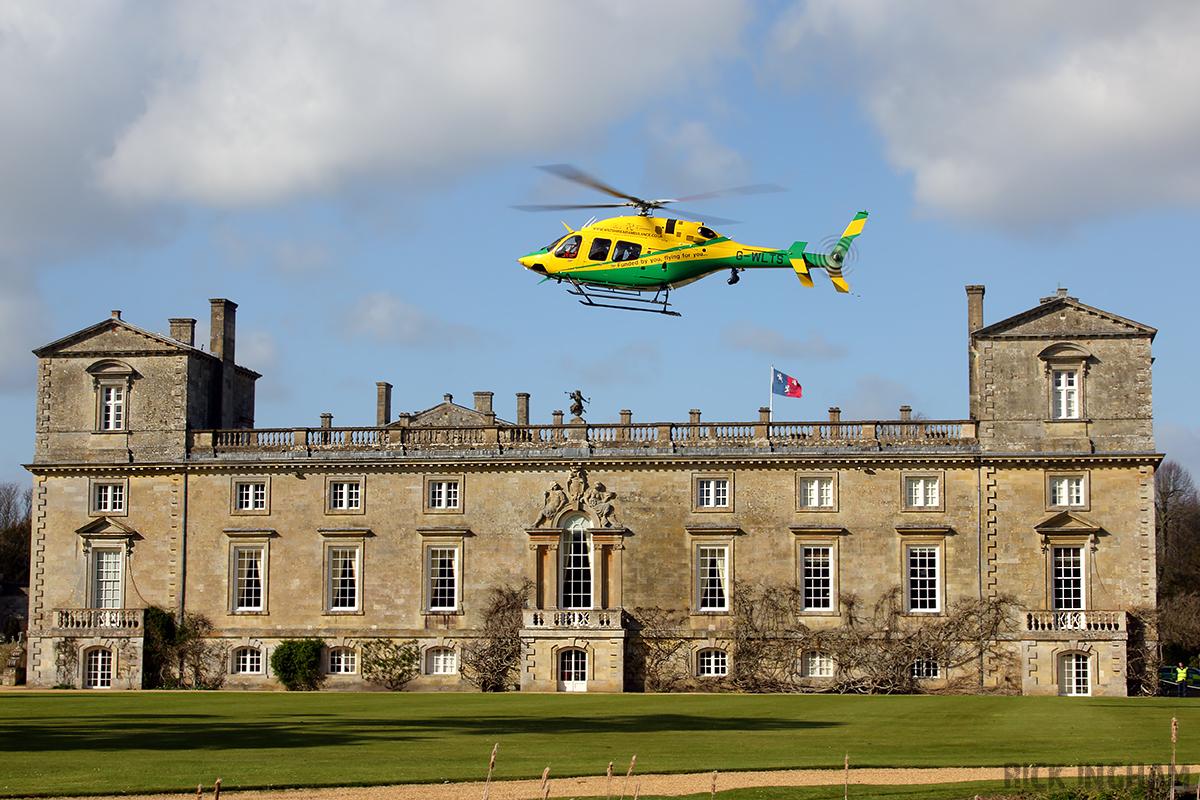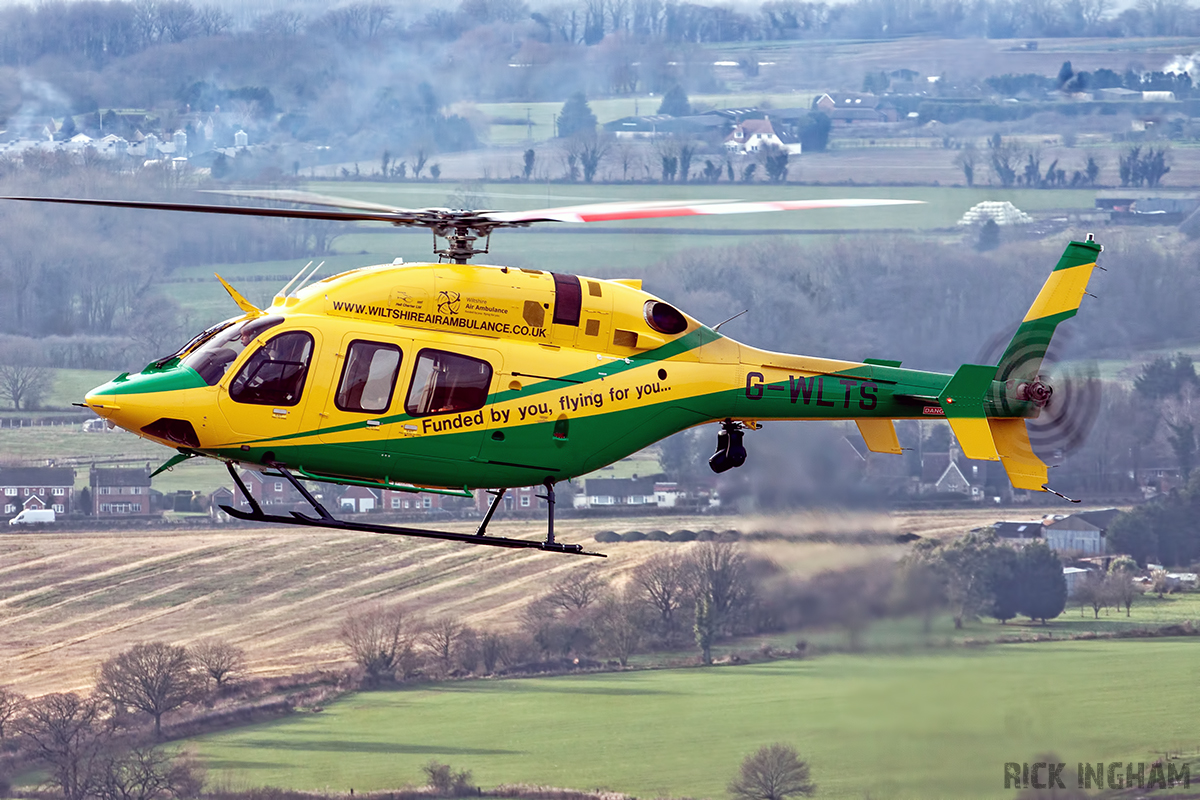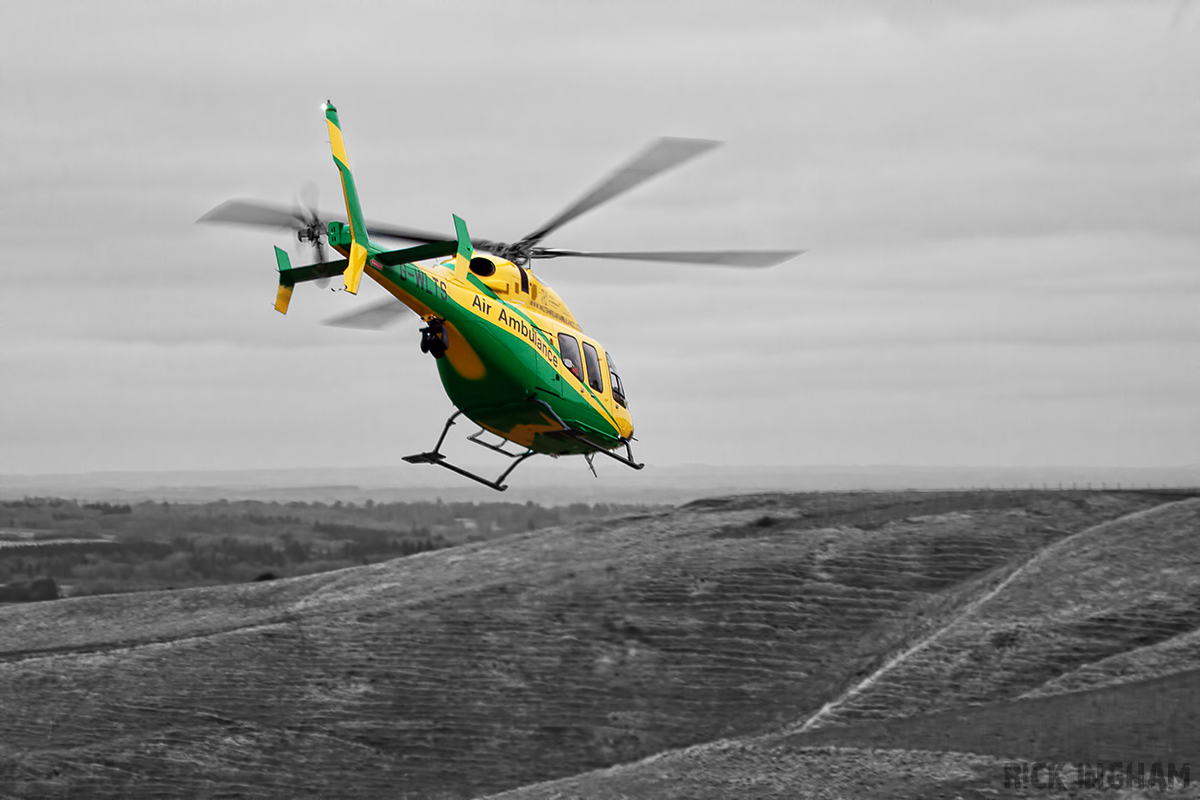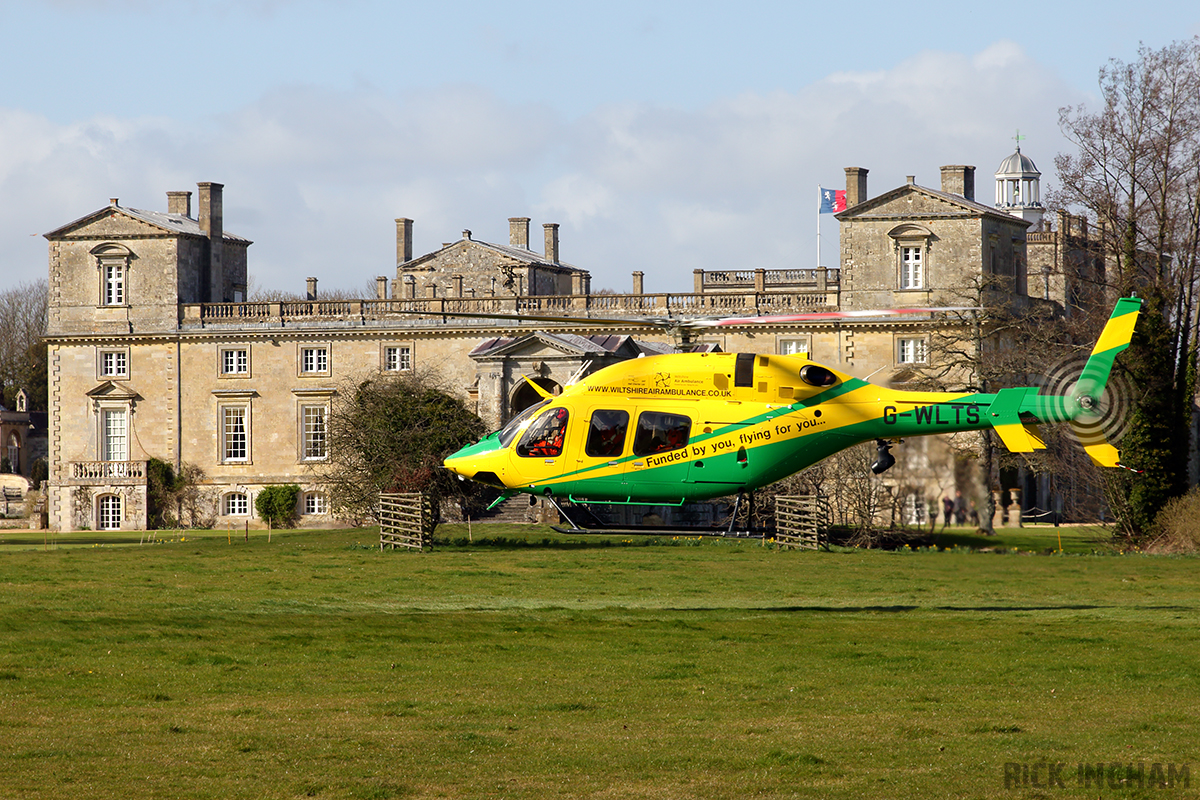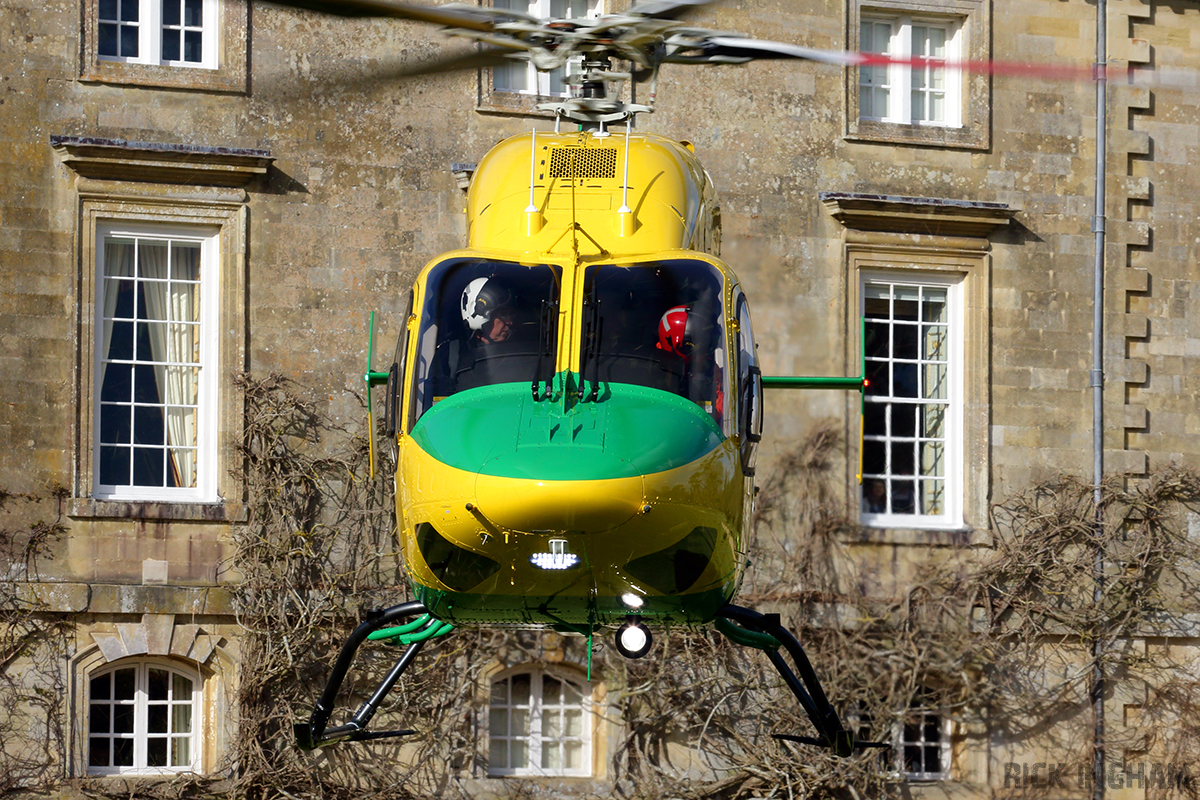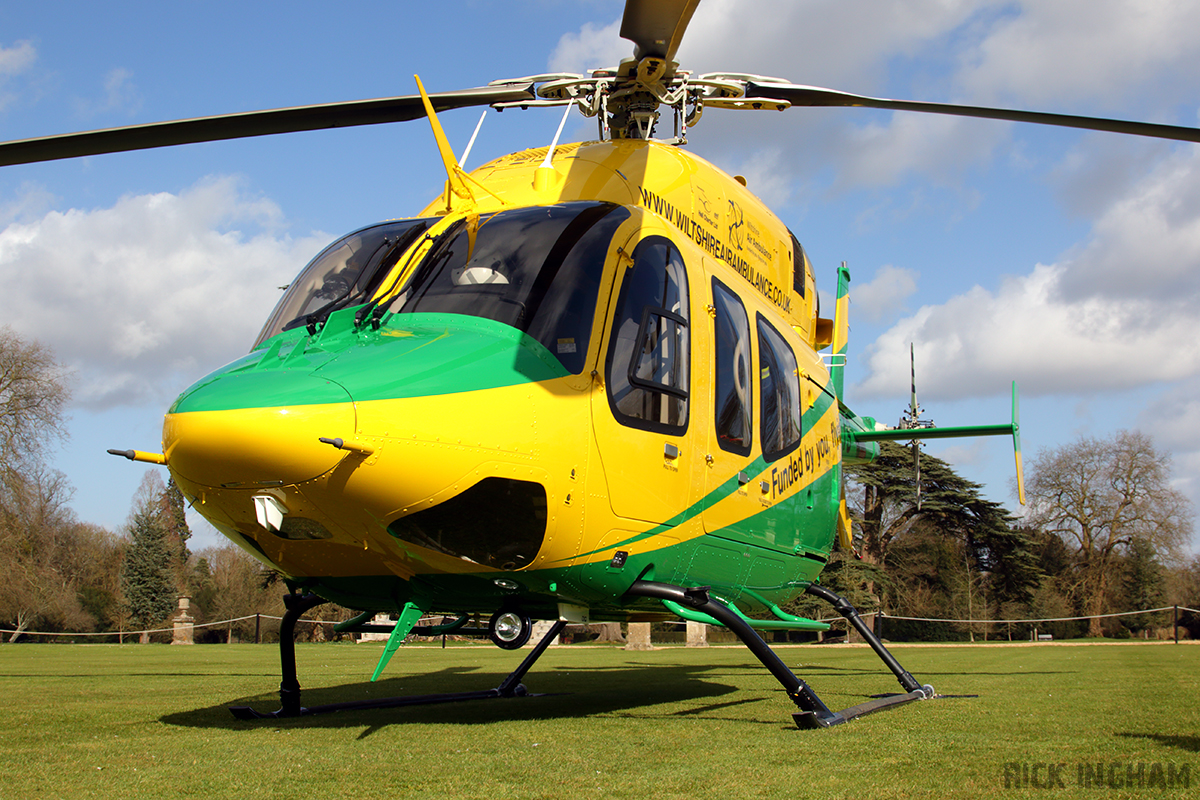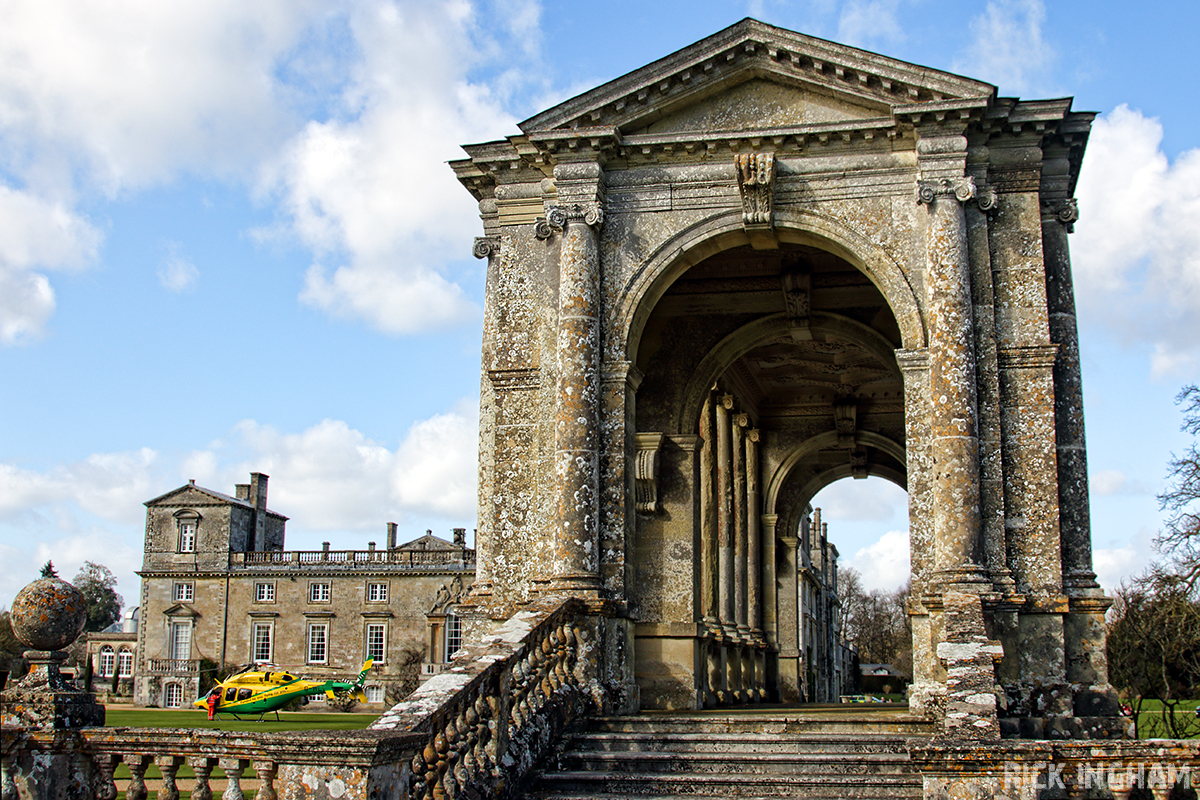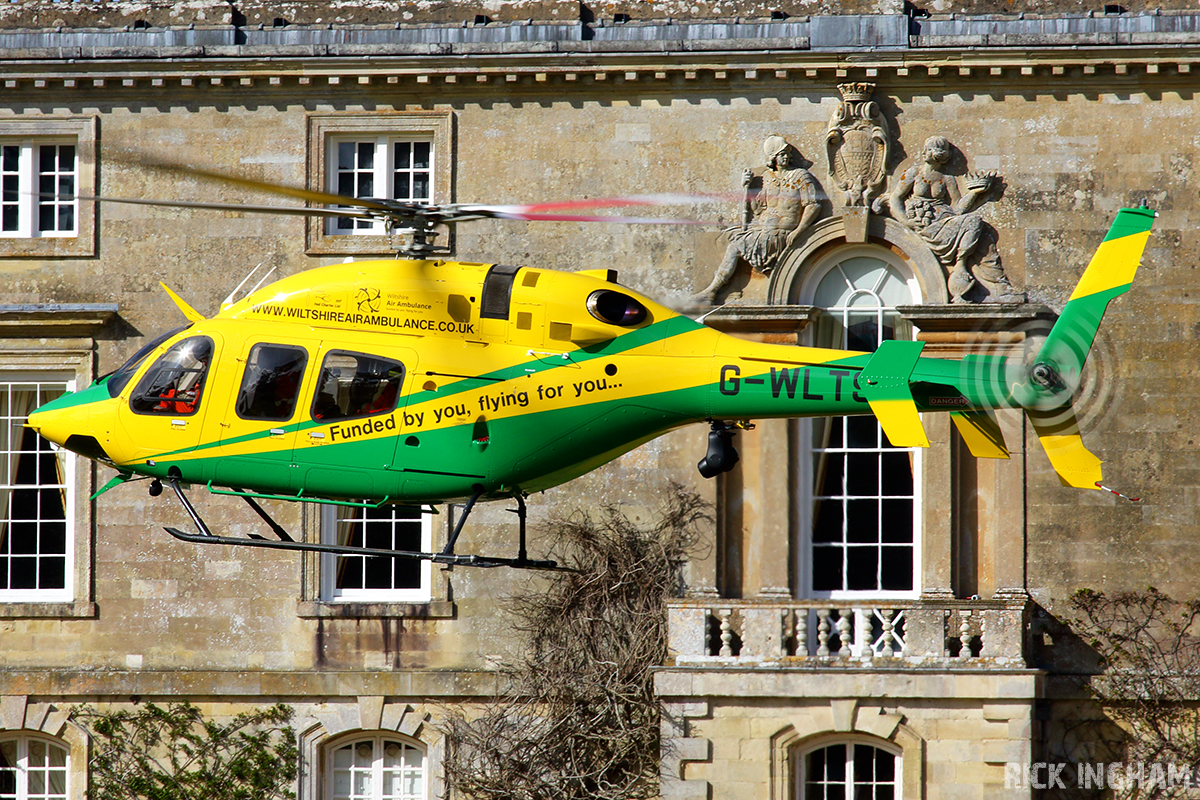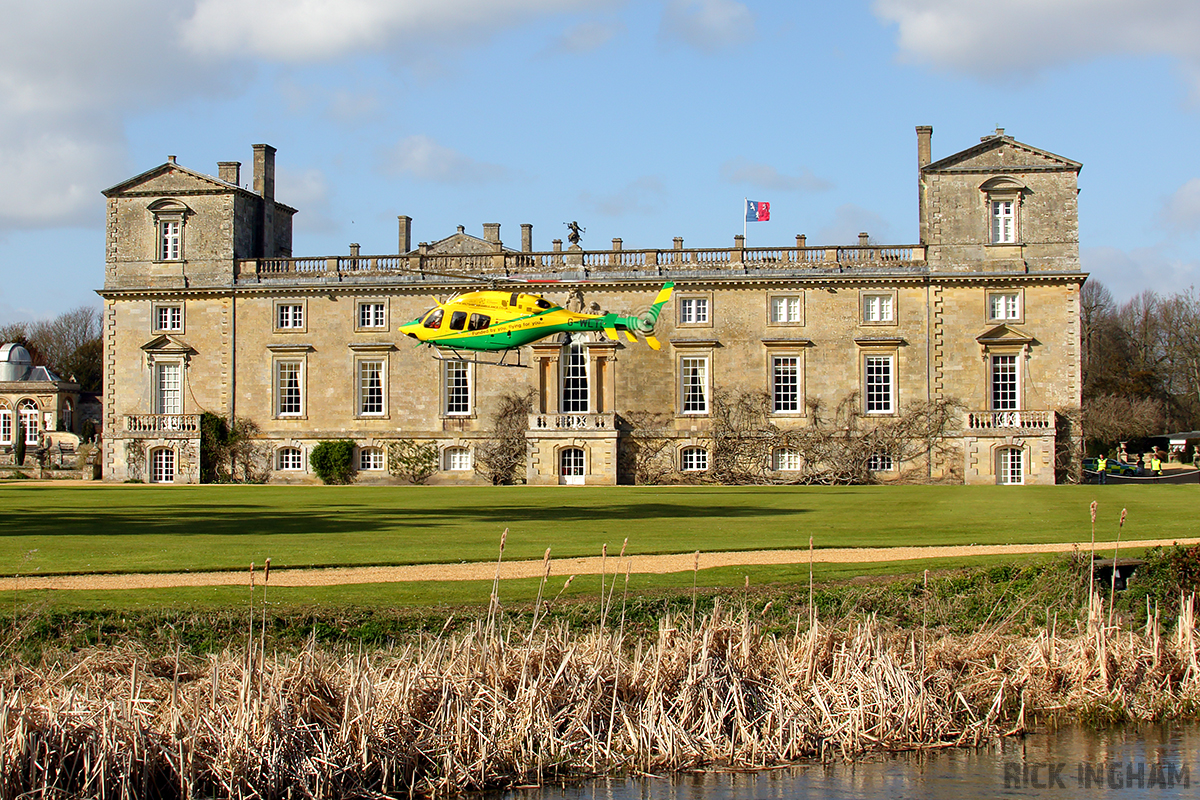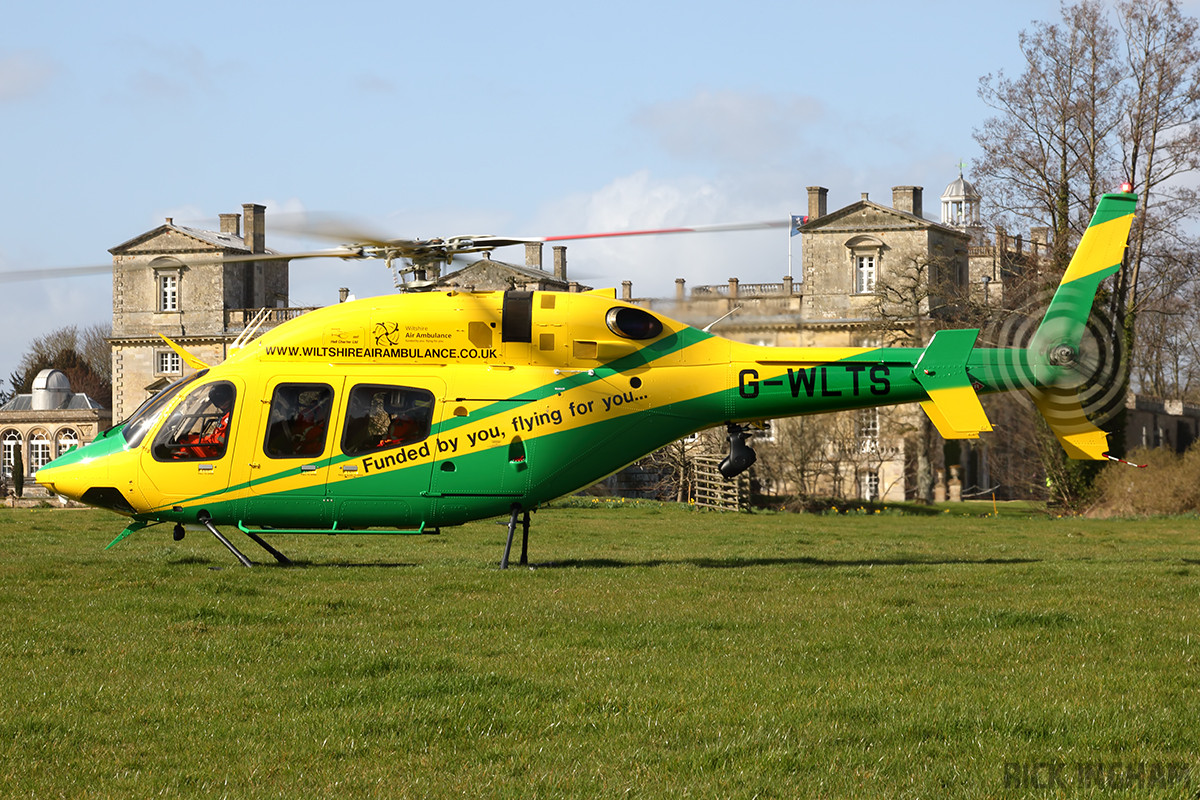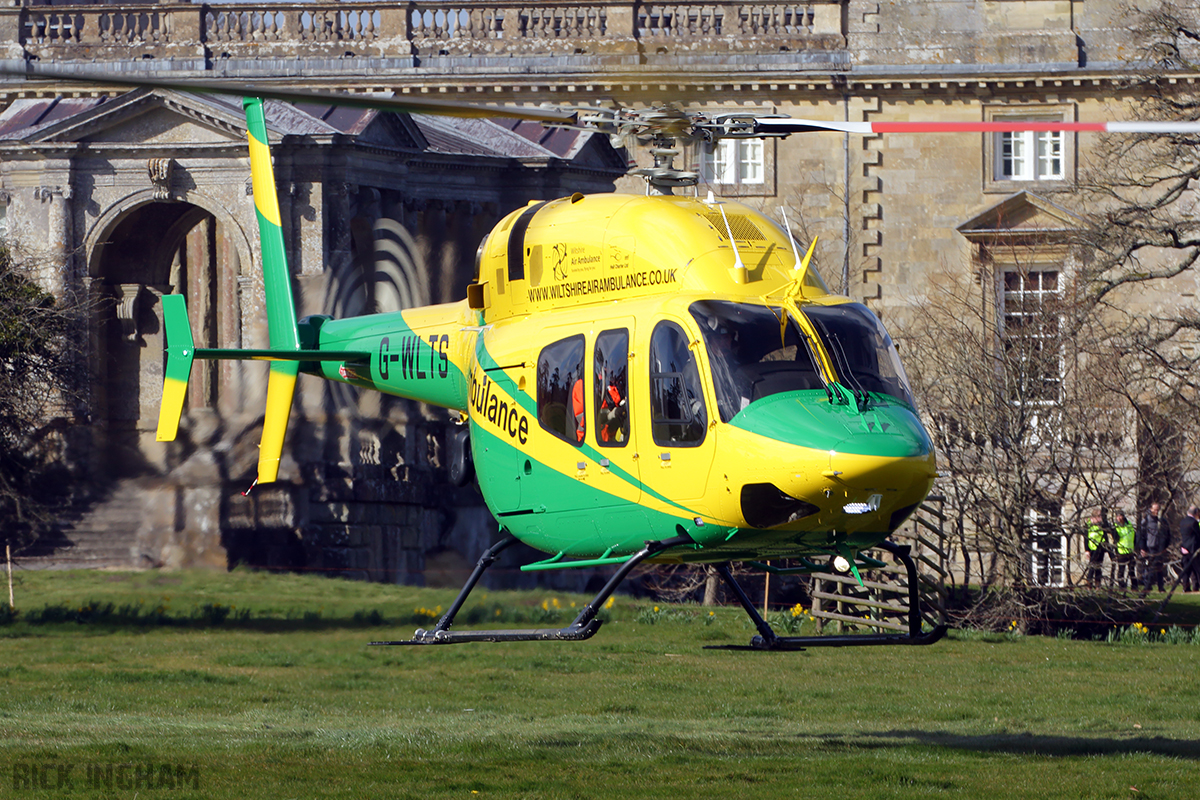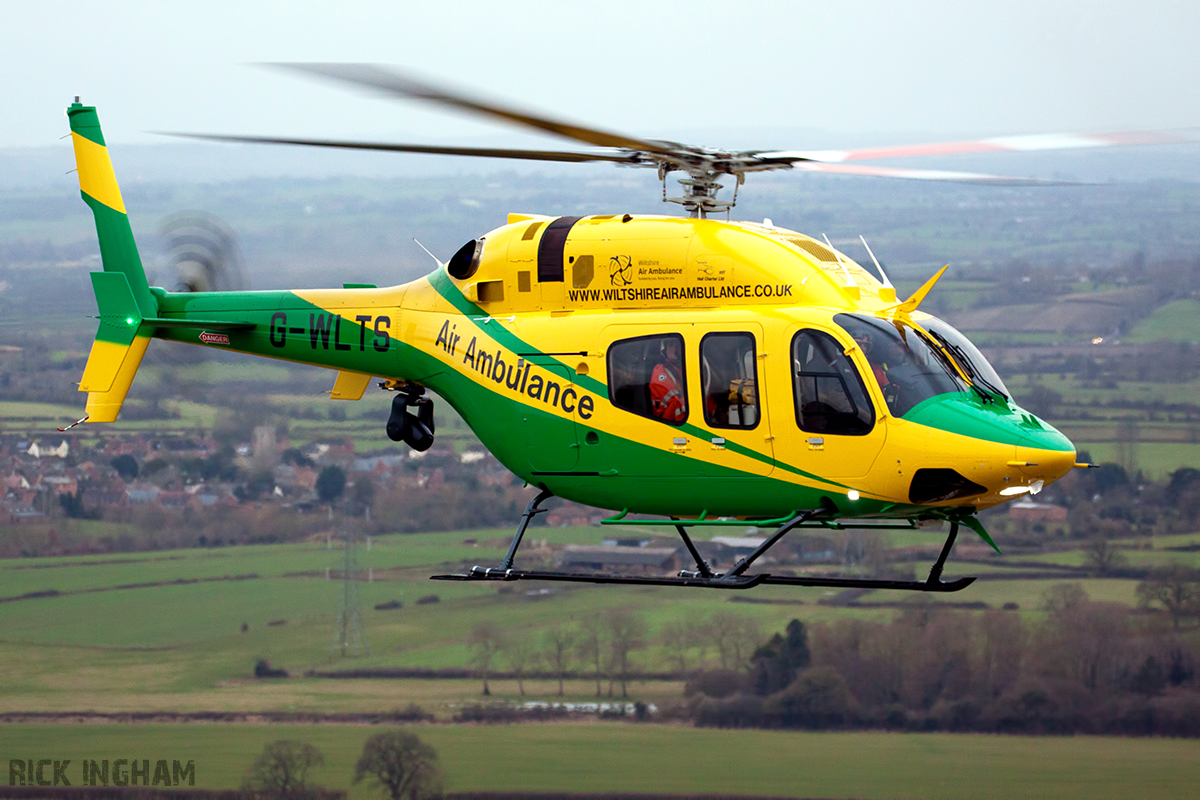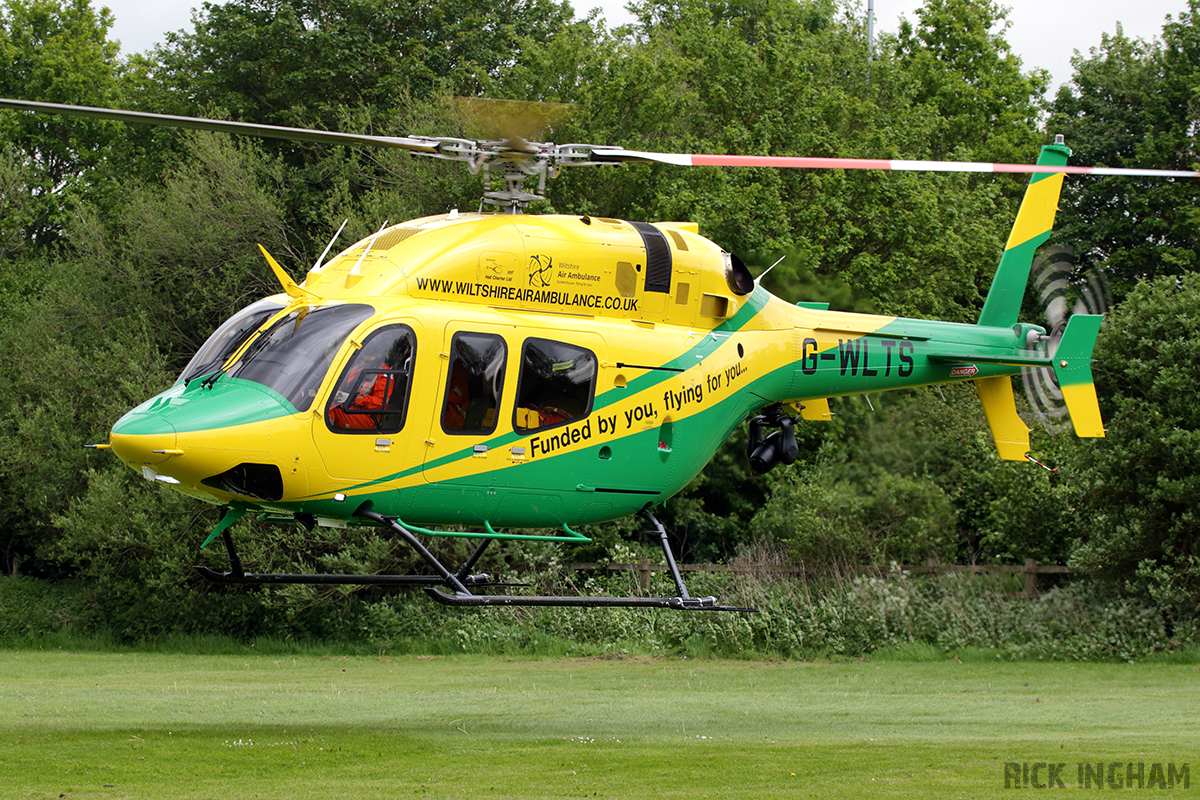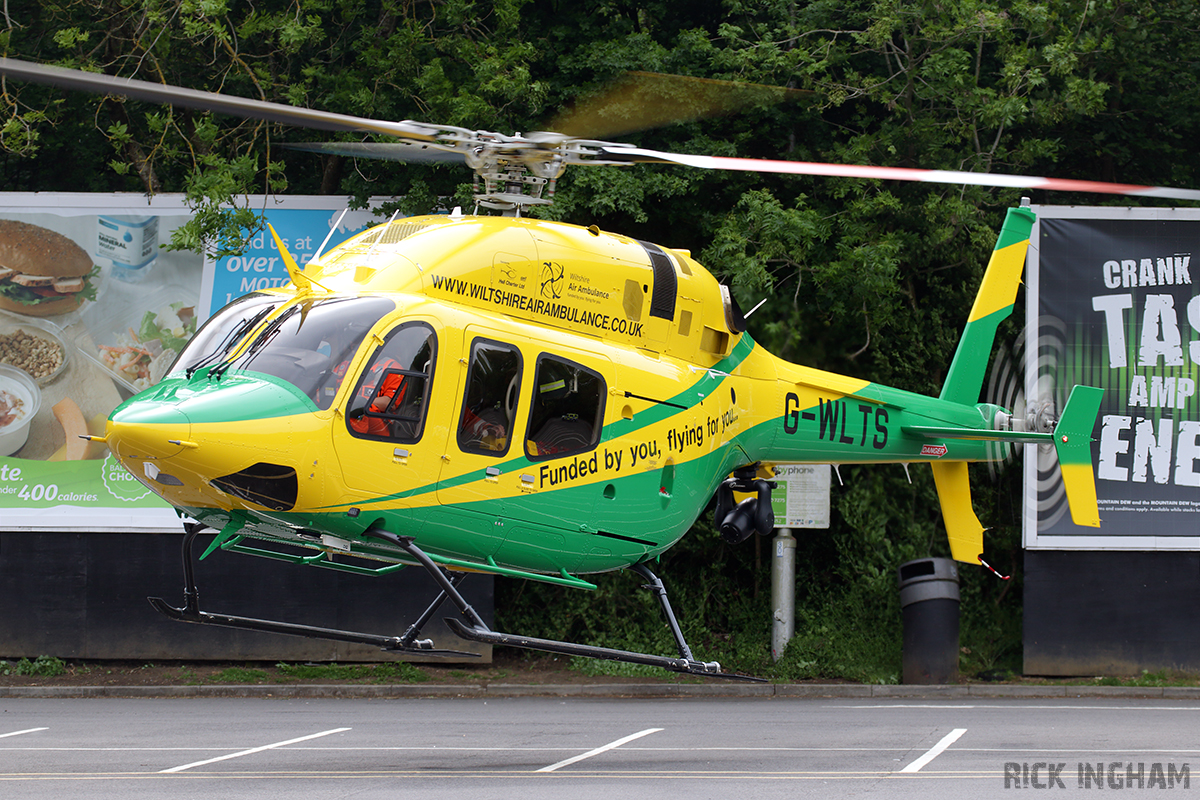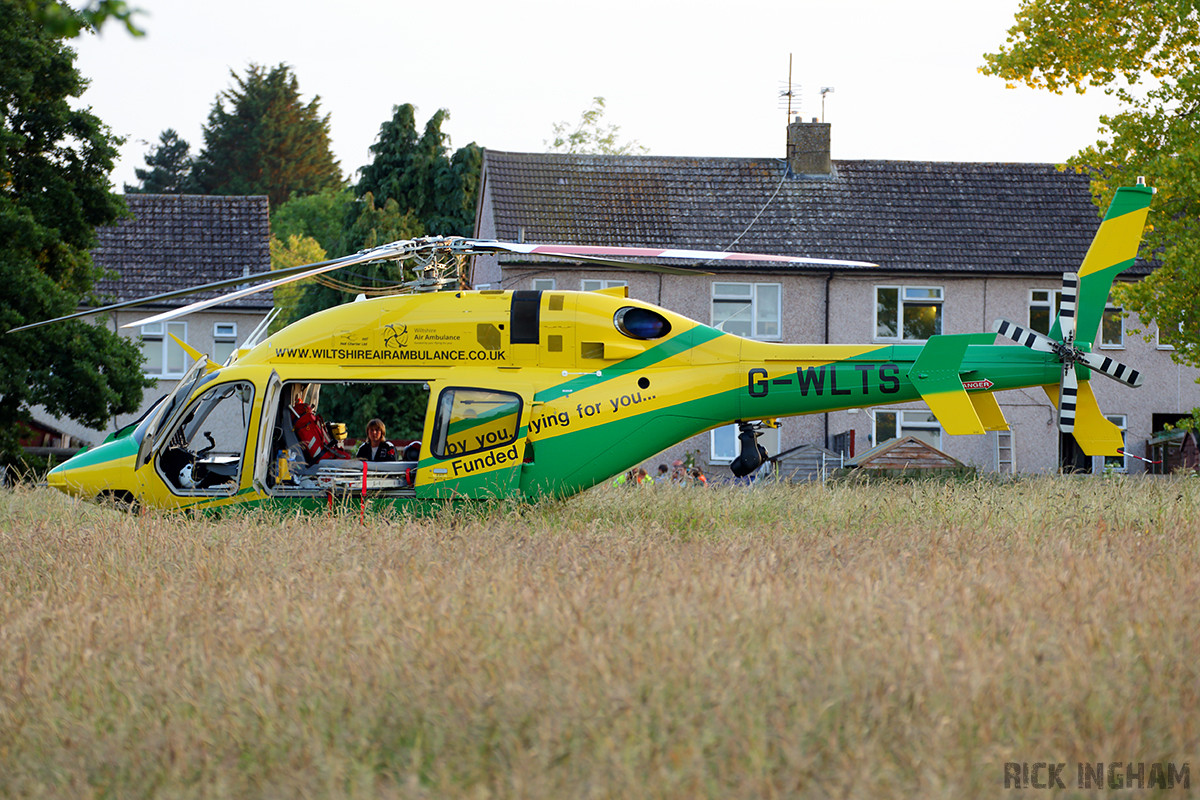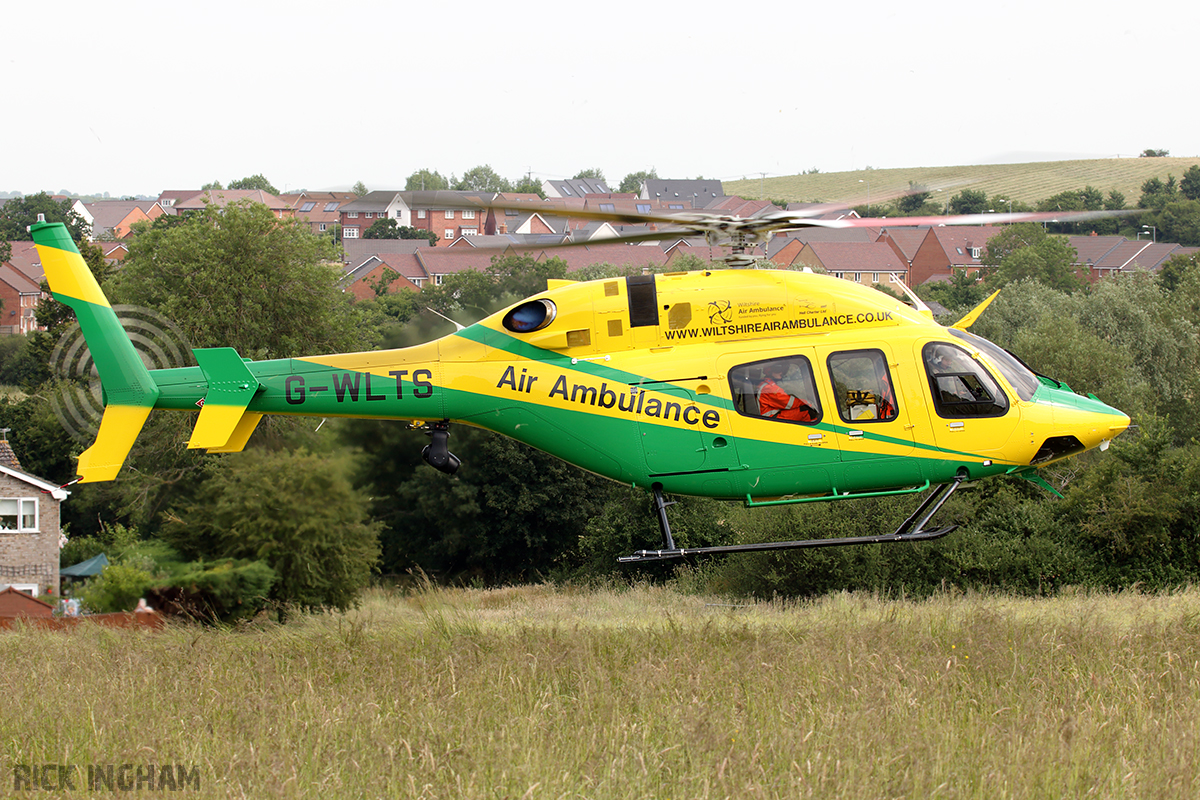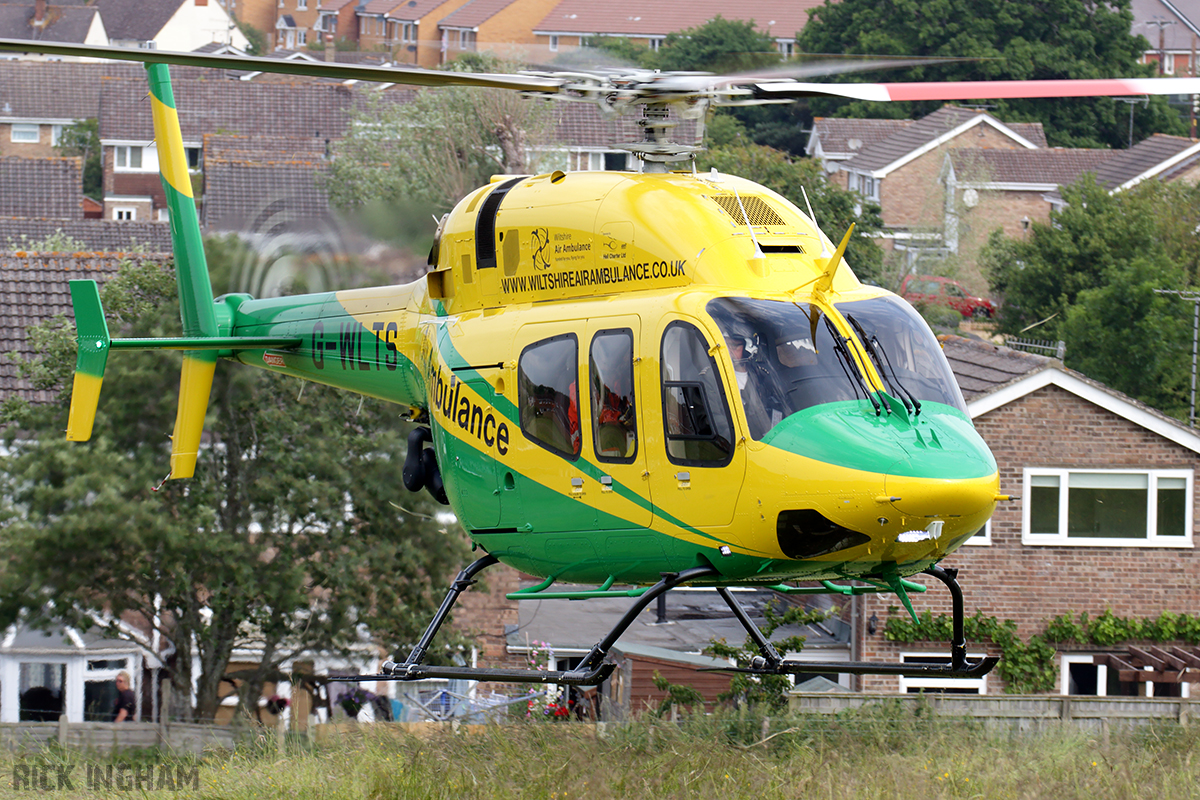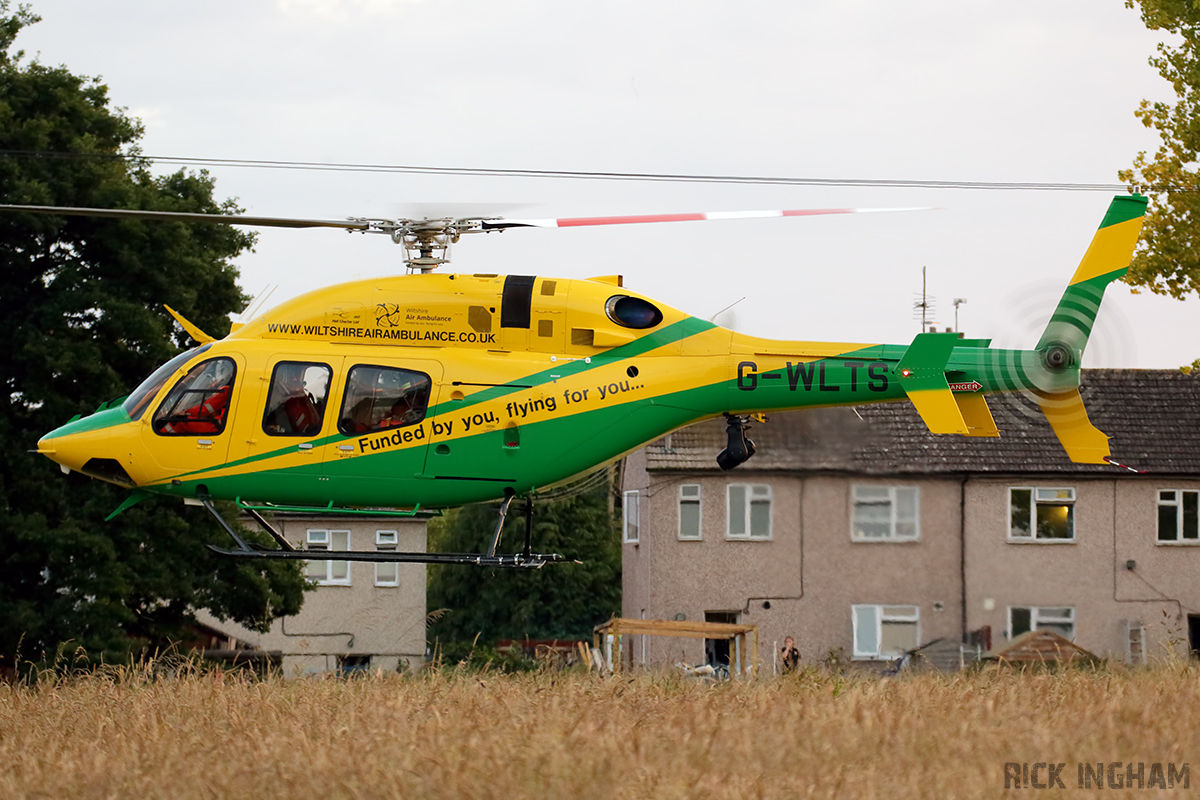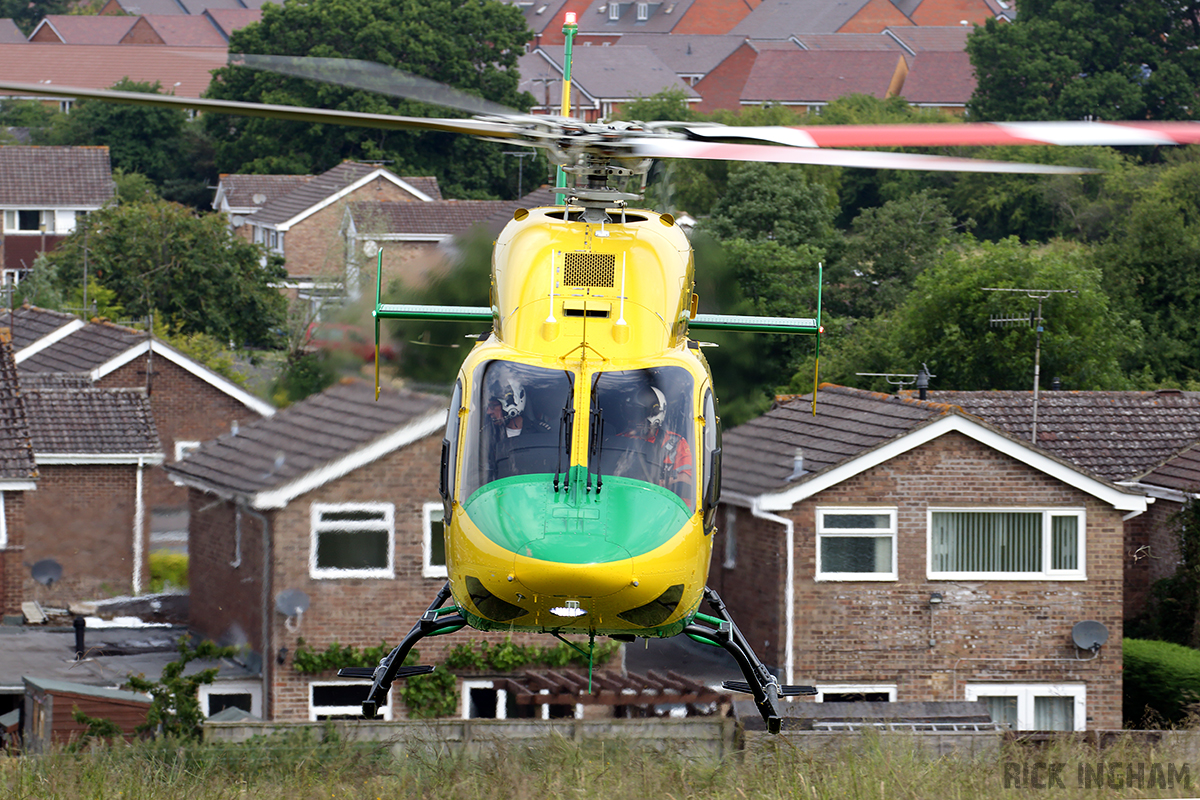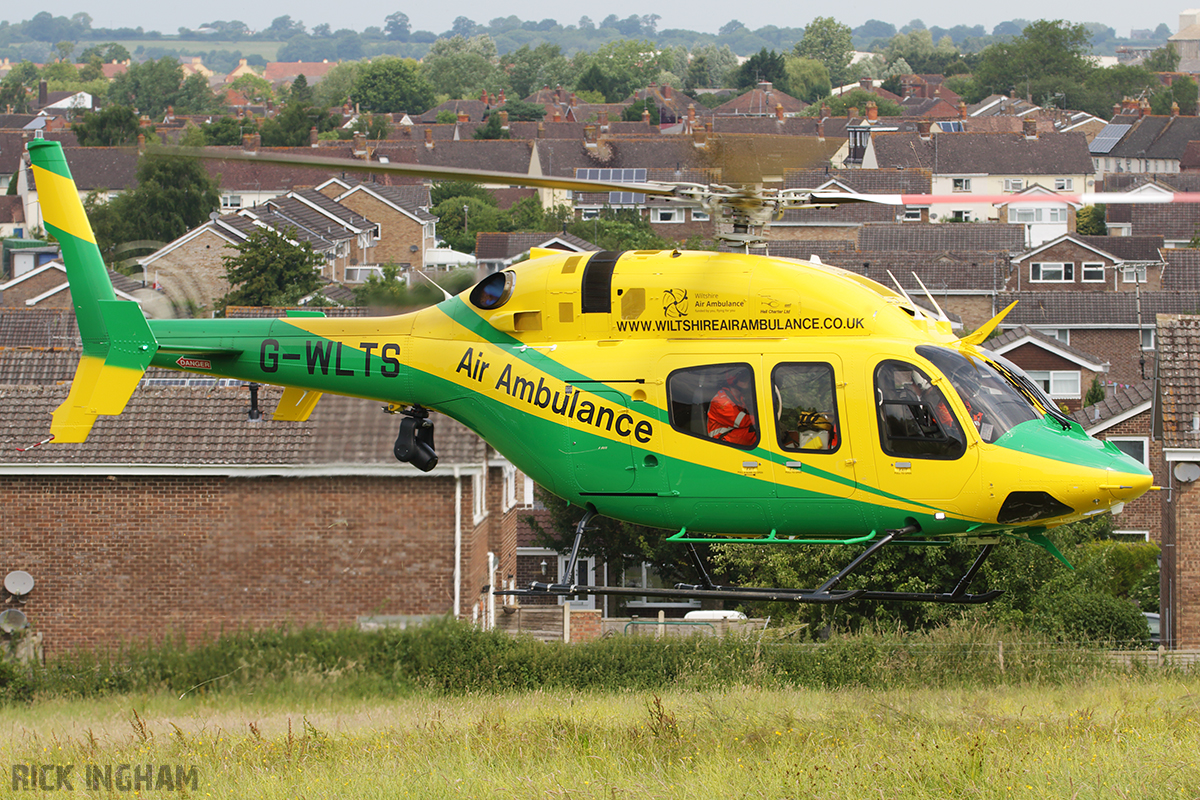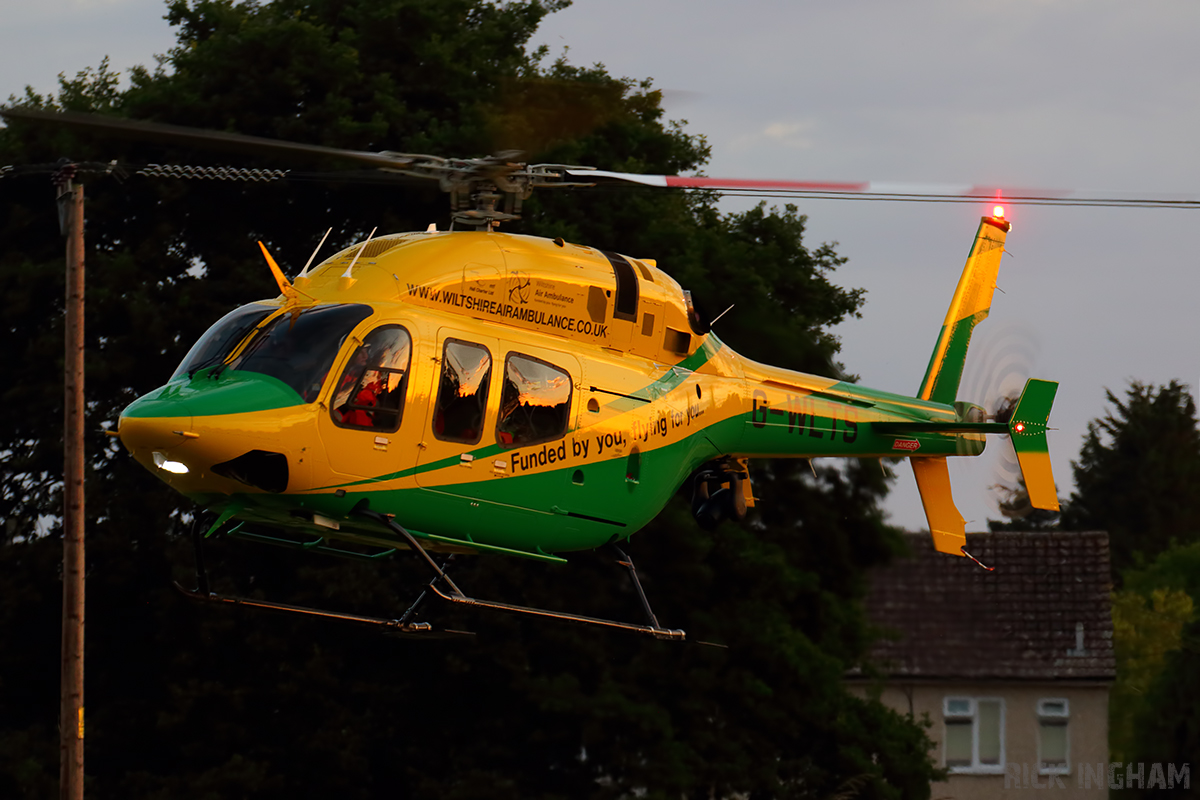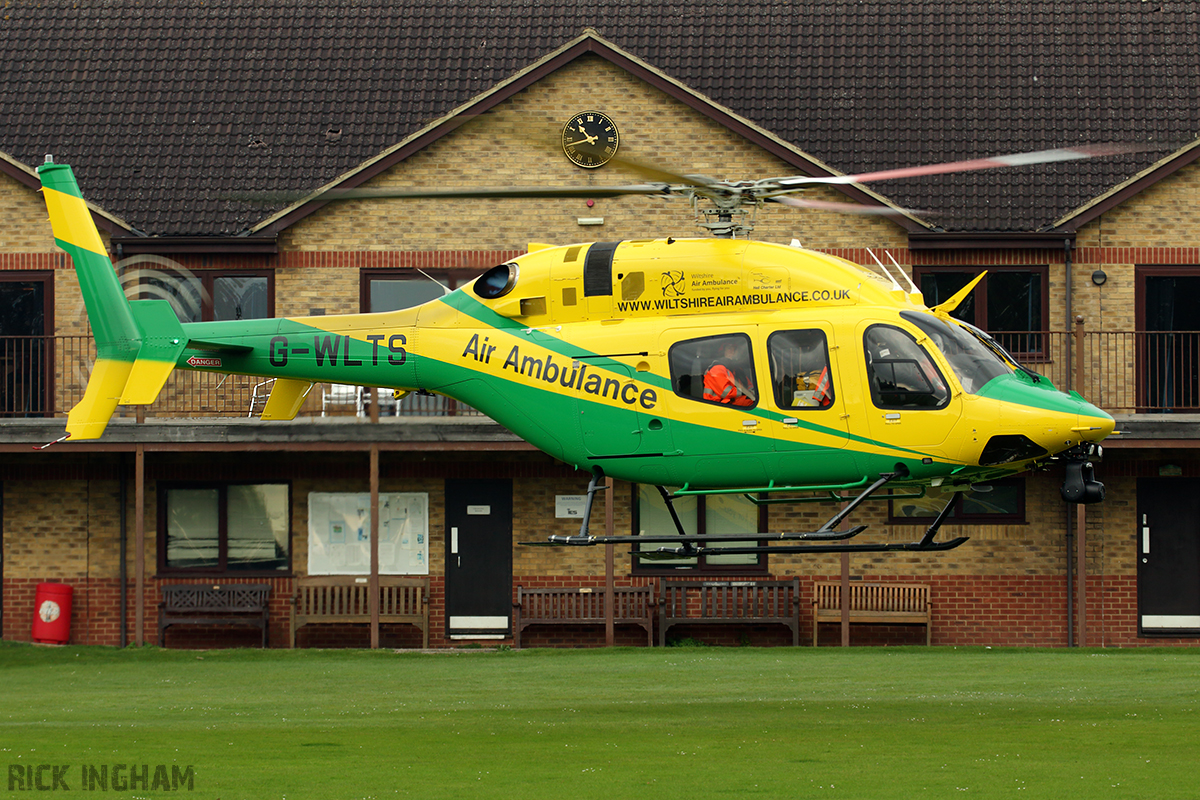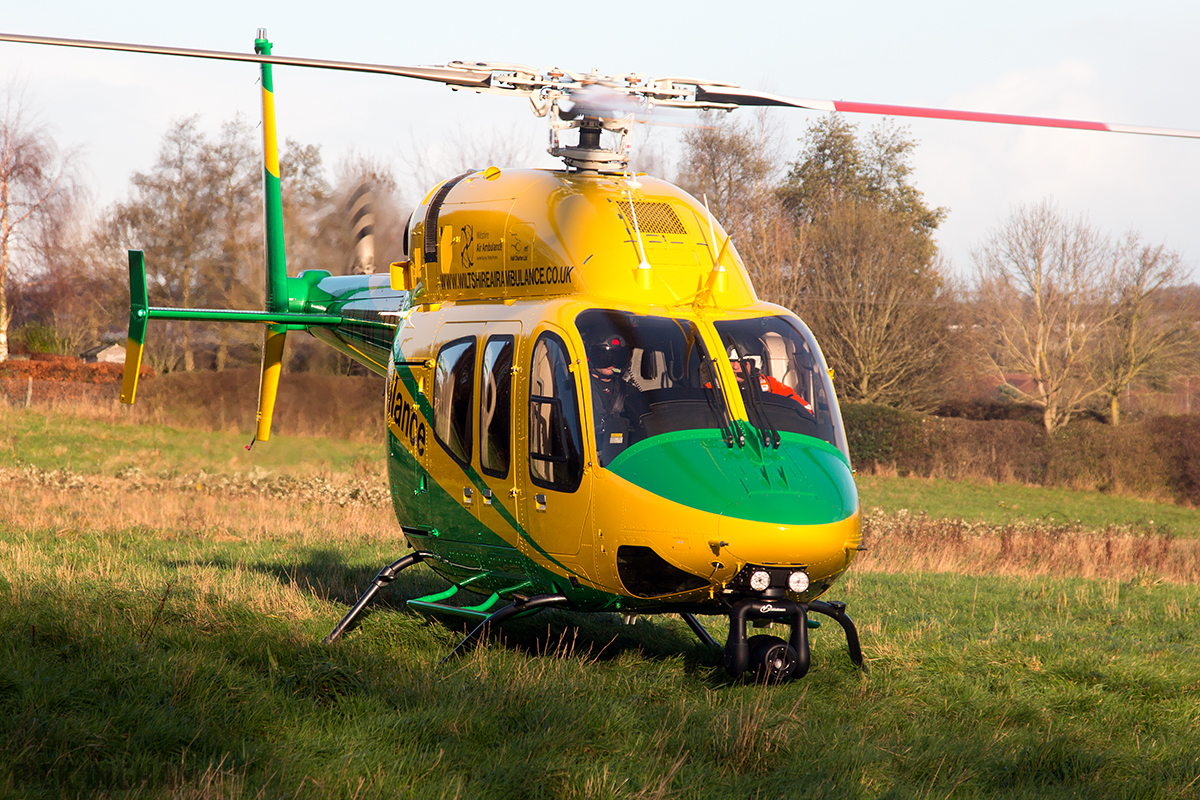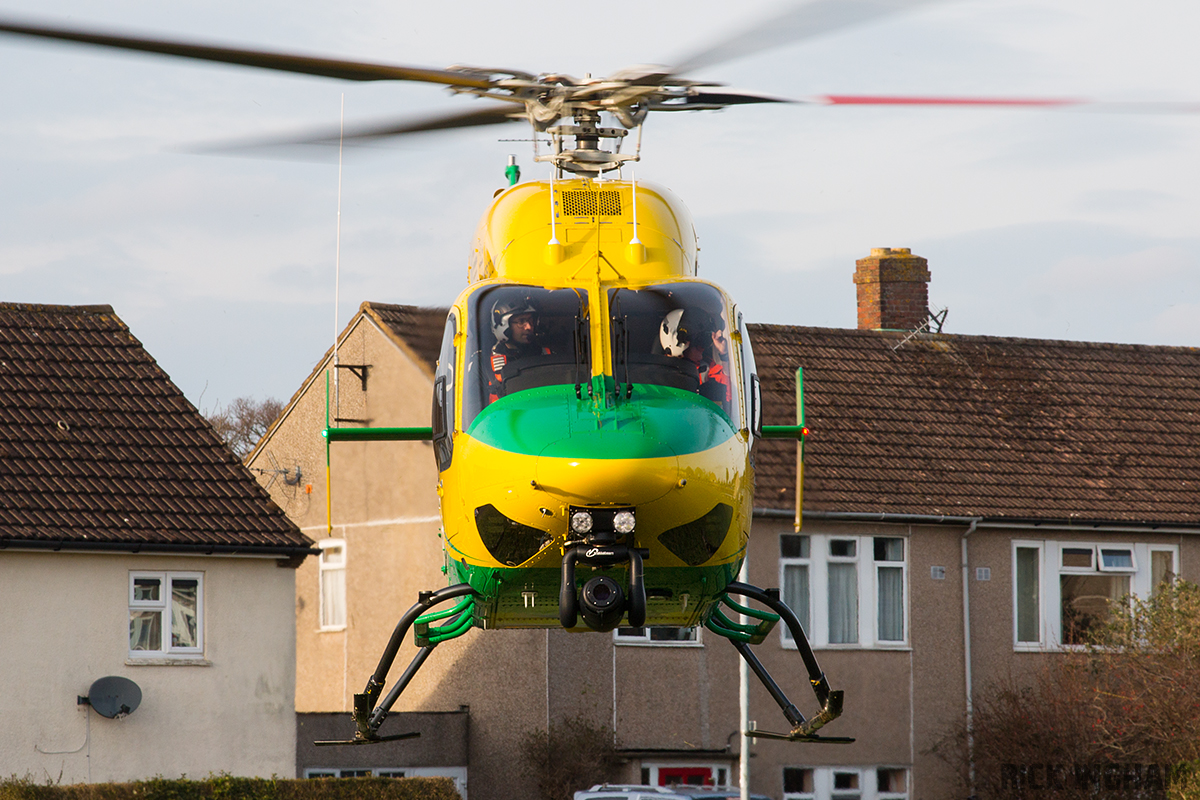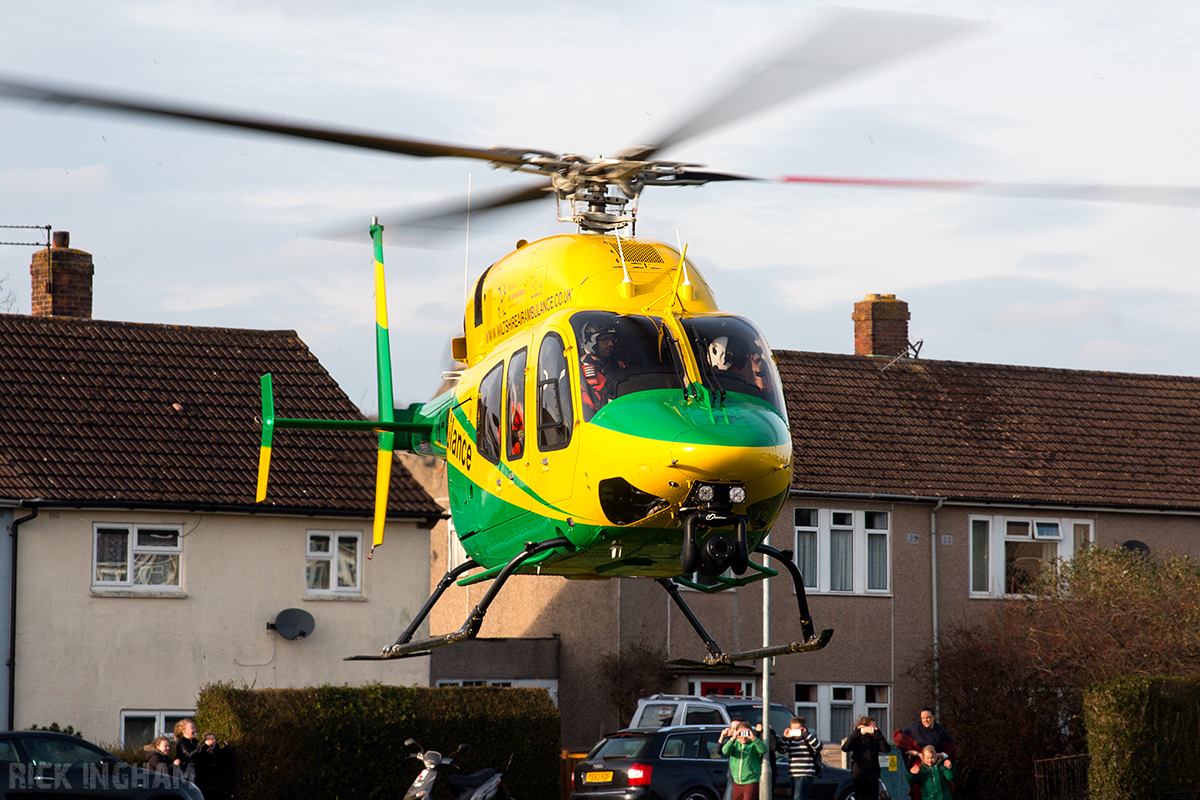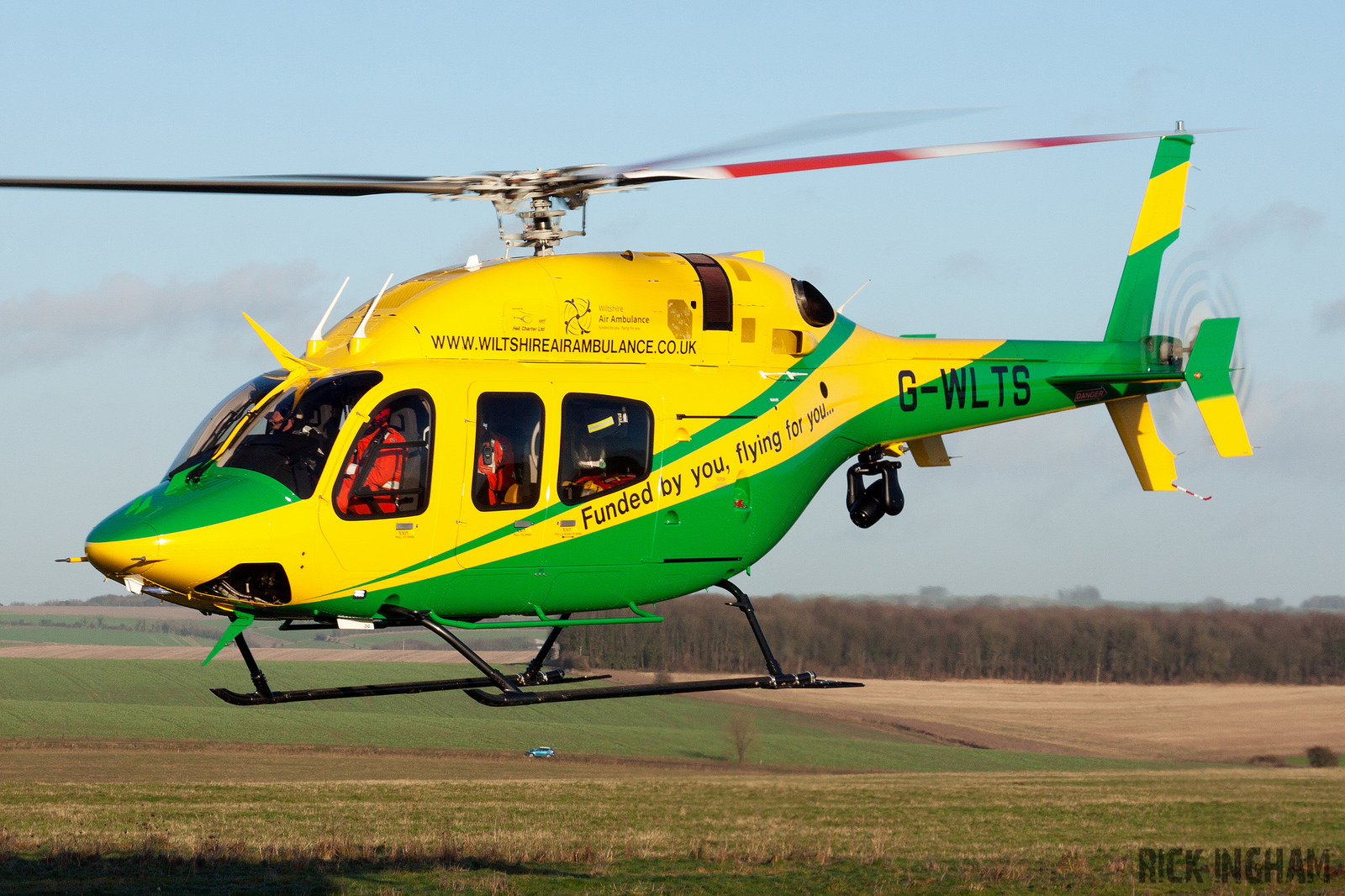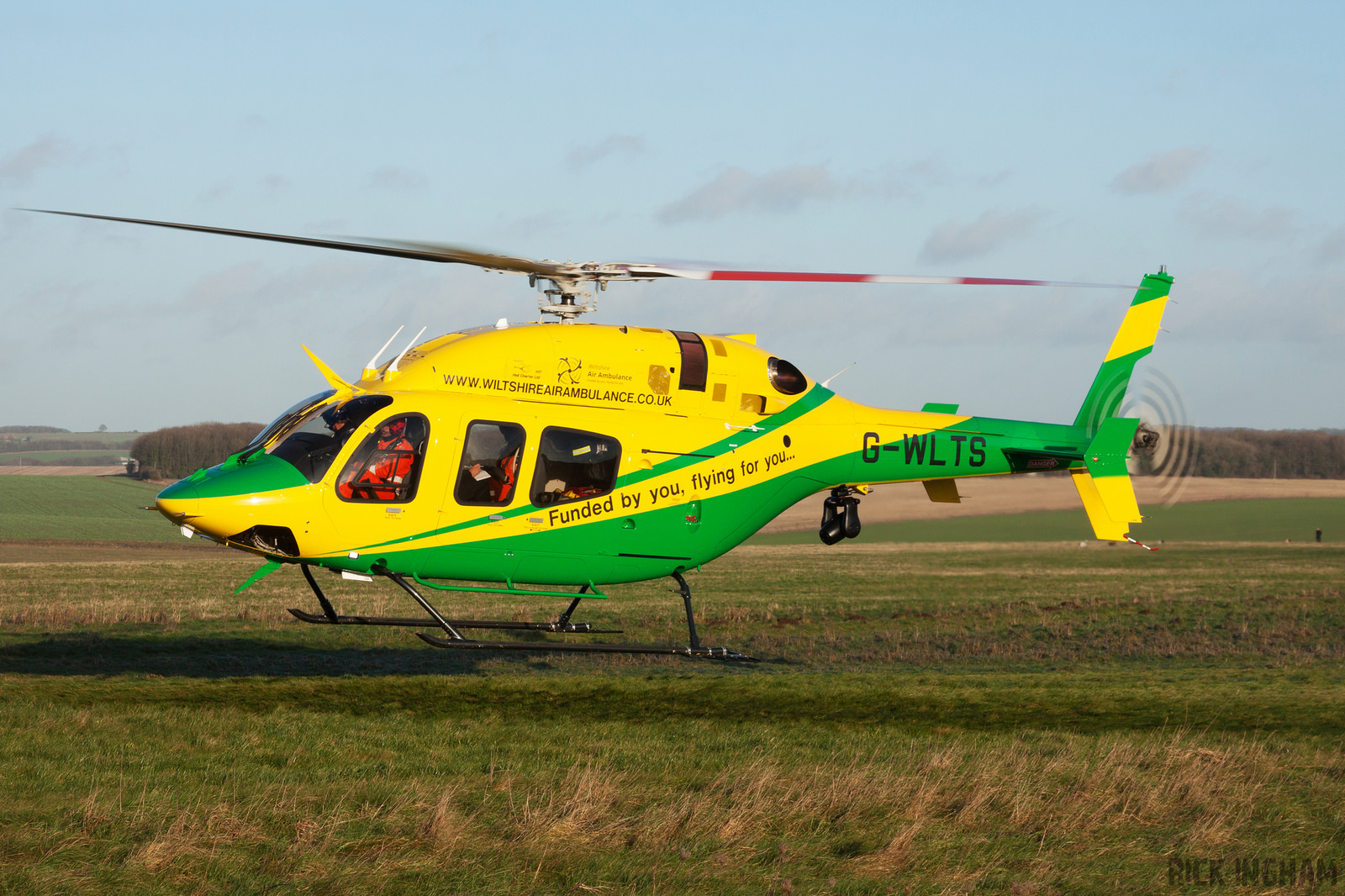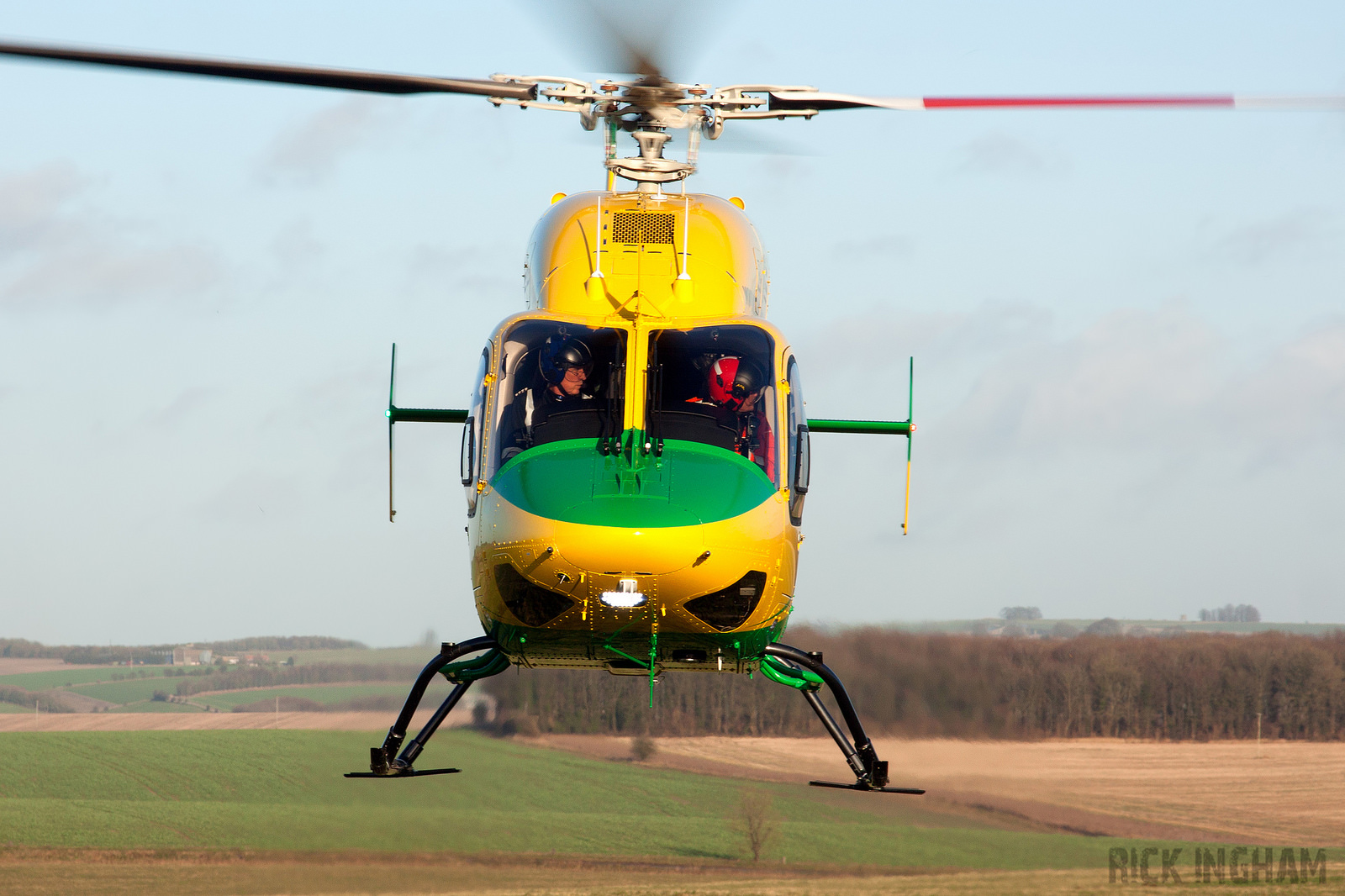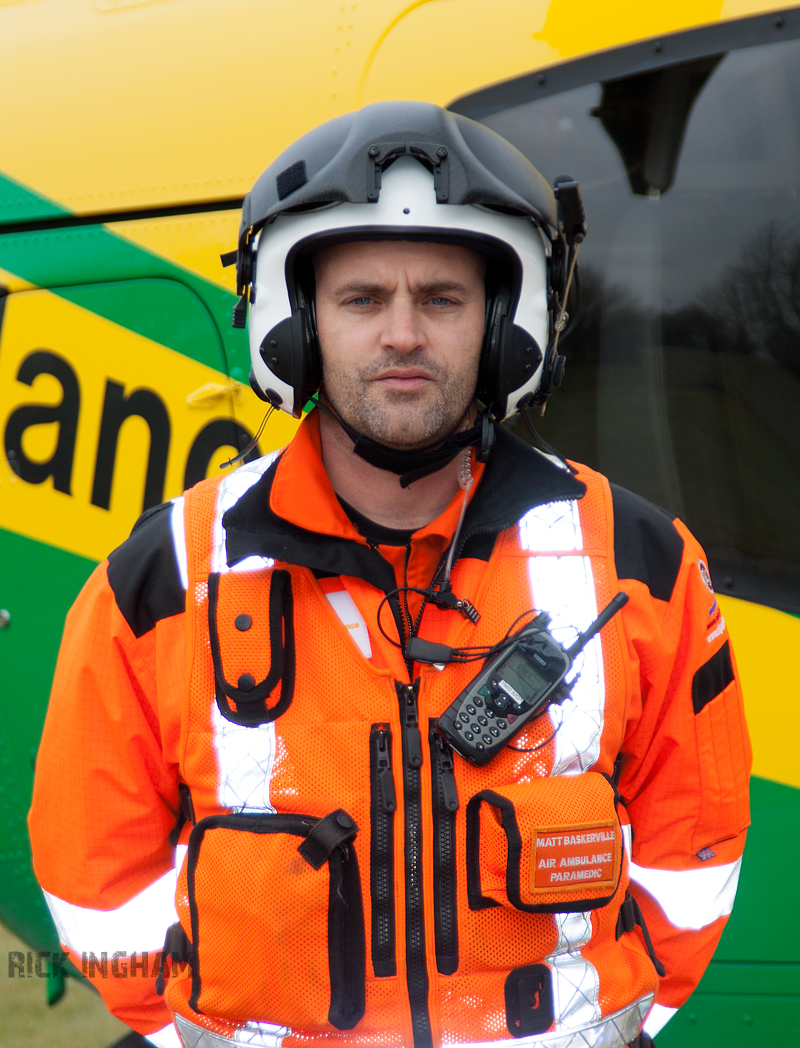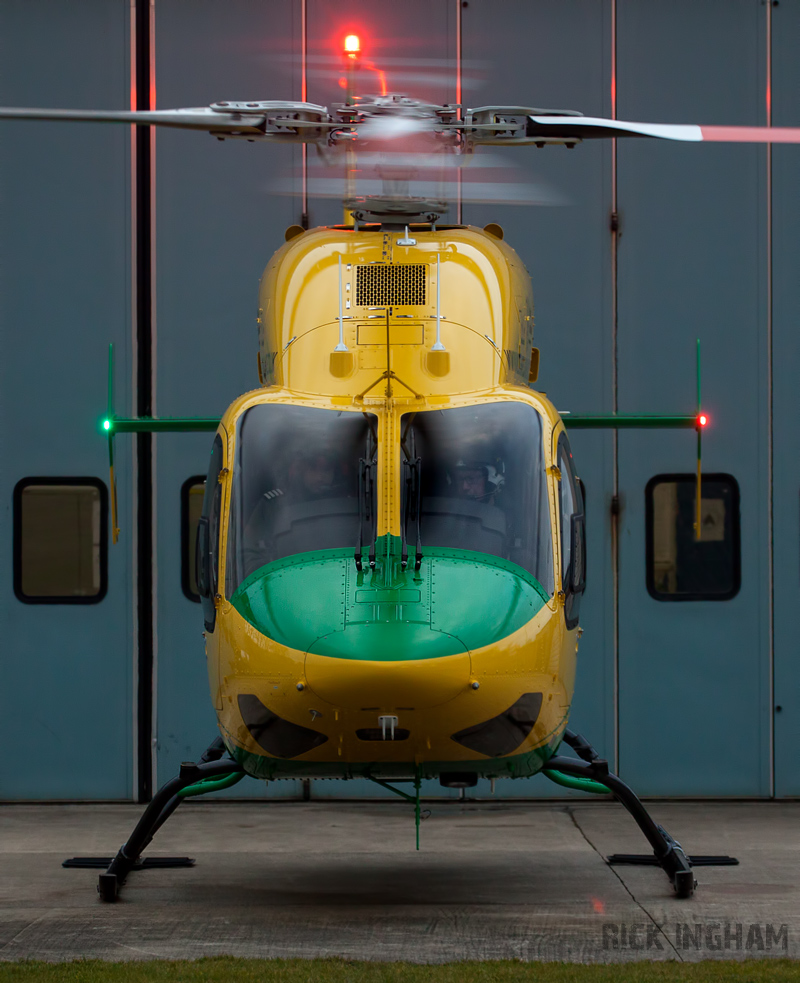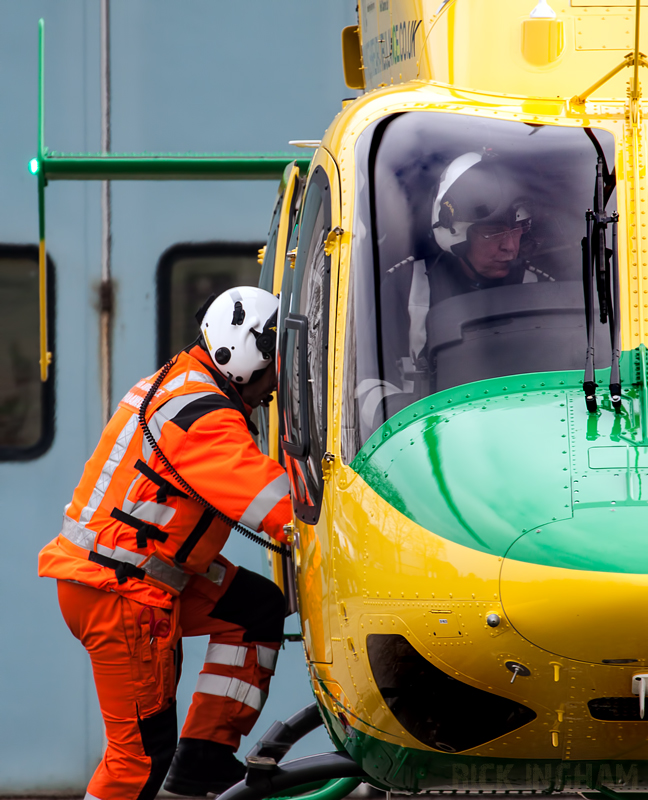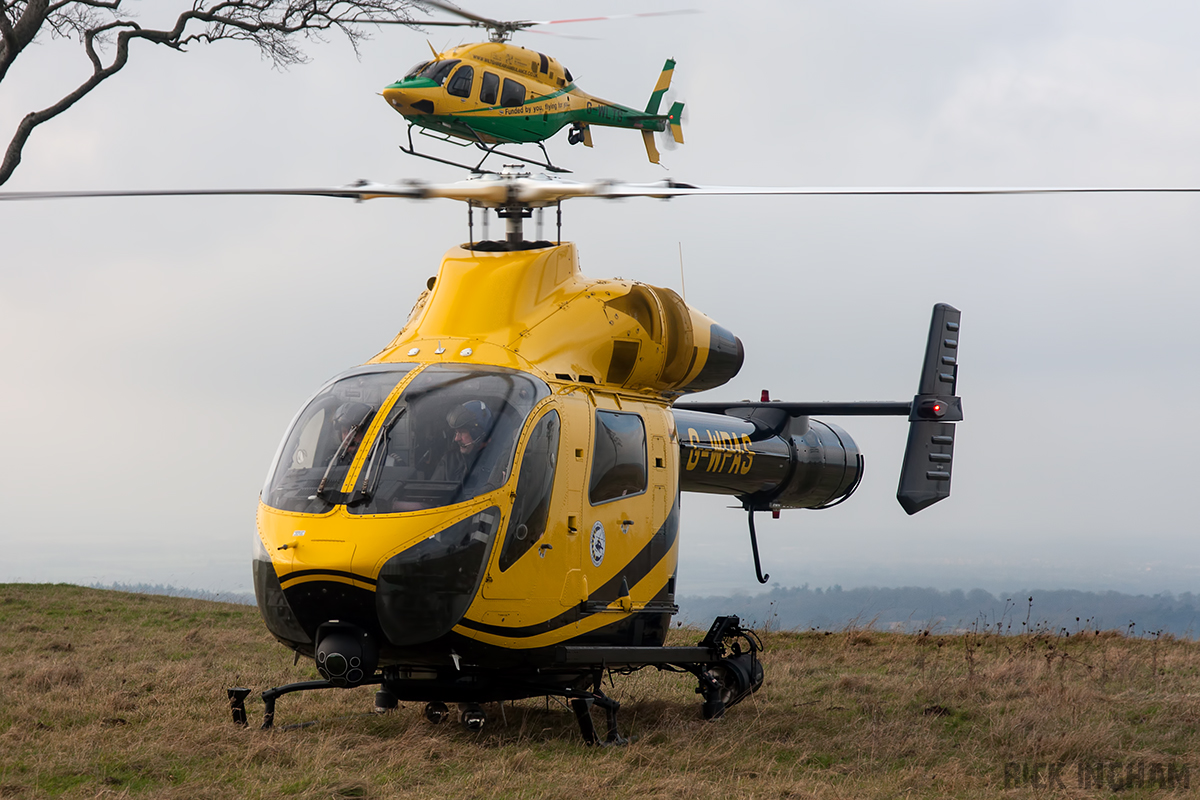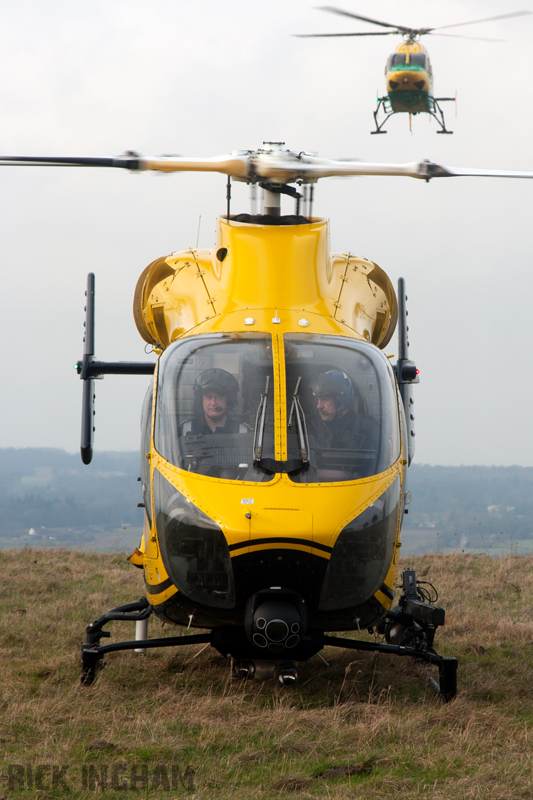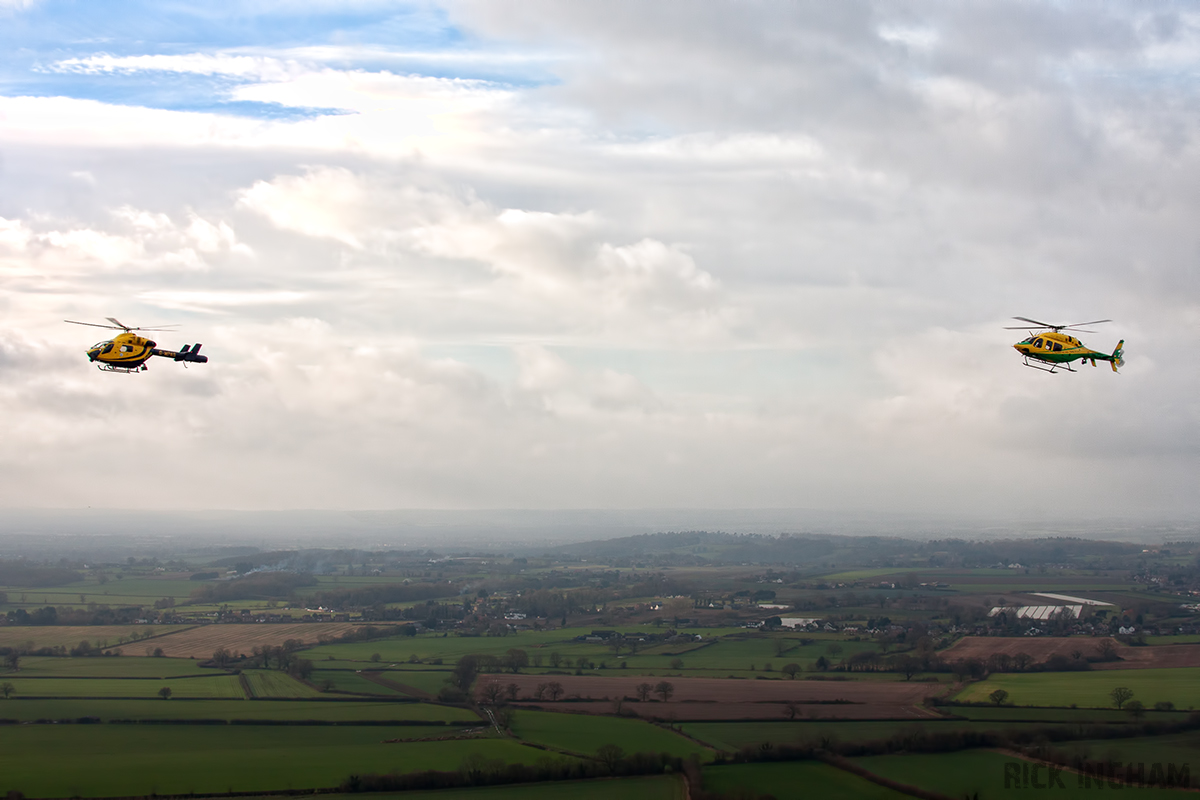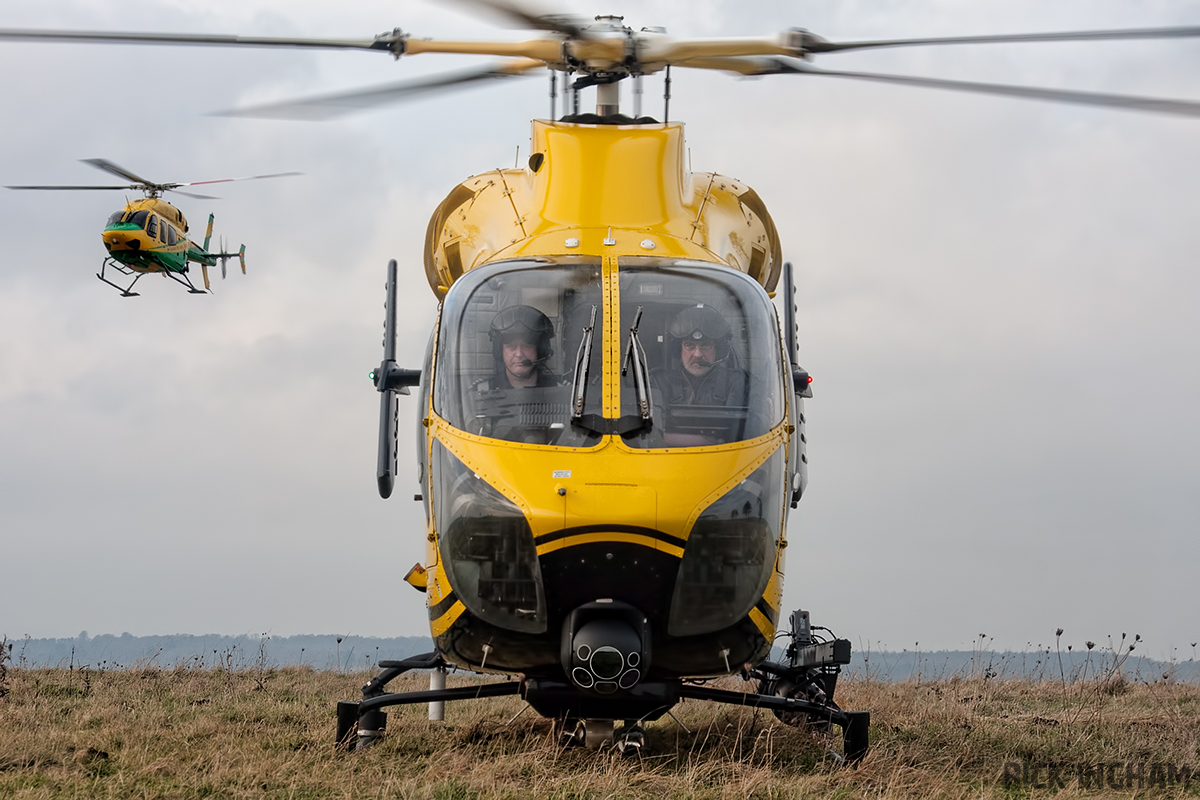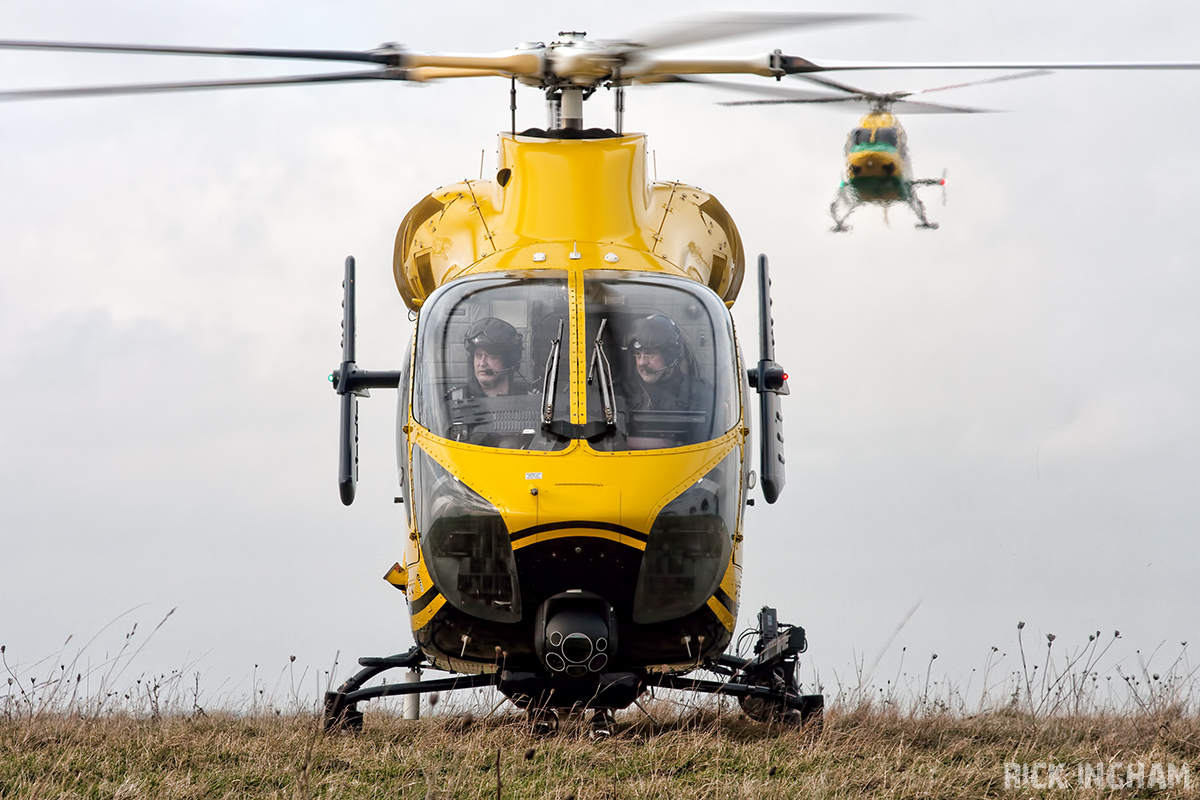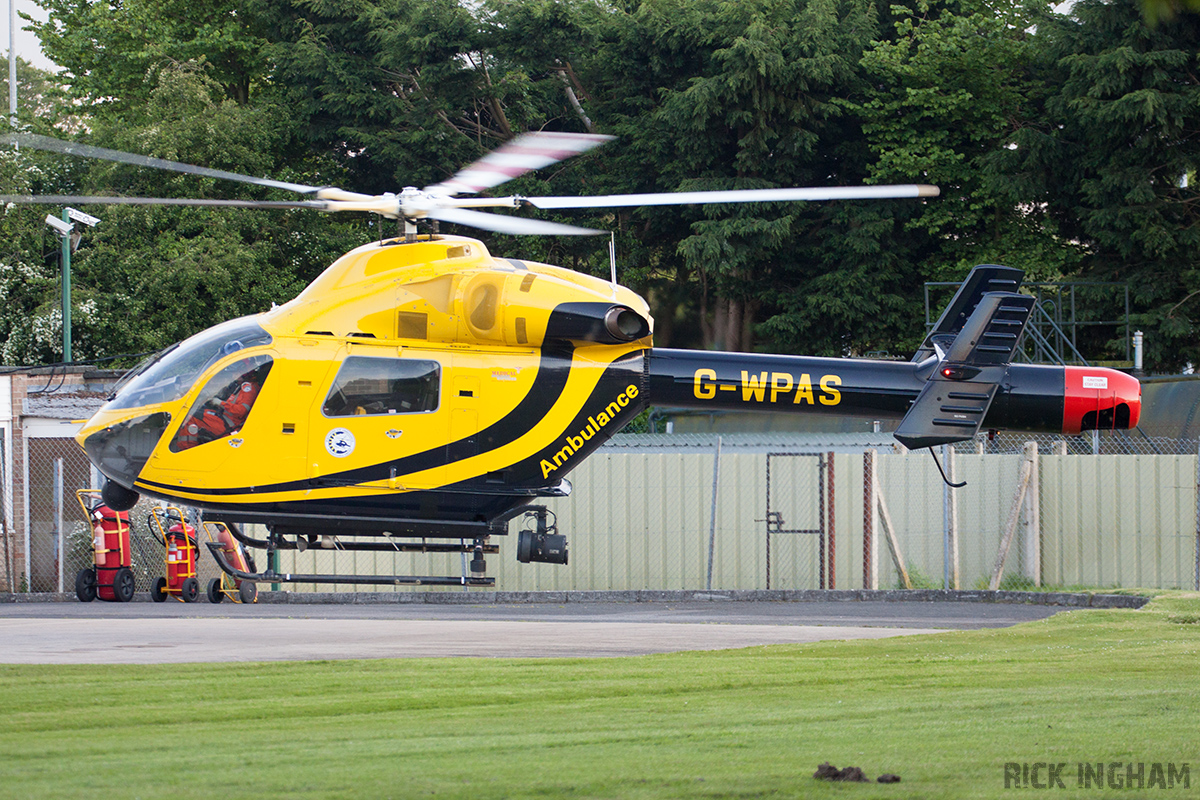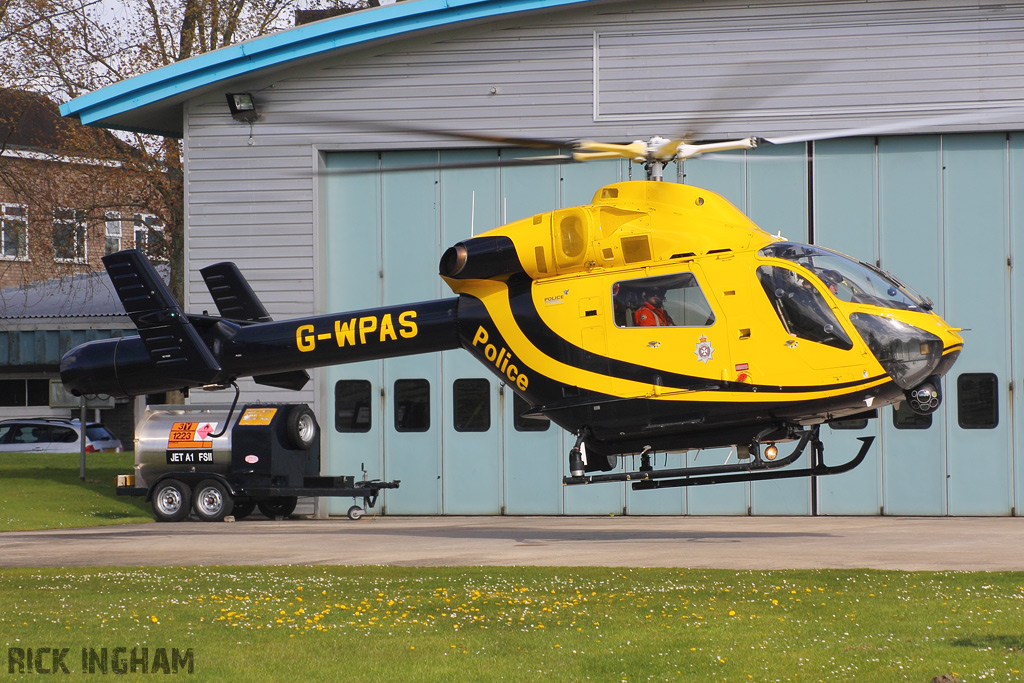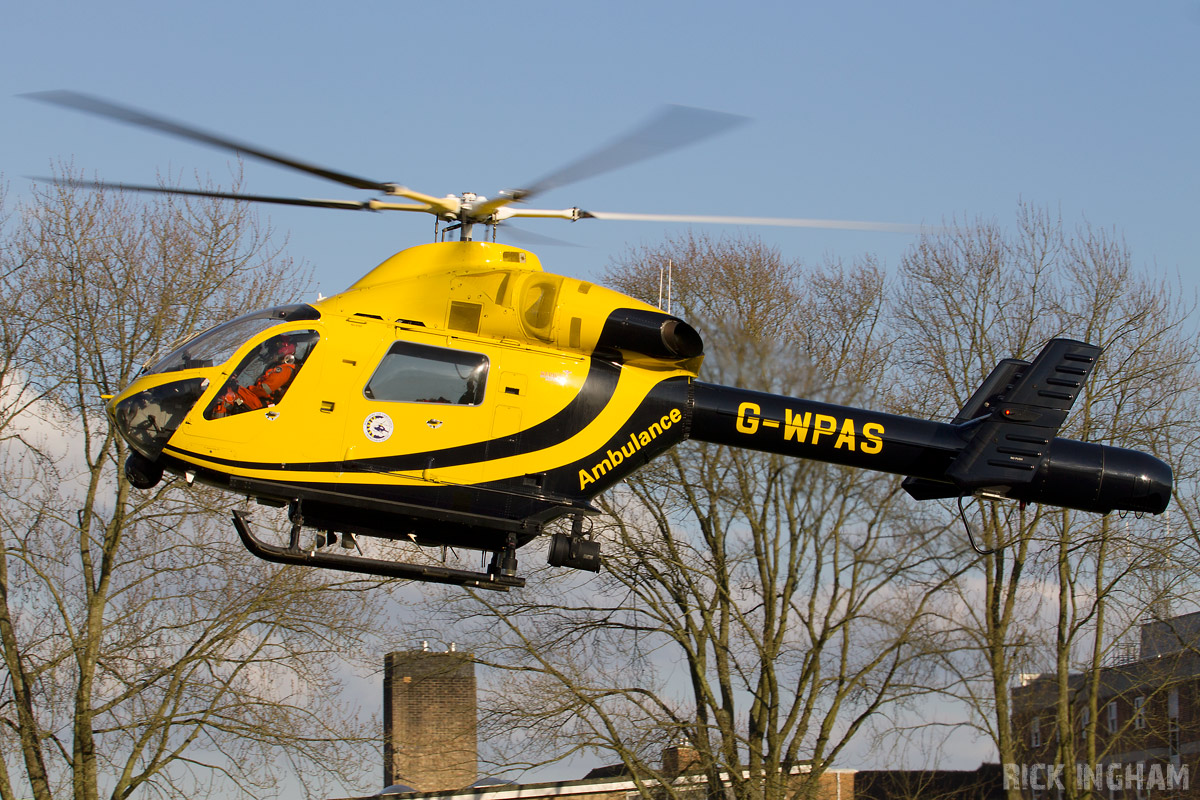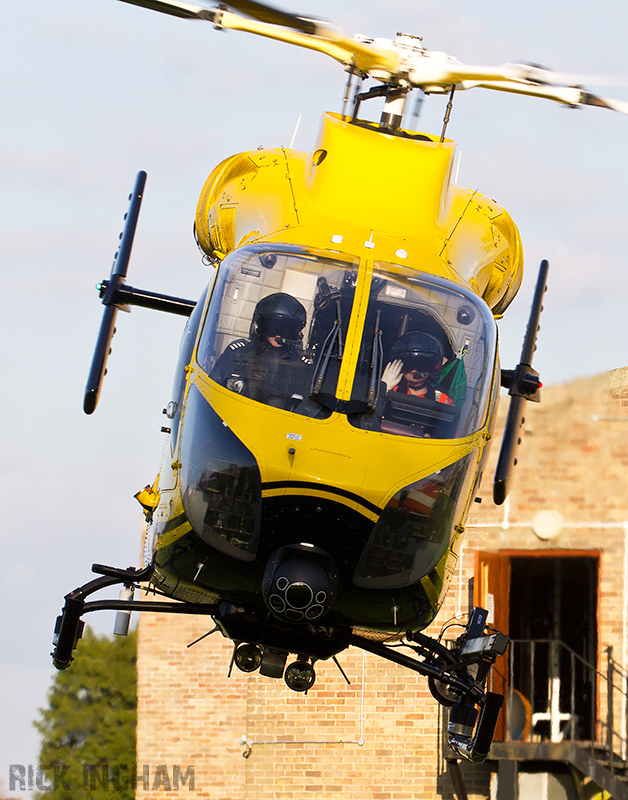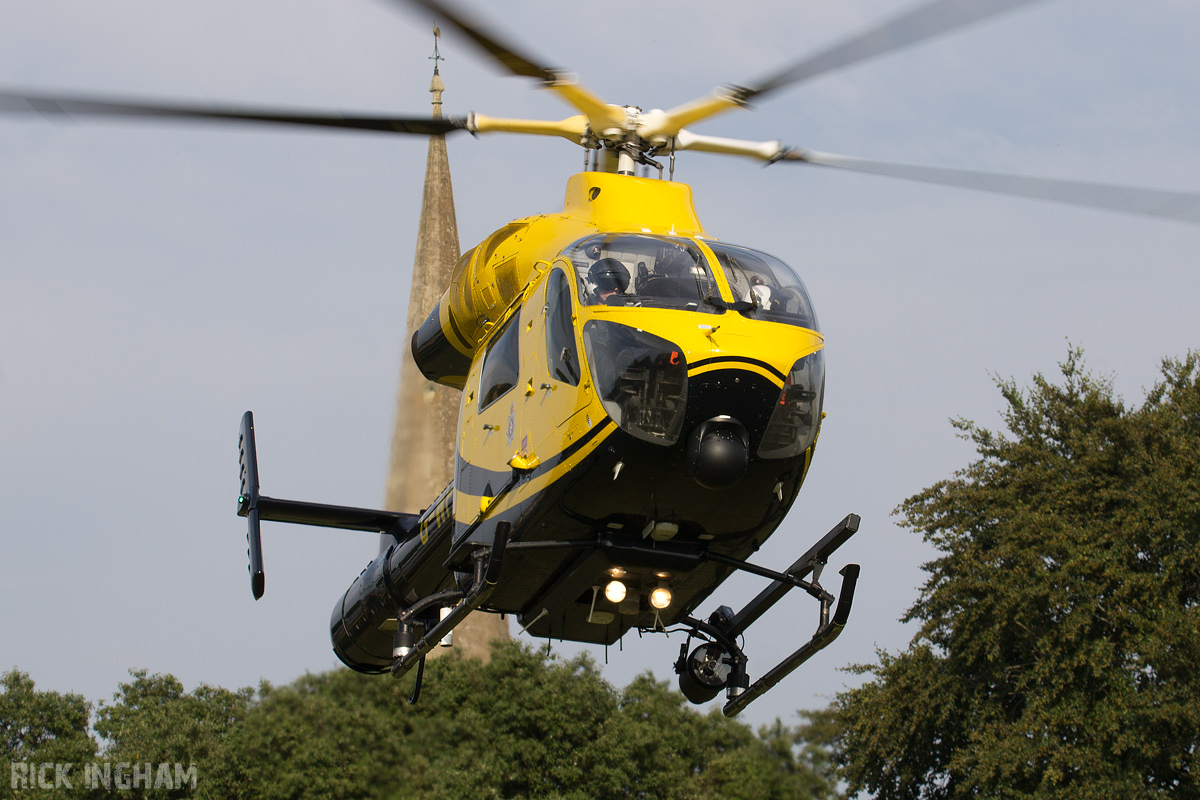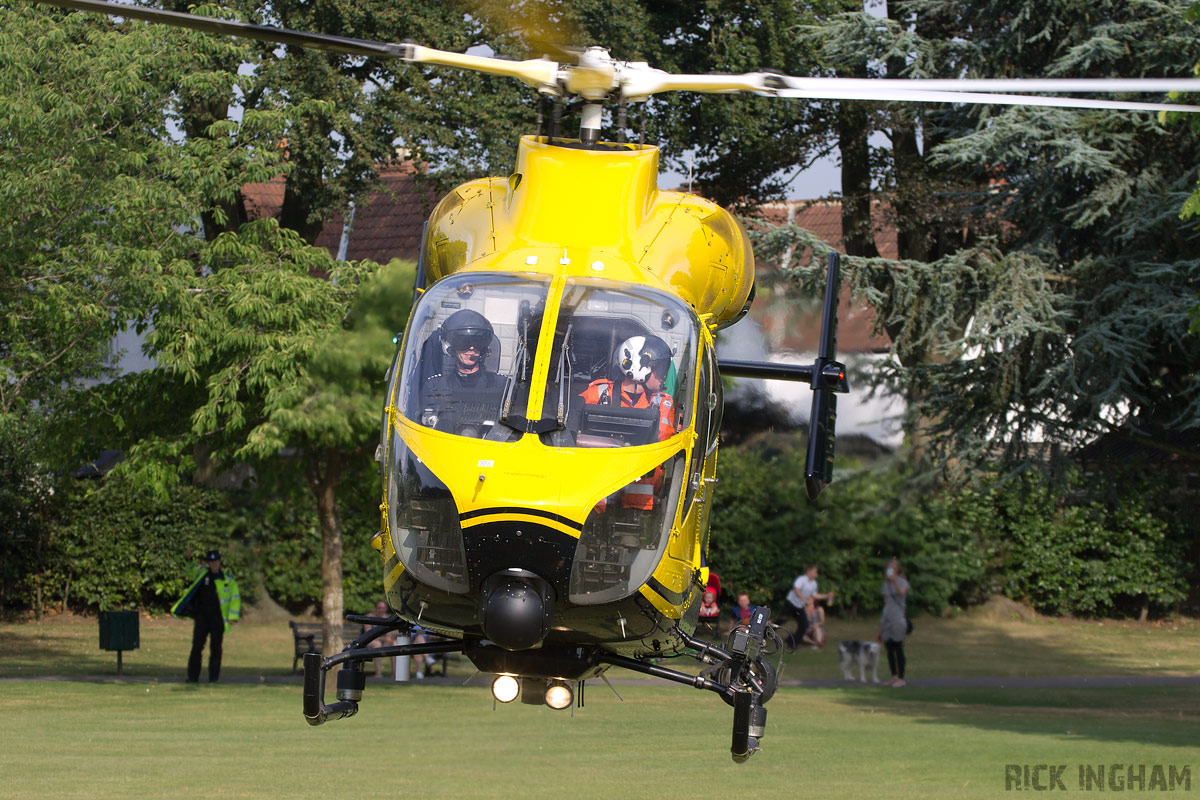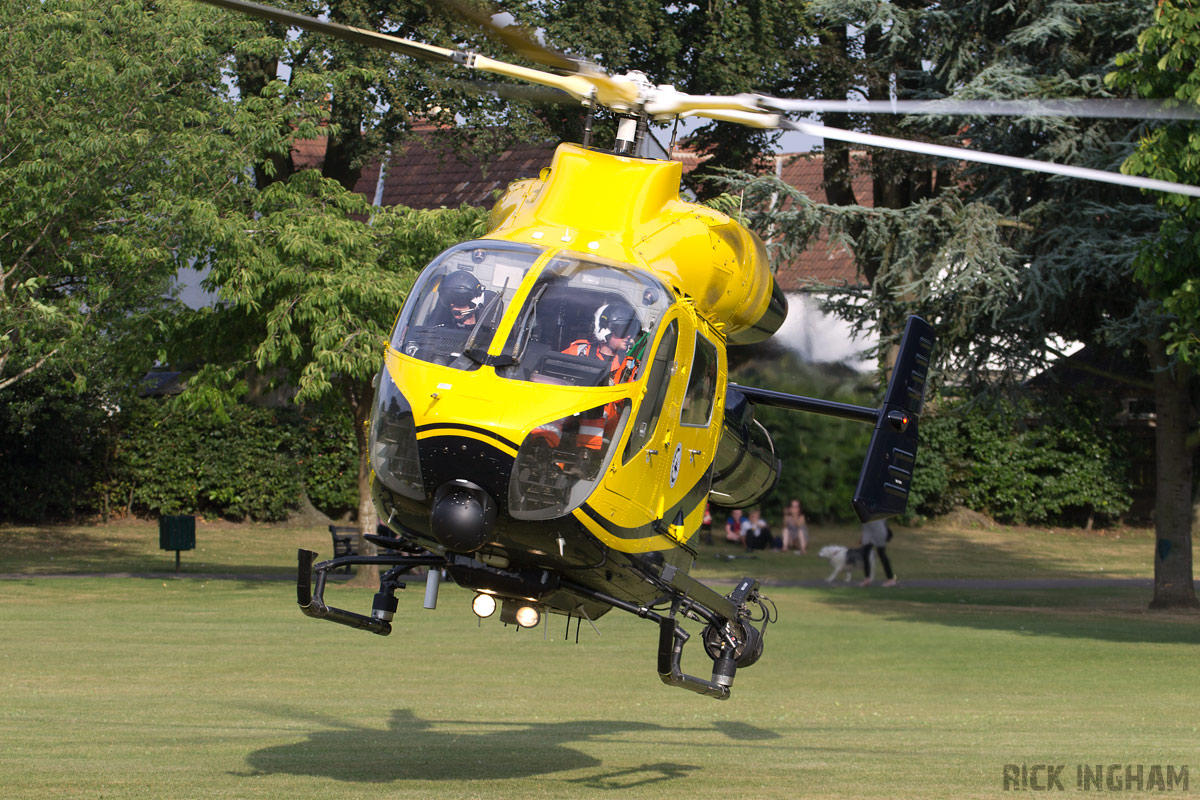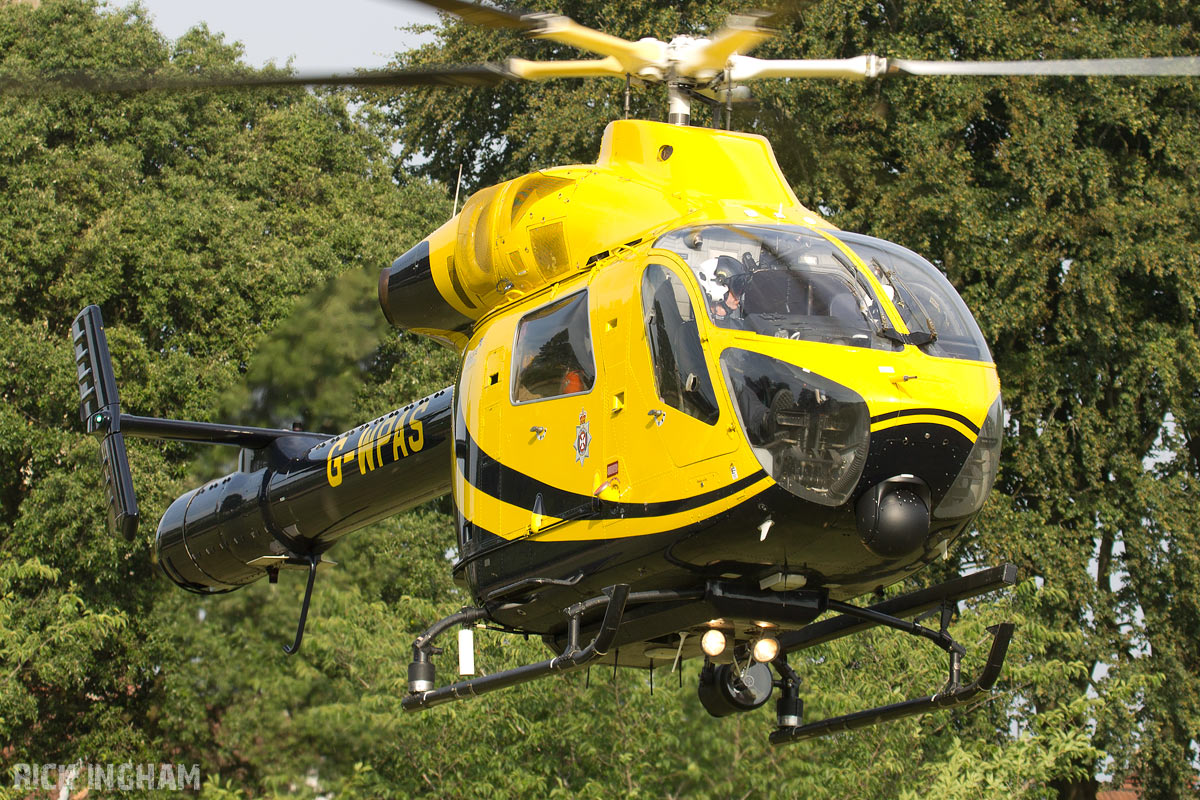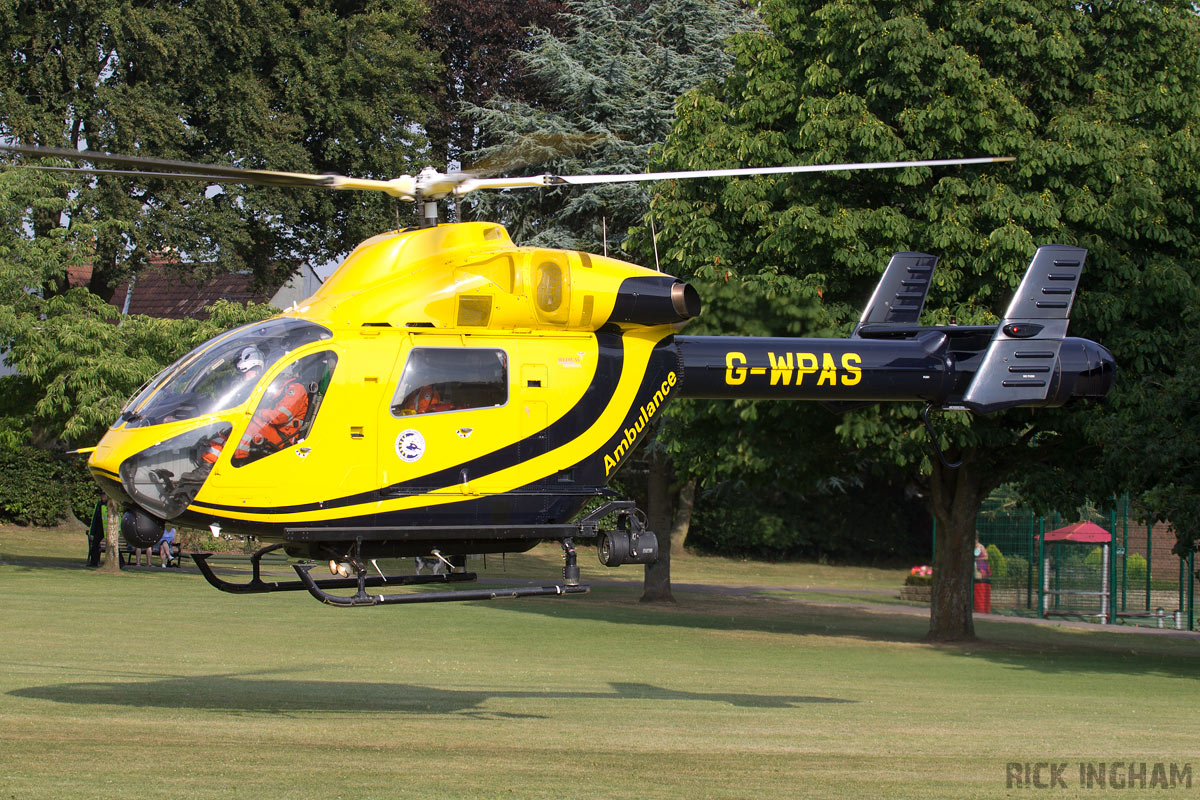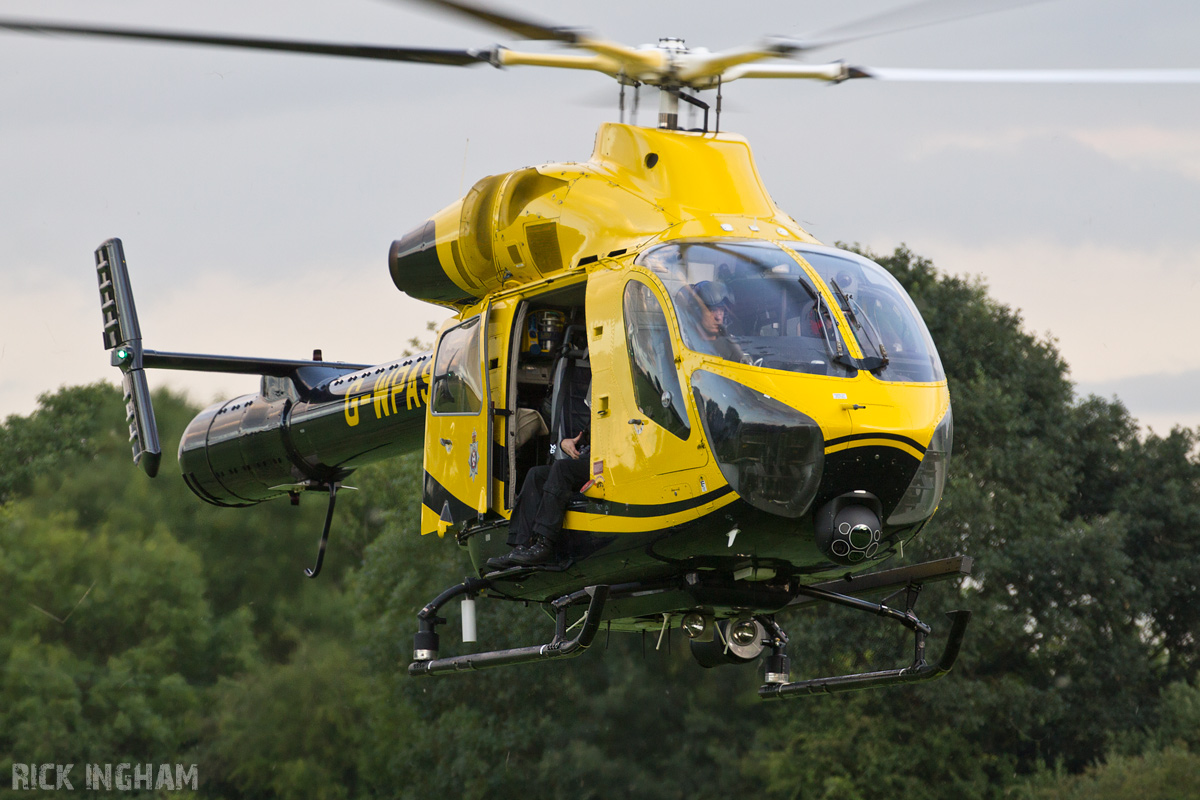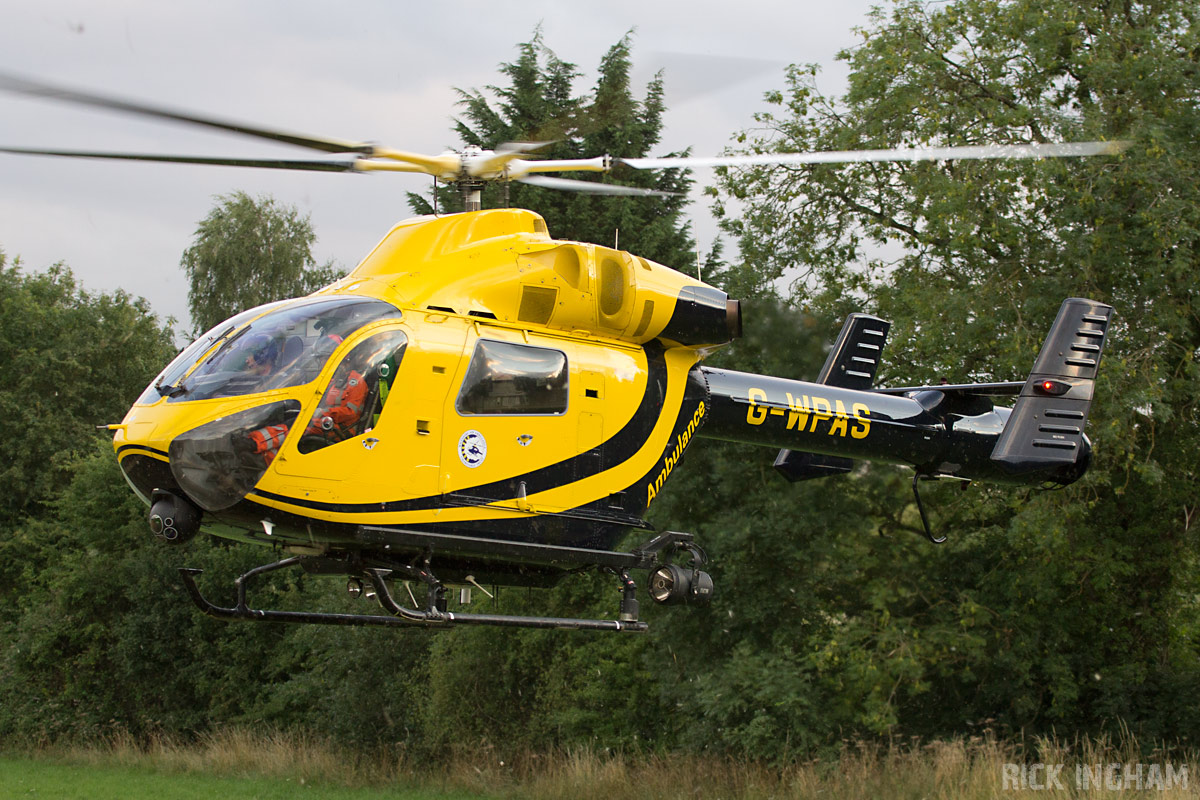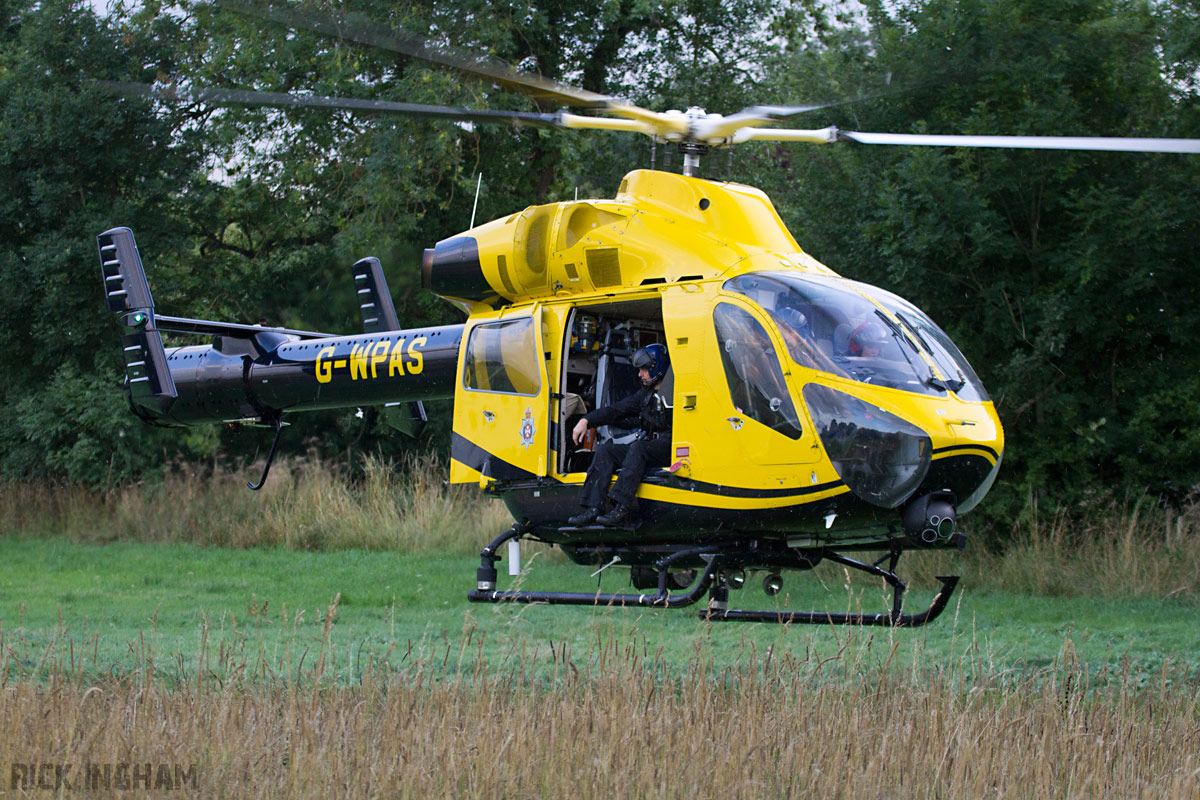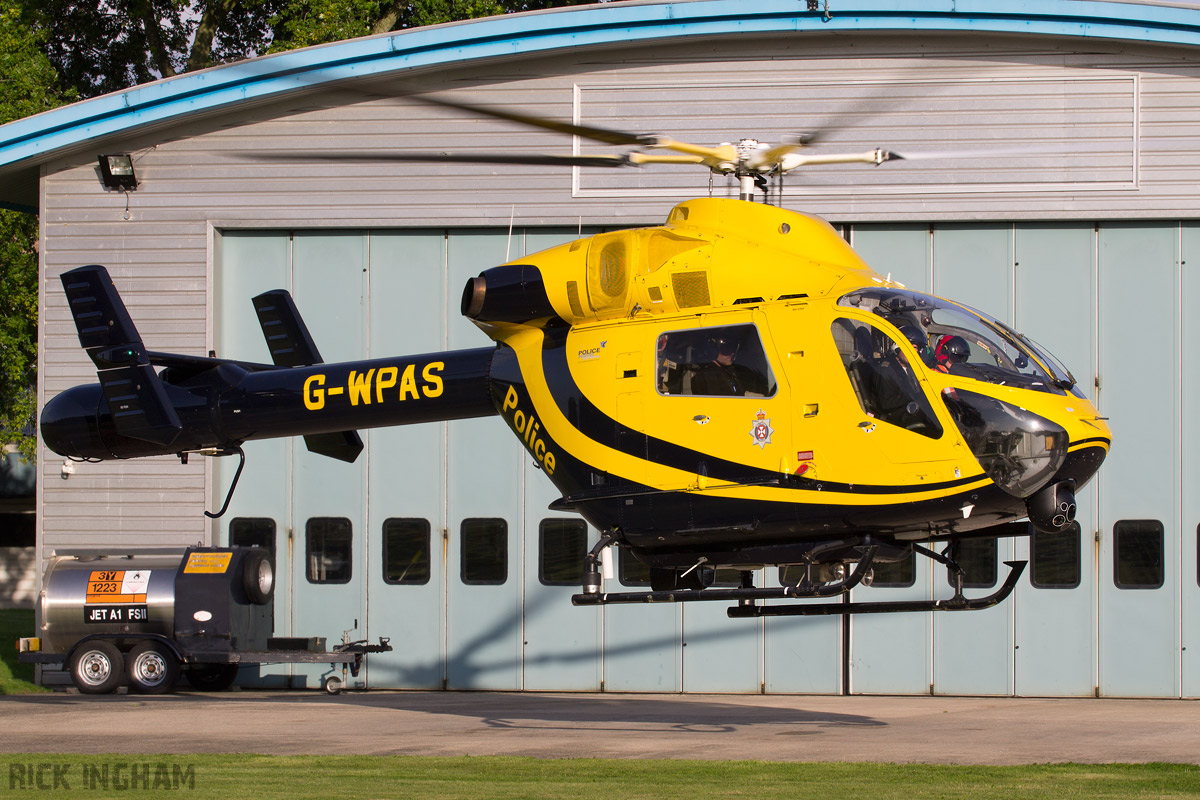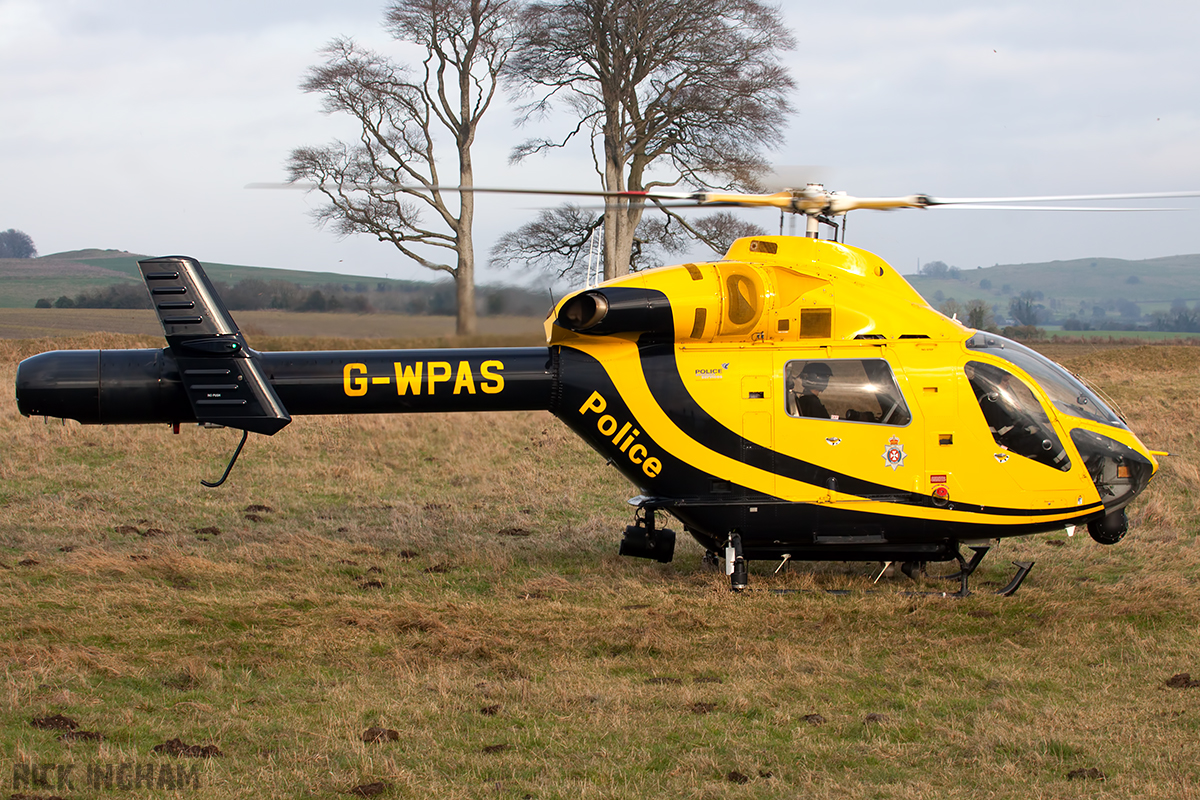Wiltshire’s Air Ambulance was the result of an agreement in 1990 between Wiltshire Police and the Great Western Ambulance Service as a way for medical assistance to come faster in rural areas by sharing a helicopter. The annual operating cost of £1.5 Million was provided by 66% of funding by Wiltshire Police and 33% by the Wiltshire Air Ambulance Charitable Trust. This 33% worked out to be around £700,000 required each year which came completely from public donations.
In October 2010 a proposal was put forward to reorganise the UK’s Police Helicopter fleet and resulted in the formation of The National Police Aviation Service (NPAS). This meant Wiltshire Constabulary’s air support would now come from NPAS’s Filton base in Bristol and would leave no helicopter at Devizes, meaning Wiltshire Air Ambulance would need to independently run a new helicopter unit.
Due to the loss of Police funding and personnel, the operating cost jumped from £700,000 to £3.25 million each year and a brand new helicopter had to be found.
Over a period of 18 months, the trust researched a variety of helicopters and operators across the UK and Europe to find the best option for Wiltshire.
On the 7th January 2014, Wiltshire Air Ambulance Charitable Trust signed an agreement with Bell-Textron’s UK Customer Support Facility (CSF) ‘Heli-Charter’ for a 10 year lease on a brand new Bell 429. 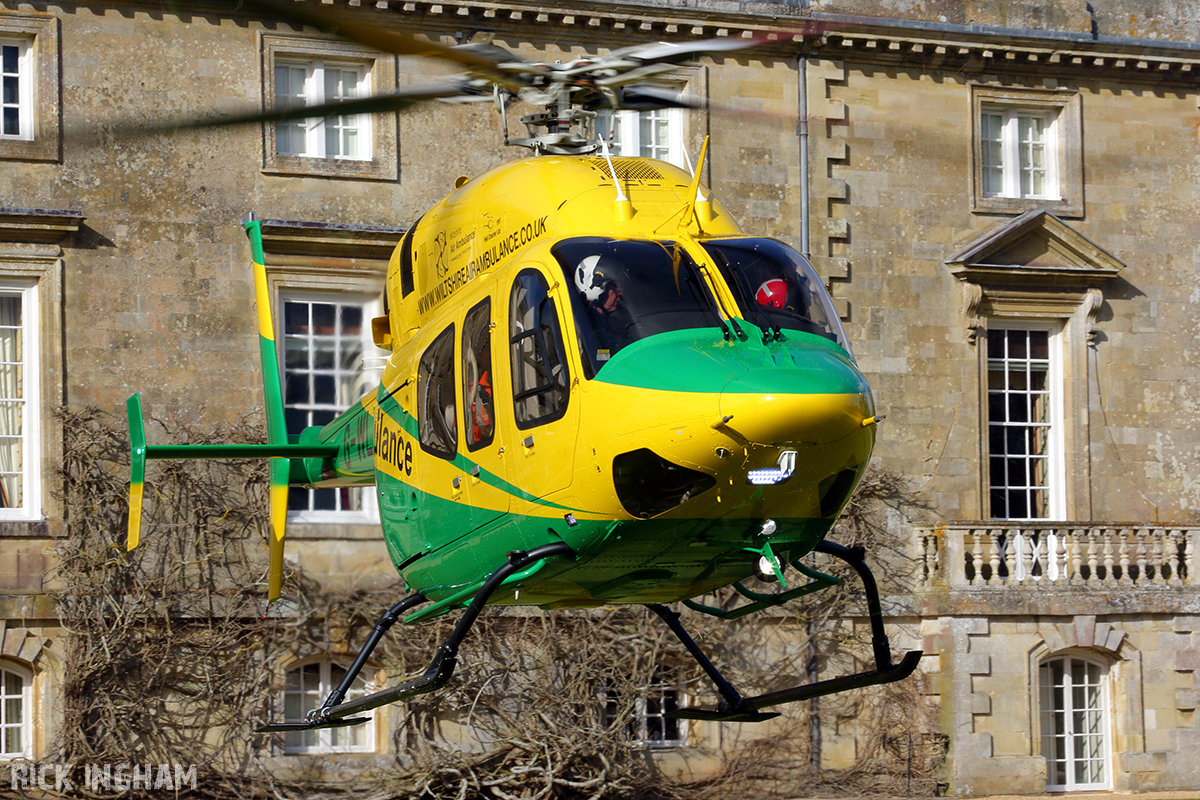
Apart from the obvious benefit of a very fast 150kt cruise speed, 400 mile range and spacious cabin, the Bell 429 is one of the most advanced light twin engined helicopters in the world.
The whole cockpit is designed so that a single pilot can fly in any weather and with a reduced workload. It’s glass cockpit comprises of Bell’s BasiX-Pro integrated avionics system with three Multi-Function Displays (MFDs), two GPS/COM/WAAS instruments consisting of a Garmin GNS-530W and a Garmin GNS-430W below it, whilst still having the redundancy back up instruments consisting of airspeed indicator, artificial horizon and altimeter.
To aid the pilot in poor weather, the Auto Pilot (AP) and Flight Director (FD) function in each of the Flight Control Computers (FCC) enable the pilot to select attitude hold, heading hold, heading select, airspeed hold, airspeed select, altitude hold, altitude select, vertical speed hold, and navigation modes to follow flight paths and approaches selected on the Garmin 430 Flight Management System. The Automatic Flight Control System (AFCS) also provides a Stability and control augmentation system (SCAS) function which cancels any undesired motion on all three axes which creates a much smoother flight. Using these systems, after lifting from an incident, Helimed 22’s pilot can climb to a cruising altitude towards a hospital, select altitude and heading hold and the Bell 429 will continue to fly without anymore required pilot inputs. This easing of workload enables the pilot to spend more time communicating with Air Traffic and planning the aircraft’s approach to the landing site.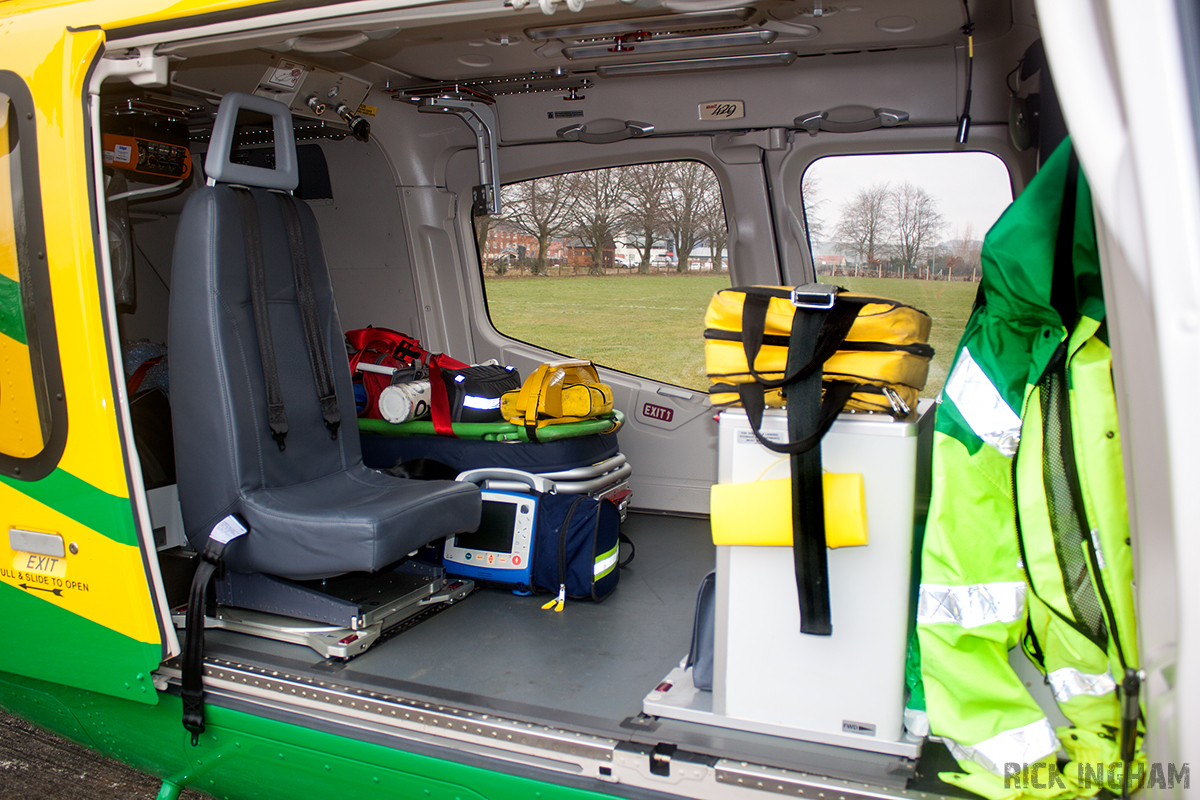
Bell learned a lot of lessons from it’s previous Bell 427 helicopter which had inadequate cabin space for HEMS (Helicopter Emergency Medical Service) operations. The 429 has roughly double the volume in the cabin, which makes it a very attractive aircraft for Air Medical Services all over the world. The 429 uses an Aerolite medical interior which comprises of state-of-the-art kit.
Three passengers can be transported on-board in addition to the patient, allowing various combinations such as 3 paramedics or 1 doctor and 2 paramedics or 2 paramedics and a patient’s relative. In most cases Wilitshire’s Air Ambulance opts for the 2 paramedics and 1 relative. One of the two paramedics sit in the front left seat to assist the pilot with checks and navigation whilst the other monitors the patient. The Bell 429 is capable of being configured to transport two patients, though this wouldn’t usually be beneficial to UK air ambulances in everyday scenarios.
Wiltshire’s Bell 429 now has the capability of flying at night, allowing 19 hours of operations a day. This is done by using a Trakka Beam moveable searchlight, which was firstly fitted under the tail but then repositioned to the nose. The searchlight is used in conjunction with a Night Vision Imaging System (NVIS) and Night Vision Goggles which enables easier landing at pre-determined night landing sites dotted around the county. The only reason the aircraft is restricted to pre-determined landing sites at night is the difficulty of seeing powerlines and sloping terrain through night-vision.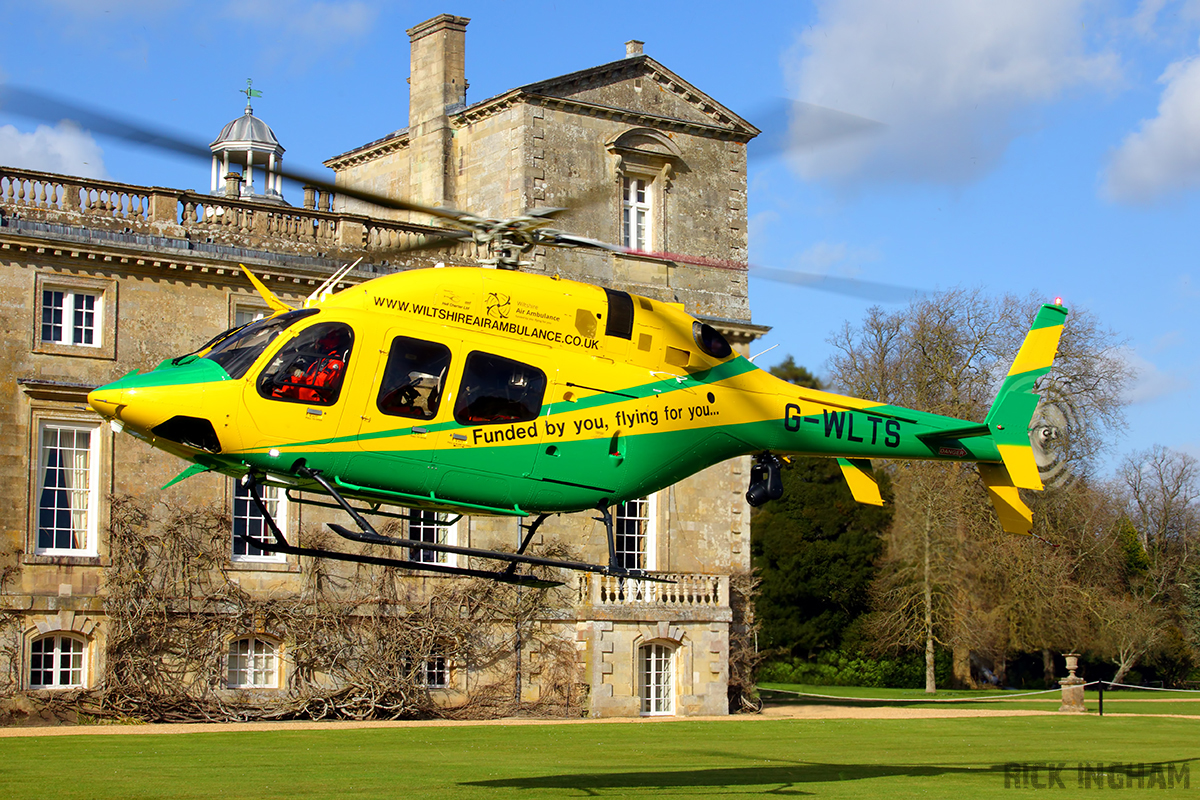
Due to the lease of the Devizes HQ coming to an end in December 2017, new land has been found to build a brand new Headquarters from scratch on farmland in Semington, near Trowbridge.
This new location, set to be built from Spring of this year, will mean the helicopter is just a maximum of 11 minutes from anywhere in the county and because the land will be purchased, money will be saved from leasing meaning a more stable future for the charity.
Offices are also currently being rented in Calne, which finishes in 2018. So by having the offices and the operational side all together, a much more efficient and cost effective operation can be conducted.

